TYPE DESIGN INFORMATION PAGE last updated on Fri Nov 14 12:40:15 EST 2025
FONT RECOGNITION VIA FONT MOOSE
|
|
|
|
|
Type design in India | ||
|
|
|
|
SWITCH TO INDEX FILE
Designer of Anek Tamil as part of Ek Type's award-winning family Anek (2022). Future Fonts link. [Google] [More] ⦿ | |
Graphic designer in Gargaon, India, who created the outlined My Comic Font in 2013 and the comic book typeface Oddball in 2017. [Google] [More] ⦿ | |
Communication designer in Mumbai, India. In 2011, he made an experimental modular typeface. [Google] [More] ⦿ | |
Thane, India-based designer of Third Font (2018), in cooperation with Monotype. The font was put up for sale to companies in exchange for a promise to hire at least one transgender (hijra). [Google] [More] ⦿ | |
Aakash Soneri
| |
Art director in New Delhi and Paris who created the illustrative New World Typeface (2012) and DaKali Font (2013). [Google] [More] ⦿ | |
Mumbai, India-based designer of the free thin decorative sans typeface Nune (2017). [Google] [More] ⦿ | |
Designer of the Indic versions of Oli Grotesk (2019, Typotheque), a typeface family by Shiva Nallaperumal. They plan to support all the writing scripts of India (Devanagari, Bangla, Gujarati, Gurmukhi, Urdu, Oriya, Tamil, Malayalam, Telugu and Kannada) in the same wide range of weights as its Latin fonts. In 2017, he designed Pramukh (commercial at Fontstore) and Pramukh Rounded (free at Fontshare), a rounded condensed sans family in 16 styles. Bevellier (2019-2021; by Arya Purohit and Barbara Bigosinska) is a 16-style (+variable) rounded condensed organic sans family. [Google] [MyFonts] [More] ⦿ | |
New Delhi, India-based designer of the decorative caps alphabet Temples of India (2016) and the ancient column and doorway-inspired Ellora (2017, named after Aurangabad's Ellora Caves). [Google] [More] ⦿ | |
Mumbai-based creator of the multiline typeface Fragile (2012). Behance link. [Google] [More] ⦿ | |
Ludhiana, India-based designer of the Devanagari font Devnaigi Rustic (2017) and the modular Latin typeface Fontstruct (2017). [Google] [More] ⦿ | |
At National Institute of Fashion Technology, Mumbai-based Aastha Deshpande designed a blackletter Latin typeface in 2019. [Google] [More] ⦿ | |
| |
Font generation service located in Mumbai, India. [Google] [More] ⦿ | |
New Delhi-based designer of the display typeface Spoon (2017). [Google] [More] ⦿ | |
Mumbai, India-based designer of a custom deco typeface in 2018. [Google] [More] ⦿ | |
Abhijit Das published the Bengali text editor in the 1990s. He also had several free Bengali PostScript fonts. In addition, he offered software for using Bengali in TEX and has Bengali X11 screen fonts. At that time, he was with the Department of Computer Science and Automation, Indian Institute of Science, Bangalore. [Google] [More] ⦿ | |
| |
During her graphic design studies at anasthali Institute of Design, Abhilasha Miglani (Jaipur, India) created these typefaces: Green (2014, curly, organic), Banking (2014). [Google] [More] ⦿ | |
During her studies in New Delhi, Abhirami Rao created a modular Latin typeface (2013-2015). [Google] [More] ⦿ | |
Abhishek Junghare
| |
| |
Indian designer of the free font Together (2018). [Google] [More] ⦿ | |
Abhishek Sanjapogu (Hyderabad, India) designed the squarish Latin typeface Crane in 2016. Behance link. [Google] [More] ⦿ | |
Hyderabad, India-based creator of Softhand (2010, hand-printed), which can be bought here. [Google] [More] ⦿ | |
Type designer from Hyderabad, India, b. 1988, Hyderabad. He created the slightly creepy Latin handwriting typeface The Demon Font (2011). His foundry is also called Kalaam. [Google] [MyFonts] [More] ⦿ | |
ItxBeng (Bengali, 1997), ItxGuj (Gujarathi, 1997, by Shrikrishna Patil), NCS_CSX+ (URW's Sanskrit, 1994), Xdvng (1997). [Google] [More] ⦿ | |
Pathanamthitta, Kerala-based designer of the organic monolinear sans typeface Adarsh Sans (2021). [Google] [More] ⦿ | |
Bangalore, India-based art director. In 2014, he made a great experimental hybrid typeface. In 2015, he added the display typeface Whitecap. [Google] [More] ⦿ | |
Mumbai-based designer of the modular typeface Mechanika (2013). [Google] [More] ⦿ | |
Mumbai-based designer of the free modular typeface Phantasm (2014). Behance link. [Google] [More] ⦿ | |
Pune, India-based designer in 2016 of a Devanagari typeface that is based on Bookman Old Style. [Google] [More] ⦿ | |
During her studies in Pune, India, Aditi Kapre designed the modular sans typeface Subtle (2016). [Google] [More] ⦿ | |
Bangalore, India-based designer of a colorful set of capitals in 2015. [Google] [More] ⦿ | |
Art director in Mumbai. Designer of the wavy display typeface Graffica (2017) and the bold poster typeface Dogma (2017). [Google] [More] ⦿ | |
New Delhi, India-based designer of the video game font Pixa (2015). [Google] [More] ⦿ | |
Bangalore, India-based creator of Bombay Dyeing (2014), a strong sans headline typeface that was developed from the ten letters in the original Bombay Dyeing logo. Behance link. [Google] [More] ⦿ | |
Hindi fonts: Agra, Agra-Bold (Ly's, 1996), DV-TTYogesh-Bold, DV-TTYogesh-Normal (C-DAC, Pune, 1992). [Google] [More] ⦿ | |
Indic typeface archive: Has ArialUnicodeMS (2000) and DevLys 050 (1997). [Google] [More] ⦿ | |
Brand identity designer in Kochi, India, who published the modular typeface Highlux in 2018. [Google] [More] ⦿ | |
Aim Type
| Saurabh Sharma (b. 1982) is a graphic and web designer in Udaipur, Rajasthan, India. He created the nice rounded organic sans typeface Lead (2010). Designer of the free geometric asans Google font family Kumbh Sans (2020). Typefaces from 2021: Cause, Cause Variable (a variable weight monolinear rounded sans font with a comic book appeal). Github link. [Google] [MyFonts] [More] ⦿ |
Mumbai, India-based designer of a Latin display typeface in 2018. [Google] [More] ⦿ | |
During her studies at MIT Institute of Design in Pune, India, Aishwarya Navale designed the modular squarish typeface Sleek (2016). [Google] [More] ⦿ | |
Bangalore, India-based designer of two experimental alphabets in 2018, Kuroro and Hyuga. [Google] [More] ⦿ | |
The Ajeet Mestry Foundry is located in Thane, Maharashtra. Behance link. [Google] [MyFonts] [More] ⦿ | |
One Hindi truetype font by Satish Upadhye (1999). [Google] [More] ⦿ | |
Designer at Open Font library of Sgangal (2008), a font for Hindi and Marathi. [Google] [More] ⦿ | |
Chartered accountant. Designer (b. 1993, Kerala, India) of Orust (2010, "rusty" grungy face), AjiHand (2011), Ugran (2013), Ambambo (2013, brushy caps), Aesthetica (2013, prismatic), Dingy Bird (2013, a great grungy brushy script), and Chisel Script (2010), Rough Treatment (2014). Old URL. Dafont link. Aka Ajith Rindia. | |
Vadadora, India-based creator of Papercut (2014), a counterless alphabet made by cutting out letters. [Google] [More] ⦿ | |
During his studies at the MIT Institute of Design in Pune, India, Akash Jain created the display typeface Gola (2016). [Google] [More] ⦿ | |
Nagpur, India-based designer of the stencil typeface Edge (2016) and the hexagonal typeface Hex (2016). In 2017, he designed the techno typeface Curved. Behance link. [Google] [More] ⦿ | |
Mumbai-based graphic designer who created the high-contrast typeface Panache in 2013. [Google] [More] ⦿ | |
Akhilesh Gupta
| |
Pune, India-based designer of the zen garden Tamil typeface Karkkal (2017). [Google] [More] ⦿ | |
Akshar Pathak (New Delhi) the Devanagari typeface Ujagar, named after his grandfather Trilok Ujagar, in 2013. Behance link. [Google] [More] ⦿ | |
Indic language software, with some commercial fonts. A free Unicode font, aksDeva. [Google] [More] ⦿ | |
| |
As a student in Baroda, India, Akshata Desai created the typeface Jigsaw (2016). [Google] [More] ⦿ | |
Lithuanian professor at the University of Vilnius who in 1997-1998, together with Petras Skirmantas, created the Lithuanian fonts Fontra1italic, Fontra2italic, Fontra3italic, Fontra4italic, Fontra5italic, Fontra6italic, Fontra7italic, Fontra8italic, Fontra9italic, IndoBalt-0-italic, IndoBalt-1-italic, IndoBalt-2-italic, IndoBalt-3-italic, IndoBalt-4-italic, IndoBalt-5-italic, IndoBalt-6-italic, Fontra0italic, Fontra0Normal, Fontra1Normal, Fontra2Normal, Fontra3Normal, Fontra4Normal, Fontra5Normal, Fontra6Normal, Fontra7Normal, Fontra8Normal, Fontra9Normal. These fonts were designed for (phonetic) transcriptions of Indo-Baltic languages. [Google] [More] ⦿ | |
During her studies, Alisha K (Sambalpur, India) designed the Latin display typeface D Font (2016). [Google] [More] ⦿ | |
Free Windows truetype Sindhi fonts developed by Abdul Latif Memon and Abdul Qadeer Memon. See also here. [Google] [More] ⦿ | |
During his studies at the National Institute of Fashion Technology in Hyderabad, India, Alok Bhoi drew a nice typographic bike (2015). [Google] [More] ⦿ | |
Alphabetum
| Juan-José Marcos García (b. Salamanca, Spain, 1963) is a professor of classics at the University of Plasencia in Spain. He has developed one of the most complete Unicode fonts named ALPHABETUM Unicode for linguistics and classical languages (classical&medieval Latin, ancient Greek, Etruscan, Oscan, Umbrian, Faliscan, Messapic, Picene, Iberic, Celtiberic, Gothic, Runic, Modern Greek, Cyrillic, Devanagari-based languages, Old&Middle English, Hebrew, Sanskrit, IPA, Ogham, Ugaritic, Old Persian, Old Church Slavonic, Brahmi, Glagolitic, Ogham, ancient Greek Avestan, Kharoshti, Old Norse, Old Icelandic, Old Danish and Old Nordic in general, Bengali, Hindi, Marathi, Phoenician, Cypriot, Linear B with plans for Glagolitic). This font has over 5000 glyphs, and contains most characters that concern classicists (rare symbols, signs for metrics, epigraphical symbols, "Saxon" typeface for Old English, etcetera). A demo font can be downloaded [see also Lucius Hartmann's place]. His Greek font Grammata (2002) is now called Ellenike. He also created a package of fonts for Latin paleography (medieval handwriting on parchments): Capitalis Elegans, Capitalis Rustica, Capitalis Monumentalis, Antiqua Cursiva Romana, Nova Cursiva Romana (2014), Uncialis, Semiuncialis, Beneventana Minuscula, Visigothica Minuscula, Luxoviensis Minuscula, Insularis Minuscula, Insularis Majuscula, Carolingia Minuscula, Gothica Textura Quadrata, Gothica Textura Prescissa, Gothica Rotunda, Gothica Bastarda, Gothica Cursiva, Bastarda Anglicana (2014) and Humanistica Antiqua. PDF entitled Fonts For Latin Palaeography (2008-2014), in which Marcos gives an enjoyable historic overview. Alphabetum is not Marcos's only excursion into type design. In 2011, he created two simulation fonts called Sefarad and Al Andalus which imitate Hebrew and Arabic calligraphy, respectively. Cyrillic OCS (2012) is a pair of Latin fonts that emulate Old Church Slavonic (old Cyrillic). In 2013, he created Cuneus, a cuneiform simulation typeface. Paleographic fonts for Greek (2014) has ten fonts designed by Marcos: Angular Uncial, Biblical Uncial, Coptic Uncial, Papyrus Uncial, Round Uncial, Slavonic Uncial, Sloping Uncial, Minuscule IX, Minuscule XI and Minuscule XV. These fonts are representative of the main styles of Greek handwriting used during the Classical World and Middle Ages on papyrus and parchments. There is also a short manual of Greek Paleography (71 pages) which explains the development of Greek handwriting from the fourth century B.C. to the invention of printing with movable type in the middle of the fifteenth A.D. He wrote a text book entitled History of Greek Typography: From the Invention of Printing to the Digital Age (in Spanish; second edition, 2018). See also here and here. [Google] [More] ⦿ |
India-based designer of the monolinear unicase display sans typeface Peyton Display (2021). In 2022, he designed Vista Nordic (an 19-style wide minimalist sans), Blandit (all caps, for posters and displays), Vista Morgan Sans (18 styles, released at Vista Type), the 8-style Hawker Display, a rounded slab serif. [Google] [MyFonts] [More] ⦿ | |
Coimbatore, India-based student-designer of the bike-inspired typeface Psyclopath (2014). [Google] [More] ⦿ | |
Designer in Ahmedabad, India. In 2012, he mixed the shapes of Bauer Bodoni Italic with those of Urdu Naskh Asiantype to create a didone-style Urdu typeface. [Google] [More] ⦿ | |
Ami Shah (Mumbai) drew various experimental Latin alphabets in 2012. During her studies at IDC, IIT Bombay, she designed IDC Gujarati (2012). [Google] [More] ⦿ | |
As a student in Indore, India, Amisha Mishra designed a handcrafted typeface (2016). [Google] [More] ⦿ | |
Pune, India-based designer of a handcrafted devanagari script typeface in 2017. [Google] [More] ⦿ | |
Amit Botre
| |
Nagpur, India-based designer of the Marathi display typeface Orange Nagpur (2018). [Google] [More] ⦿ | |
Mumbai, India-based designer of the circle-themed poster typeface Symbolic Letters (2017), which was influenced by the logo of the SBI (State Bank of India). [Google] [More] ⦿ | |
Amrit Pal Singh (Ahmedabad, India) developed a signage and way finding system for a museum named Vivek Darshan, situated in Khetri, Distt. Jhunjhunu, Rajasthan, in 2014. [Google] [More] ⦿ | |
Anagha Narayanan is a typeface designer from Hyderabad, India who primarily works with Indic scripts. Anagha Narayanan studied design at DJ Academy of Design in India and has interned at Black[Foundry] in Paris. In 2018, Anagha joined Universal Thirst type foundry where she has been able to contribute to a diverse range of projects and scripts. In 2020, she started work on her first typeface release, Ilai, one of the first variable Tamil typefaces, is a modern interpretation of 60s psychedelia. It takes Tamil into new territory by offering nine styles of quirky forms. In 2020, she received the SOTA Catalyst award. [Google] [More] ⦿ | |
New Delhi, India-based designer of the hipster Latin typeface Illusive (2016). [Google] [More] ⦿ | |
Anand Naorem
| |
A graphic designer, typographer and typeface designer, Naorem has worked in brand identity and editorial and typeface design. He has been commissioned by Dorling Kindersley, The British Council Library, Picador, Harper Collins, National Geographic Channel, Microsoft, Alliance Française, Nestle, Pebble Road (Singapore), I Wish World (UK), Creative Black Country (UK), World Policy Journal (USA), Google, and The World Institute of Slowness (Norway). A graduate of the National Institute of Design, India, Naorem attended the Type@Cooper program at the Cooper Union, New York City. Co-founder in 2019 of Brand New Type together with Neelakash Kshetrimayum (creative director) and Sidharth Loyal (managing director). The BNT studio develops typefaces, creates type for corporations, and runs a BNT School (in Goa and other places). [Google] [More] ⦿ | |
| |
In 2013, he made the free modular Latin typeface Bauchaomaicha (FontStruct) and the Indic simulation typeface Pasarocks. In 2014, at FontStruct, he created the Devanagari typefaces Ananda Thopla (dot matrix) and Ananada Devanagari Round. In 2015, he published the free monoline Devanagari font Ananda Ukaliorali, the Sanskrit-inspired Latin typeface Ananda Neptouch Caps and the Devanagari font Ananda Chautari. Typefaces from 2016: Ananda Devanagari (free), Ananda Fanko (a free brush Devanagari typeface specially made for the Nepali movie Fanko). Typefaces from 2017: Nepal Lipi. Typefaces from 2019: Ananda Hastakchyar (script). Behance link. Klingspor link. Hellofont link. Blogspot link. Devian tart link. Catalog. Another Hellofont link. Creative Market link. Behance link. Blogspot link. Speaker at ATypI 2019 in Tokyo. [Google] [More] ⦿ | |
During her studies in Delhi, India, Ananya Maheshwari created the decorative typeface Milsa (2015). Milsa was inspired by Kutiman's Mixes Craftsman. Behance link. [Google] [More] ⦿ | |
As a student at NIFT Mumbai, Khargha, India-based Anaya Purandare designed the devanagari typeface Devanaya (2017). [Google] [More] ⦿ | |
| |
Indian graphic and type designer. In 2022, he released Olivette Sans (18 styles) at Vista Type. [Google] [MyFonts] [More] ⦿ | |
Andrew Glass is a paleography expert who obtained his Ph.D. at the University of Washington in 2006. His links and downloadable fonts for various Indic languages included Gandhari Unicode, Devanagari Unicode, Bengali Unicode, Kharoshti Unicode, Rhino Kharoshti, and Times Gandhari CSX. The Gandhari Unicode fonts are based on an original Postscript font called "Nimbus Roman No9 L" created by URW++ Design and Development Incorporated and donated to the free software community under the GNU General Public License. The Nimbus Roman No9 L font is itself based on the design for Times New Roman by Stanley Morison. Defunct link. [Google] [More] ⦿ | |
Andrew Glass
| |
Mumbai-based designer of Bangalore Bold (2015) and a Kannada-inspired Latin typeface (2015). [Google] [More] ⦿ | |
As a student at National Institute of Design, Ahmedabad, India-based Anfas Suhail designed the Latin / Gurmukhi display typeface Gabru in 2018. [Google] [More] ⦿ | |
At Raffles Design Institute in Mumbai, Anhad Kaur designed the fun decorative caps typeface Nerd Word (2017). [Google] [More] ⦿ | |
Indian designer of a straight-edged modular Latin typeface in 2017. [Google] [More] ⦿ | |
Designer in Bombay, who made a custom Hindi font (2012), as well as a typeface for teaching children how to draw the Latin alphabet. He also created Hexy (2012, a hexagonal family that includes an inline face), Hindustan Hipsters Icons (2012), the thin geometric typeface Elefont Sans (2012) and the paperclip typeface Incomple (2012). Another Behance link. [Google] [More] ⦿ | |
As a student in New Delhi, India, Anjali Kushwaha designed a mushroom-themed decorative typeface in 2016. [Google] [More] ⦿ | |
Jaipur, India-based designer of the Latin display typeface Nick (2016). [Google] [More] ⦿ | |
Designer in Chandigarh, India. She created the display / logo typeface Diamanti (2012). [Google] [More] ⦿ | |
Jaipur, India-based designer of the hipster font Animotemezoo (2015). [Google] [More] ⦿ | |
Dombivli West, India-based designer of Arc (2017). [Google] [More] ⦿ | |
Bangalore, India-based designer of the expressive tapered sans poster typeface Afro (2017). [Google] [More] ⦿ | |
Bangalore, India-based designer of the free multiline typeface Boogie (2020) and the free font Isometric (2020). All fonts are in SVG format. [Google] [More] ⦿ | |
Indore, India-based designer of Elegant (2015, bichromatic), Line Art (2015, free), Bullet (2015), Sketch Font (2015), Advertise (2015, a sans), Chic (2015, a display typeface), and a few untitled display typefaces. [Google] [More] ⦿ | |
| |
Visual designer, artist and educator from India. During Type Paris 19, Anmol Shrivastava designed Raxis, a reverse axis typeface. Anmol tried to introduce some devanagari components into the Latin glyphs. [Google] [More] ⦿ | |
Annapurna SIL (2007-2017) is a free Unicode-based font family published by SIL. It offers broad support for writing systems that use the Devanagari script. Inspired by traditional calligraphic forms, the design is intended to be highly readable, reasonably compact, and visually attractive. It has special support for Nepali as well. [Google] [More] ⦿ | |
Bombay-based company which made these free Indic fonts in 1997: Chambold, Chamheavy, Chamunorm. Download here. [Google] [More] ⦿ | |
Anshuman Pandey (University of Washington, Seattle) made a Bengali METAFONT. He also created wnri, a METAFONT set of fonts for Old English, Indic languages in transcription, and American Indian languages. The Washington Romanized (WNRI) Indic package enables texts encoded in the 8-bit Classical Sanskrit/Classical Sanskrit eXtended (CS/CSX) encoding to be typeset in \TeX{} without modification of the input scheme. Pandey also developed a LaTeX package for Gurmukhi/Punjabi, which uses a metafont he generated (with permission) from Hardip Singh Pannu's Punjabi truetype font. Frans Velthuis (Groningen University) developed a Devanagari Metafont in 1991, which is on the CTAN archive. Later, Anshuman Pandey took over the maintenance of font. Primoz Peterlin made type 1 outlines based on this. These outline renderings (Type 1) were automatically converted from METAFONT by Peter Szabo's TeXtrace, and subsequently edited using George Williams' PfaEdit PostScript font editor by Anshuman Pandey (University of Washington). In 2003-2004, additional updates in the set of 22 Metafont files are due to Kevin Carmody, who presently maintains the package. The font names: TeX-dvng10, TeX-dvng9, TeX-dvng8. These were later changed to VelthuisDevanagari8-Regular, VelthuisDevanagari9-Regular and VelthuisDevanagari10-Regular. This font was used in the GNU freefont project for the Devanagari range (U+0900-U+097F). [Google] [More] ⦿ | |
Anand R (Ansum Designs, Bangalore, India) created a few Latin display typefaces in 2016. [Google] [More] ⦿ | |
Thrissur, India-based designer of the sci-fi typeface Lunar (2016). Behance link. [Google] [More] ⦿ | |
Indian graphic design student. Creator of the techno typeface Headstrong (2011). [Google] [More] ⦿ | |
Hyderabad, India-based designer of the 3d Escher font Pichana (2016). Behance link. [Google] [More] ⦿ | |
Indian designer of the handcrafted typefaces Pihu (2017), Str (2017), Str Grunge (2017), and Tofu (2017). [Google] [More] ⦿ | |
| |
| |
Free truetype fonts (ISFOG family) for Hindi, Marathi, Nepali, Gujarati, Tamil, Punjabi, Bengali, Assamese, Telugu, Malayalam, Kannada, Oriya. [Google] [More] ⦿ | |
At Lovely Professional University, Anupam Deb Nath (Jalandhar, India) designed a Latin children's book typeface (2019). [Google] [More] ⦿ | |
During her graphic design studies, Mumbai-based Anupama Rao created the Kannada font Hongushkie (2015). [Google] [More] ⦿ | |
At the National Institute of Fashion Technology, Mumbai, India-based Anupriya Aeron designed the devanagari typeface Aeranya (2017). [Google] [More] ⦿ | |
Graphic designer in New Delhi, who, during his studies at the National Institute of Design, proposed a legible sans caps typeface, Krum (2013) to replace the Indian license plate font HSRP (High Security Registration Plates). At Fontstore / Fontshare, he published the monospaced sans serif RX100 (2017). In 2020, RX100 was released at Indian Type Foundry. [Google] [MyFonts] [More] ⦿ | |
Mumbai, India-based designer of the free spurred Latin vector format typeface Theka (2014). [Google] [More] ⦿ | |
During her studies at MSU Baroda (India), Anusha Agarwal designed the sci-fi typeface Chunk (2019) and the handcrafted Kooky (2019). [Google] [More] ⦿ | |
During his studies at Srishti Institute of Art, Bangalore, India-based Anushree Chokappa designed the handcrafted Latin typeface Willow Script (2015). [Google] [More] ⦿ | |
During his stuudies at Srishti Institute of Art & Design, Anuvrat Dahiya (Bangalore, India) designed the wedge serif display typeface Quasi Display. [Google] [More] ⦿ | |
Mumbai-based creator of IDC Screen Bangla (2012), a Bengali script developed for a Masters project. [Google] [More] ⦿ | |
Mumbai, India-based designer of the hyper-ornamental Indic emulation typeface Ganesh (2015). [Google] [More] ⦿ | |
Mumbai, India-based designer of The Flintstones Typeface (2014). [Google] [More] ⦿ | |
| |
Mumbai-based creator of the free display family Umbrella (2012). Behance link. [Google] [More] ⦿ | |
India-based designer of the Latin stencil typeface Hardi (2018). [Google] [More] ⦿ | |
Indian freelance graphic designer, who lives in Mumbai. She created the Indic simulation font Modakshar BT (2003). See also here. [Google] [MyFonts] [More] ⦿ | |
Archetype Foundry
|
|
Kolkata, India-based designer of a Latin display typeface (2019). [Google] [More] ⦿ | |
Aritra Das
| |
Graphic designer in Kolkata, India, who "created" the tweetware script typeface Vigneta (2015)---he is asking 2 dollars for it tto; the only problem is that it was actually stolen from Ilham Harry. In 2015, he published the free font Cassiderra and has the chtutzpah to write Cassiderra is a beautiful and expressive handmade script font made by me. It is a shameless copy of Eduilson Wessler Coan's Delicatta (2012)----it was removed within 24 hours. He also "made" (referring to it as my project) the free curly Victorian typeface Qwerly, which was made in 2014 by Dede Mulyadi. And the list goes on. I can't understand why Behance does not place him on the no-fly list. He surfaced as Frank Supply Co and Aritro Francis, again on Creative Market. He was selling Mozzart Sketch by Posterizer KG as Retro Ink. [Google] [More] ⦿ | |
Jabalpur, India-based designer of the Latin display typeface Sandal (2016). [Google] [More] ⦿ | |
Graphic designer in Baroda, India, who made a modular typeface in 2012. [Google] [More] ⦿ | |
| |
Erode, India-based designer of the heavy geometric sans typeface Seyon Black (2018). [Google] [More] ⦿ | |
Creator of the free counterless display typeface Deni (2012). Fontspace link. Aka Denky. [Google] [More] ⦿ | |
| |
Art director in Bangalore, India, who released the free modular typeface Modern Society in 2019. [Google] [More] ⦿ | |
Arun Gupta
| |
Graphic designer in New Delhi, who created the oriental brush typeface Experimental Font in 2014. [Google] [More] ⦿ | |
Jaipur City, India-based creator of a spiral-based Latin typeface called Art It Is (2013). [Google] [More] ⦿ | |
Operating as Peninsula Studioz. Behance link. Graphicriver link. [Google] [More] ⦿ | |
Type designer who was involved in (owned?) Indian Type Foundry. He died in or just before 2012. [Google] [More] ⦿ | |
Bhopal, India-based designer of the Indic typeface Ghanakar (2020). [Google] [More] ⦿ | |
Elk Grove Village, IL-based company established in 2004, which specializes in font development, licensing and IP protection. It rose from the ashes of a major fire at Agfa/Monotype at the end of 2003. Its founders are Steve Matteson (type designer, formerly with Agfa/Monotype), Thomas Rickner (of Microsoft fame, where he hinted many Microsoft families), Ira Mirochnick (founder and President of Monotype Typography Inc in 1989 (where he was until 2000) and a Senior Vice President and director of Agfa Monotype Corporation (2000-2003), a self-proclaimed expert in font licensing issues and IP protection), and Bill Davis (most recently the Vice President of Marketing for Agfa Monotype). Also included in this group are Josh Hadley, Brian Kraimer, Jim Ford (since 2005), and Jeff Finger (as Chief Research Scientist, since 2006). On December 8, 2010, Ascender was acquired by Monotype for 10.2 million dollars. Their typefaces include Endurance (2004, Steve Matteson, an "industrial strength" Grotesk designed to compete with Helvetica and Arial; it supports Greek, Cyrillic and East European languages). In April 2005, Ascender announced that it would start selling the Microsoft font collection, which is possibly their most popular collection to date. They also started selling and licensing IBM's Heisei family of Japanese fonts in April 2005: Heisei Kaku Gothic, Heisei Maru Gothic and Heisei Mincho. Ascender's version of the CJK font Heiti is called ASC Heiti. Also in 2005, they started distributing Y&Y's Lucida family. In October 2005, Ascender announced the development of Convection, a font used for Xbox 360 video games. Their South Asian fonts cover Bengali, Devanagari, Gujarati, Gurmukhi, Kannada, Malayalam, Tamil and Telugu, and include Ascender Uni, Ascender UniDuo and Arial Unicode for general use across all Indic languages, and, in particular, the Microsoft fonts Vrinda (Bengali), Mangal (Devanagari), Shruti (Gujarati), Raavi (Gurmukhi), Tunga (Kannada), Kartika (Malayalam), Latha (Tamil) and Gautami (Telugu). Khmer SBBIC (2011) is a Khmer font at Open Font Library. It does more type trading and licensing than type creation, although Steve Matteson has contributed fairly well to their new typefaces. Their brand value took a hit when they started selling scrapbook, handwriting and wedding fonts under the name FontMarketplace.com. Recent contributions: Crestwood (2006, a house face, possibly by Steve Matteson) is an updated version of an elegant semi-formal script typeface originally released by the Ludlow Type Foundry in 1937. In 2009, they started a subpage called GoudyFonts.Com to sell their Goudy revivals. In 2010, they announced a new collection of OpenType fonts created specifically for use in Microsoft Office 2010: Comic Sans 2010 (including new italic and bold italic fonts), Trebuchet 2010 (including new black&black italic fonts), Impact 2010, Pokerface 2010, Rebekah 2010 and Rebus Script 2010. Ligatures in Comic Sans? View Ascender's typefaces. [Google] [MyFonts] [More] ⦿ | |
| |
Mumbai-based creator of the Devanagari typeface Satt (2012). Behance link. [Google] [More] ⦿ | |
During her studies in Mumbai, India, Ashan Mistry designed a curly Gurmukhi Script typeface (2016). Based on Archie's comics, she also created the decorative caps typeface Archies Font (2016). Charkat (2016) is a Devanagari font is inspired by the famous Nehru Planeterium. [Google] [More] ⦿ | |
Designer in 1994 of Avanti and Kashi, Hindi/Marathi/Sanskrit fonts for the Mac. Aklujkar worked then at the Department of Asian Studies, University of British Columbia, Vancouver. He sold the fonts on a diskette, which also included the Roman fonts "Ganga" and "Sindhu" which can be used for transliteration of most literary languages of South Asia. [Google] [More] ⦿ | |
Bangalore-based designer of a Latin tangram typeface in 2019. [Google] [More] ⦿ | |
Mumbai, India-based designer of a monoline circle-based Devanagari font in 2016. [Google] [More] ⦿ | |
Bhopal, India-based designer of Woodcraft (2017). Behance link. [Google] [More] ⦿ | |
Bhopal, India-based designer, b. 1996, of the eroded typeface Blossom (2017). [Google] [More] ⦿ | |
Asort Technologies
| Indian designer of the free curly typeface Anywhere But Home (2004). [Google] [More] ⦿ |
Association for Insight Meditation (or: Aimwell)
|
The present list of fonts, with some older ones removed:
|
While at the National Institute of Fashion Technology, Bangalore-based graphic designer Aswin Menon created the free ball terminal-laden Latin display typeface Mysore (2015). In 2018, he published the Latin / Sanskrit fusion font Yuga, and the squarish futuristic and dystopian cyberpunk typeface Neototem. [Google] [More] ⦿ | |
Free fonts AtamGurmukhi and AtamHindi. Truetype and type 1. Copyright AtamMarg, 1998. [Google] [More] ⦿ | |
During his studies at IIT Bombay, Athang Samant designed the free typeface Crafto Stencil (2018). In 2019, he designed an experimental devanagari typeface. [Google] [More] ⦿ | |
Kochi, India-based designer of the free modular FontStruct font Shark Fin (2017). Behance link. [Google] [More] ⦿ | |
Designer of Times Millenium (as I understand from his web page), and Ecotype (1990, also for The Times of London). He lives in Mumbai. FontShop link. [Google] [More] ⦿ | |
During her studies at the MIT Institute of Design in Pune, India, Avi Agarwal (New Delhi) created the condensed typeface Canister (2014), which is based on basic geometric shapes. [Google] [More] ⦿ | |
Avinash Chopde
| |
Mumbia-based creator of Taj Mahal (2013, an experimental Devanagari / Latin typeface that was inspired by the shapes of the Taj Mahal. [Google] [More] ⦿ | |
During her studies, Jaipur, India-based Ayushi Bhandari created a geometric solid typeface (2015). [Google] [More] ⦿ | |
Here we find KwTimesNewRomanBoldItalic, KwTimesNewRomanBold, KwTimesNewRomanItalic, KwTimesNewRoman, Bali-Simbar-B. The latter is for the Balinese script, and was designed by Yayasan Bali Simbar in 1999. [Google] [More] ⦿ | |
Mumbai, India-based designer of the icon font Green Turn Water Saver (2018). [Google] [More] ⦿ | |
Digital artist in Kochi, India, who created the Latin rounded sans typeface Balagopal in 2012. [Google] [More] ⦿ | |
The Balarama fonts for Sanskrit are free. Here, you can download them, and we also read: Balaram is a Sanskrit diacritic font, but it is not a Unicode font. Balaram is one of a family of Sanskrit diacritic fonts developed by ISKCON in the 1990s. ISKCON fonts such as Balaram, ScaGoudy, etc. include all 31 of the standard ISKCON Sanskrit diacritic characters, but none of these characters are mapped according to the Unicode standard. [Google] [More] ⦿ | |
Baloo
| Baloo is a free display font available in nine Indian scripts along with Latin. Included are Baloo-Devanagari, BalooBhai-Gujarati, BalooTammudu-Telugu, BalooBhaina-Odia (Oriya), BalooChettan-Malayalam, BalooDa-Bangla, BalooPaaji-Gurmukhi, BalooTamma-Kannada, and BalooThambi-Tamil. The project's leader is Girish Dalvi, and the project is in the hands of Ek Type. Type design help came from Ek Type, and in particular from Ek Type's Sarang Kulkarni (for Devanagari) and Noopur Datye (for Baloo Da-Bangla). Maithili Singre helped with Malayalam. Baloo Bhai was designed by Supriya Tembe and Noopur Datye. Baloo Thambi is designed by Aadarsh Rajan. Google Fonts link. Baloo 2 (2021) consists of ten font families with unique local names for each of the nine Indic scripts plus Arabic (Baloo Bhaijaan 2, by Sanskriti Dholi and Noopur Datye). Each family supports one Indic/Arabic script plus Latin, Latin Extended, and Vietnamese. The Gurmukhi is designed by Shuchita Grover; Bangla by Noopur Datye and Sulekha Rajkumar; Odia by Yesha Goshar, Manish Minz, and Shuchita Grover; Gujarati by Noopur Datye and Supriya Tembe; Kannada by Divya Kowshik and Shuchita Grover; Telugu by Maithili Shingre and Omkar Shende; Malayalam by Maithili Shingre and Unnati Kotecha; and Tamil by Aadarsh Rajan. Baloo Devanagari and Latin are collaboratively designed by Ek Type. Font engineering and type design assistance by Girish Dalvi. [Google] [More] ⦿ |
Bangtex
| Bangtex is a package for typesetting documents in Bangla and Assamese using the Tex/Latex systems, developed by Calcutta-based Palash Baran Pal, Saha Institute of Nuclear Physics, Calcutta. It includes a metafont family. See also here. Designer of the free Unicode-based Bengali font Akaash (2003), which can be found here and here. The latter font is part of a free Bengali font effort by the FreeFonts Project. Akaash is co-produced by Sayamindu Dasgupta. [Google] [More] ⦿ |
Author of Typography of Devanagari in three volumes, Bombay, Directorate of Languages (1971). This is a very useful set of books for Indic typeface design. [Google] [More] ⦿ | |
Berkeley Fonts
| Oakland, CA-based Richard Lasseigne (Berkeley Fonts) made these Devanagari and Sanskrit typefaces in 1988-1994: TmsNagari, BF_Devanagari. [Google] [More] ⦿ |
Kochi, India-based designer of the inline typeface Ribbon Font (2015). Behance link. [Google] [More] ⦿ | |
Ahmedabad, India-based designer of the handcrafted Type Voyage (2016). Behance link. [Google] [More] ⦿ | |
Graphic designer in Ahmedabad, Gujarat, India. Creator of an illustrative Latin caps typeface in 2012. Behance link. [Google] [More] ⦿ | |
Winnipeg-based designer of a set of 23 Hindi, Sanskrit, Gujarati, Marathi and Sindhi-Devnagari truetype fonts (20 USD for the set). See also here. The Bhagwan has a Bachelor of Engineering degree (1952) from the University of Poona, India, and a Doctor of Philosophy degree (1965) from Bombay University. [Google] [More] ⦿ | |
During her studies at MIT Institute of Design in Pune, India, Bhagyashree Tathawade created a colorful all caps alphabet called Maths Glossary (2016). [Google] [More] ⦿ | |
Bharatvani Hindi Font
| 10USD shareware Hindi font by Shashi Advani. [Google] [More] ⦿ |
Art director at Metal Communications Pvt. Ltd. Mumbai-based designer of Solid Slab (2014). [Google] [More] ⦿ | |
Designer of the beveled typeface Linometric (2017) during his studies at Surat School of Fine Arts in Surat, India. [Google] [More] ⦿ | |
Puducherry, India-based creator of the fat finger font Random (2013) and of Caintanya (2013) and Arrowhead I Shaha (2014). [Google] [More] ⦿ | |
Bhavika Malhotra
| |
Graphic designer in New Delhi, India. In 2016, she designed a modular typeface using FontStruct, as well as a Devanagari typeface called Kala Chashma. [Google] [More] ⦿ | |
New Delhi, India-based designer of Facda 404 (2018), an enigmatic cyber font made for 404 pages. [Google] [More] ⦿ | |
Bhikkhu Pesala
| |
During his studies at Indian Institute of Technology, Guwahati, India-based Bhim Dutta designed the floral caps typeface Modern N. 20 in 2018. [Google] [More] ⦿ | |
Blue Yolk Studio
| Pranavi works as a graphic and type designer in India. During her studies at California College of the Arts in San Francisco, Pranavi Chopra created the cursive typeface Fair Hand (2016). %T Graduate of TypeWest, class of 2021. Her graduation typeface there was Mynah, which is characterized by flowing letterforms and rhythmic texture. Mynah was inspired by explorations of ways to twist the parallel pen. During the Introduction to Modern Type Design workshop by Graham Bradley, with Libbie Bischoff, held online at the Letterform Archive, San Francisco in Summer 2020, she designed Bergenia, a light serif typeface intended for use in print and digital publications, branding and on websites, at 18pt or larger. It was inspired by the letterforms on a type specimen published by Schelter & Giesecke in 1912. She is the founder (in 2022) and creative director of Blue Yolk Studio, a graphic design studio based in British Columbia, Canada. [Google] [More] ⦿ |
Site with fonts representing all Indic scripts (all made by C-DAC, Pune): AS-TTDurga-Normal, BN-TTDurga-Normal, DV1-TTYogesh-Normal, DV-TTYogesh-Normal, GJ-TTAvantika-Normal, KN-TTUma-Normal, ML-TTKarthika-Normal, OR-TTSarala-Normal, PN-TTAmar-Normal, TL-TTHemalatha-Normal, TM-TTValluvar-Normal. [Google] [More] ⦿ | |
The co-founders of Brand New Type in 2019 are Anand Naorem (creative director), Neelakash Kshetrimayum (creative director) and Sidharth Loyal (managing director). This studio develops typefaces, creates type for corporations, and runs a BNT School (in Goa and other places). [Google] [More] ⦿ | |
Free truetype fonts for Sanskrit: PalatinoSanskritHuBold, PalatinoSanskritHuItalic, PalatinoSanskritHu, ScaGoudyBold, ScaGoudyItalic, ScaGoudy, ScaPalatinoBold, ScaPalatinoItalic, ScaPalatino, ScaTimesBold, ScaTimesItalic, Tamal-BoldItalic, Tamal-Bold, Tamal-Italic, Tamal, TimesNewRomanPS-BoldItalicMT, TimesNewRomanPS-BoldMT, TimesNewRomanPS-ItalicMT, TimesNewRomanPSMT.DVBTTSurekhENNormal, PalatinoSanskritHuBold, PalatinoSanskritHuItalic, PalatinoSanskritHu, ScaGoudyBold, ScaGoudyItalic, ScaGoudy, ScaPalatinoBold, ScaPalatinoItalic, ScaPalatino, ScaTimesBold, ScaTimesItalic, Tamal-BoldItalic, Tamal-Bold, Tamal-Italic, Tamal, TimesNewSanskrit family (by Monotype). [Google] [More] ⦿ | |
Brijesh Vishwakarma
| |
Phil Thompson's site has modified type 1 Pali fonts. There are also truetype conversions. There are 51 fonts in all from these families: PaliBookman, PaliChancery, PaliCharter, PaliHelvetica, PaliPalatino and PaliTimes. [Google] [More] ⦿ | |
| |
Free Bodo fonts made in 2008: GISTOTBRXDhruvBold, GISTOTBRXDhruvBoldItalic, GISTOTBRXDhruvItalic, GISTOTBRXDhruvNormal, GISTOTBRXMohiniBold, GISTOTBRXMohiniBoldItalic, GISTOTBRXMohiniItalic, GISTOTBRXMohiniNormal, GISTOTBRXSubodhBold, GISTOTBRXSubodhBoldItalic, GISTOTBRXSubodhItalic, GISTOTBRXSubodhNormal, GISTOTBRXVinitBold, GISTOTBRXVinitBoldItalic, GISTOTBRXVinitItalic, GISTOTBRXVinitNormal, GISTOTBRXVishakhaBold, GISTOTBRXVishakhaBoldItalic, GISTOTBRXVishakhaItalic, GISTOTBRXVishakhaNormal. [Google] [More] ⦿ | |
Free Dogri fonts made in 2008: GISTOTDGRDhruvBold, GISTOTDGRDhruvBoldItalic, GISTOTDGRDhruvItalic, GISTOTDGRDhruvNormal, GISTOTDGRMohiniBold, GISTOTDGRMohiniBoldItalic, GISTOTDGRMohiniItalic, GISTOTDGRMohiniNormal, GISTOTDGRSubodhBold, GISTOTDGRSubodhBoldItalic, GISTOTDGRSubodhItalic, GISTOTDGRSubodhNormal, GISTOTDGRVinitBold, GISTOTDGRVinitBoldItalic, GISTOTDGRVinitItalic, GISTOTDGRVinitNormal, GISTOTDGRVishakhaBold, GISTOTDGRVishakhaBoldItalic, GISTOTDGRVishakhaItalic, GISTOTDGRVishakhaNormal. [Google] [More] ⦿ | |
Free Hindi fonts made in 1992-2005 by Modular Infotech: DV_ME_Shree0700, DV_ME_Shree0701, DV_ME_Shree0702, DV_ME_Shree0704, DV_ME_Shree0705, DV_ME_Shree0706, DV_ME_Shree0707, DV_ME_Shree0708, DV_ME_Shree0709, DV_ME_Shree0713, DV_ME_Shree0714, DV_ME_Shree0715, DV_ME_Shree0720, DV_ME_Shree0722, DV_ME_Shree0723, DV_ME_Shree0724, DV_ME_Shree0726, DV_ME_Shree0728, DV_ME_Shree0732, DV_ME_Shree0734, DV_ME_Shree0735, DV_ME_Shree0739, DV_ME_Shree0746, DV_ME_Shree0747, DV_ME_Shree0971, DV_ME_Shree0972, DV_ME_Shree0993, DV_ME_Shree0995, DV_ME_Shree1000, DV_ME_Shree1005, DV_ME_Shree1006, DV_ME_Shree1029, DV_ME_Shree1030, DV_ME_Shree1042, DV_ME_Shree1068, DV_ME_Shree1069, DV_ME_Shree1071, DV_ME_Shree1085, DV_ME_Shree1087, DV_ME_Shree1090, DV_ME_Shree1091, DV_ME_Shree1092, DV_ME_Shree1094, DV_ME_Shree1203, DV_ME_Shree1211, DV_ME_Shree1212, DV_ME_Shree1214, DV_ME_Shree1215, DV_ME_Shree1229, DV_ME_Shree1230. [Google] [More] ⦿ | |
Free Maithili fonts made in 2008: GISTOTMAIDhruvBold, GISTOTMAIDhruvBoldItalic, GISTOTMAIDhruvItalic, GISTOTMAIDhruvNormal, GISTOTMAIMohiniBold, GISTOTMAIMohiniBoldItalic, GISTOTMAIMohiniItalic, GISTOTMAIMohiniNormal, GISTOTMAISubodhBold, GISTOTMAISubodhBoldItalic, GISTOTMAISubodhItalic, GISTOTMAISubodhNormal, GISTOTMAIVinitBold, GISTOTMAIVinitBoldItalic, GISTOTMAIVinitItalic, GISTOTMAIVinitNormal, GISTOTMAIVishakhaBold, GISTOTMAIVishakhaBoldItalic, GISTOTMAIVishakhaItalic, GISTOTMAIVishakhaNormal. [Google] [More] ⦿ | |
Free Marathi fonts made in 2005: GIST-DVOTSuman-BoldItalic, GIST-MROTDevendra-Bold, GIST-MROTMaya-Italic, GIST-MROTMaya-Normal, GIST-MROTNanda-Bold, GIST-MROTRamanBold, GIST-MROTRamanBoldItalic, GIST-MROTSharad-Bold, GIST-MROTSuman-Bold, GIST-MROTVinay-Bold, GIST-MROTVinay-BoldItalic, GISTMROTAishwaryaBold, GISTMROTAishwaryaBoldItalic, GISTMROTAjayBold, GISTMROTAjayBoldItalic, GISTMROTAksharItalic, GISTMROTAksharNormal, GISTMROTBhimaBold, GISTMROTBhimaBoldItalic, GISTMROTDhruvBold, GISTMROTDhruvBoldItalic, GISTMROTDhruvItalic, GISTMROTDhruvNormal, GISTMROTGaneshBold, GISTMROTGaneshNormal, GISTMROTKishorBold, GISTMROTKishorBoldItalic, GISTMROTKishorItalic, GISTMROTKishorNormal, GISTMROTMohiniBold, GISTMROTMohiniBoldItalic, GISTMROTMohiniItalic, GISTMROTMohiniNormal, GISTMROTRaghavBold, GISTMROTRaghavBoldItalic, GISTMROTSharadNormal, GISTMROTShwetaBold, GISTMROTShwetaBoldItalic, GISTMROTSubodhBold, GISTMROTSubodhBoldItalic, GISTMROTSubodhItalic, GISTMROTSubodhNormal, GISTMROTVinitBold, GISTMROTVinitBoldItalic, GISTMROTVinitItalic, GISTMROTVinitNormal, GISTMROTVinitNormal, GISTMROTVishakhaBold, GISTMROTVishakhaBoldItalic, GISTMROTVishakhaItalic. [Google] [More] ⦿ | |
Free Sanskrit fonts made in 2007: GISTSDOTDhruvBold, GISTSDOTDhruvBoldItalic, GISTSDOTDhruvItalic, GISTSDOTDhruvNormal, GISTSDOTMohiniBold, GISTSDOTMohiniBoldItalic, GISTSDOTMohiniItalic, GISTSDOTMohiniNormal, GISTSDOTSubodhBold, GISTSDOTSubodhBoldItalic, GISTSDOTSubodhItalic, GISTSDOTSubodhNormal, GISTSDOTVinitBold, GISTSDOTVinitBoldItalic, GISTSDOTVinitItalic, GISTSDOTVinitNormal, GISTSDOTVishakhaBold, GISTSDOTVishakhaBoldItalic, GISTSDOTVishakhaItalic, GISTSDOTVishakhaNormal. [Google] [More] ⦿ | |
Free Urdu font made in 2005: GIST-UROTGhalib Normal. [Google] [More] ⦿ | |
C-DAC Noida carries the Indic font Yuvraj (1997). [Google] [More] ⦿ | |
Chandra Yenco's type 1 transliteration fonts for Pali, made in 1999 by modifying URW++'s NimbusRomNo9L font (for Pali Times) and other URW++ fonts. The fonts: PaliBookman, PaliChancery-MediItal, PaliHelvetica, PaliPalatino, PaliTimes. The PaliCharter family is based on Bitstream's Charter. The fonts can also be downloaded here. The truetype versions of these 51 fonts are here. The conversion seems to have been done by Phil Thompson. [Google] [More] ⦿ | |
Chennai, India-based designer of the free font Anto Mechanical (2018). [Google] [More] ⦿ | |
Hindi and Bengali fonts: KrutiDev020Bold, BN-TTBidisha-Bold, BN-TTBidisha-Italic, BN-TTBidisha-Normal, BN-TTBidisha-Bold-Italic, BN1-TTBidisha-Bold, BN1-TTBidisha-Italic, BN1-TTBidisha-Normal, BN1-TTBidisha-Bold-Italic. The BN series is by C-DAC, Pune. [Google] [More] ⦿ | |
Pune, India-based designer of the circle-based typeface Kevallink (2016). [Google] [More] ⦿ | |
During his studies in New Delhi, Chetna Sawhney created the dingbat typeface Indian Kitchen Utensils (2013). [Google] [More] ⦿ | |
Hyderabad, India-based designer of Square Curves (2016). [Google] [More] ⦿ | |
Designer in Bangalore City, India. Designer of the Indic simulation typeface TypoC (2013). [Google] [More] ⦿ | |
Designer in Denver, CO. Behance link. He was inspired by some Bollywood movies when he made Pyar Mohabbat (2010, Devanagari face). [Google] [More] ⦿ | |
Pune, India-based designer of Truck Font (2017), a spurred Western typeface not unlike those used to paint letters on Indian trucks. [Google] [More] ⦿ | |
Student at IIT Bombay. She designed the display typefaces Royal, Sweet, Viru and Prospect. [Google] [More] ⦿ | |
Christmas Dreams
| Christmas Dreams truetype font by Vivek Kambli from Imagica (India). [Google] [More] ⦿ |
Graphic design student at National Institute of Design, Ahmedabad. Creator of an unnamed pixelish typeface in 2013. [Google] [More] ⦿ | |
New Delhi-based designer of the free vector format 3d tubular typeface Gudgoo Hindi (2017). Behance link. [Google] [More] ⦿ | |
The Microsoft truetype font collection. Also, the musical font PowerTab (2000), PalatinoLinotype, Sylfaen, Raavi, Shruti, Latha, Mangal and Gautami. [Google] [More] ⦿ | |
Free Hindi truetype fonts: DV-TTSurekh-Normal, DV-TTYogesh-Normal, DVBW-TTSurekhEN-Normal, DVBW-TTYogeshEN-Normal. [Google] [More] ⦿ | |
Creative Ultra (was: Creative Whoa, Symufa, or Creative Tacos)
|
Typefaces from 2017: Damean, Candace, Christmas Script, Ulyssa, Hanma, Carla, Abasalom, Amidala, Vanett, Kaayla, Habel, Cabales, Barden, Zayley, Ceica, Maleah Sans, Vannah, Ireene Serif, Jerrick, Perkin, Talissa, Stay Wanderer, Immani, Acacio serif, Charlton, Earwyn Serif, Catheryn, Ailish (free), Adney, Ackley, Lisandro, Janecia Serif (angular style), Hagito Serif, Abiah Sans, Hadwin Serif, Erynn Serif, Ethan (wedge serif), Alodie, Ainsley Sans, Adyson Sans, Jesusa Serif, Jerricca Serif, Chrys Sans, Cartland Serif, Brydon Serif, Orrick Slab Serif, Adenn Sans, Dayleen Sans, Cordaro Sans, Carra Serif, Adriell Sans, Diedra Serif, Cleantha Serif, Cordaro Serif, Carra Serif, Birtle Serif, Axell Serif, Ahijah, Aderes Serif, Achazia Serif, Brycen Serif, Jaavon (fashion mag serif typeface), Cheston Slab Serif, Treyton, Shaaron, Severn Sans, Darrion (slab serif), Naava (slab serif), Tabner, Garvin (slab serif), Jotham, Sumer, Sharis serif, Jerrad, Orrick (slab serif), Ethan (wedge serif), Zack Thin, Abril, Haytham Slab Serif (free), Khwaja, Jennet Brush, Asma (curly script), Jaraad Script, Yessica Sans, Rockley (sans), Cason, Carita (text typeface), Glennda, Starlyn, Hommer (mini-serifed), Adouliss Mag (a great angular design), Wrenn Sans, Medric Serif, Erica Script, Timm Serif (high contrast fashion didone), Veera Serif, Sondra Serif (lapidary, flared), Abira Sans, Montrell Serif, Spark Serif, Jassmine Hand Written, Berton Sans, Beacher (sans), Varina, Mercuric Fancy, Deron Sans, Edina Sans, Adley (sans), Aariel (sans), Hurst (sans), Azel, Aaliyah (fashion font), Barnes Serif, Zimra Serif, Zisel (sans), Bethan (sans), Abner, Abed Serif, Aludra (serif), Myron Serif, Aster Slab Serif, Anaan (sans), Aara Serif, Zack Serif, Alex Sans, Vengeance (sans), Aaron (sans), Aaron Serif, Adon, Alex, Maaz Serif, Thomas Mag (fashion mag family), Zahra, Zack, Aagaz, Barden, Erica, Asbah, Aiden, Anzil, Zahra, Alayna, Aaminah, Atifa Serif, Barkat, Adouliss, Amirah, New Year 2017, Dr. Usama, Yadon (a fashionable Peignotian), Tyra, Abell (an angular typeface family), Akiva. Typefaces from 2018: Saarah Fresh, Pierson, Moisses, Wensley (roman caps), Cammron Serif (roman caps), Enrique Sans, Zevida, Aimen Serif, Aarianna, Farhan, Nasya, Mahlon, Jadrien, Ahsan, Gayora Slab, Haana Slab, New Year 2018 Brush, Carolin, Galvin Slab Serif, Sharoon, Bellinor, Fonzy, Hacca, Abeetha. Typefaces from 2019: Adrina, Solomon, Qanaya, Yarelli, Edingu, Eadita, Daecca, Cansu, Madelin, Caelan, Banquo, Haddie, Aabel, Hyman, Maiah, Walcot, Hyogo, Fabyen, Gerard, Hadasa, Yafeu Sans, Benett, Yahir, Raanan, Geldwine, Karlton, Abrasha, Linnett (a geometric sans), Cador (a fashion mag font), Daaron (sans), Yessica, Ammar, Eadfrid, Boulia, Stay Writer, Soulmarker, Dusty Chalk, Xantheus, Adallyn, Badrick, Paulose, Labor Union Serif. Aka Symufa. Creative Market link. Dafont link. Home page. Aka Creativewhoa. Creative Fabrica link. [Google] [More] ⦿ |
Indian foundry. In 2001, these fonts were made by them: MillenniumAditya-Normal, MillenniumAmeya-Normal, MillenniumDeepak-Normal, MillenniumGanesh-Normal, MillenniumGauri-Normal, MillenniumMogara-Normal, MillenniumNilima-Normal, MillenniumPooja-Normal, MillenniumPriya, MillenniumShailesh-Normal, MillenniumShridhar-Normal, MillenniumVarun-Normal. [Google] [More] ⦿ | |
Indian designer of the script typeface Love Whisper (20920). [Google] [More] ⦿ | |
Company in Mumbai (with offices in Bangalore) that made these Malayalam fonts: AkrutiMal1, AkrutiMal2 (2002). They also created the Kannada font LangscapeKndPadma. Here, you can download their Devanagari family Gargi, and their Gujarati font family Padmaa. They also made the well-known Akruti font family which can be downloaded here: AkrutiBng2Bold, AkrutiBng2Normal, AkrutiDev2Normal, AkrutiGuj1Normal, AkrutiGujL1Bold, AkrutiKnd1Bold, AkrutiKnd1Normal, AkrutiMal2Bold, AkrutiMal2Normal, AkrutiOri1Bold, AkrutiOri1Normal, AkrutiPnj2Bold, AkrutiPnj2Normal, AkrutiTlg2Bold, AkrutiTlg2Normal, AkrutiTml1Bold, AkrutiTml1Normal. These fonts cover Devanagari, Gujarati, Telugu, Tamil, Malayalam, Kannada, Bengali, Oriya, and Gurumukhi. [Google] [More] ⦿ | |
D. Paul Alecsandri
| |
Designer of the new rupee symbol in 2010. The new symbol is a blend of the Devanagari "Ra" and the Roman capital "R" without the stem. Speaker at ATypI 2012 in Hong Kong: Black and white in Indian typography. Speaker at ATypI 2013 in Amsterdam: Indian politics: typography. In that talk, he attempts to understand the usage of multicolor typography that challenges the conventional typography principles and norms. [Google] [More] ⦿ | |
Free original Hindi font LangscapeDevPooja (postscript name WWWDevSanSerif; by ACES Consultents (sic), Thane). More to be added later. [Google] [More] ⦿ | |
One free Hindi font (Jagran). From Jagran Prakash Ltd in Kanpur. An updated Jagran (2001) is property of Jagran Infotech Ltd. [Google] [More] ⦿ | |
Dan Reynolds
| |
Dan is an expert on Indic scripts, and spoke about that at ATypI 2011 in Reykjavik. His graduation typeface at Reading was Gina (2007), a serif about which the reactions are generally good (a Minion with character according to Stephen Coles, and an awful lot of Unger in one gulp according to Joe Clark). Gina covers not only Greek, but most European languages. I especially appreciate its attention to mathematical symbols and typesetting. In 2009, Ian Moore and Dan Rhatigan created Sodachrome, a typeface designed at The Colour Grey for Sodabudi, a forthcoming online store for art work inspired by folk art from India. Dan Rhatigan blogged about it here. When the two parts of the typeface are screenprinted in different colours on top of each other, they produce an optical effect. In 2010, his (free) rounded bold serif typeface Copse font was published at Kernest (free downloads). Kernest link. Google Web Font Directory carries his free typeface Astloch, a monoline blackletter face. Another download link. Clear Sans (2013) was designed by Daniel Ratighan at Monotype under the direction of the User Experience team at Intel's Open Source Technology Center. Clear Sans is available in three weights (regular, medium, and bold) with corresponding italics, plus light and thin upright (without italics). Clear Sans has minimized, unambiguous characters and slightly narrow proportions. Ryman Eco is a free multilined typeface created in 2014 by Dan Rhatigan and Gunnar Vilhjálmsson at Monotype that satisfies its two design goals---beauty and economy (it uses 33% less ink than a normal text font). Speaker at ATypI 2017 Montreal. Fontsquirrel link. CTAN download link. Klingspor link. Monotype link. Google Plus link. [Google] [More] ⦿ | |
Graphic designer in Pune, India, who created the deco devanagari typeface Geomarathi (2016). [Google] [More] ⦿ | |
During his studies in Singapore, Darren Ho Jian Hunt designed Colure Sans (2018). [Google] [More] ⦿ | |
Hyderabad, India-based designer of the hand-drawn alphabet Lifted Lines (2021). [Google] [More] ⦿ | |
Hyderabad, India-based designer, b. 1992, of the modular typeface Zinbox (2018), the grungy typefaces Toddy paint Brush (2019) and Martian Dust (2019), the pixel typeface Pixel Rand (2019), and the script typefaces Signature Street (2019), Jumpex (2019) and Handypot (2019). Typefacesfrom 2020: Dezire Stacked, Cyber Trunk. [Google] [More] ⦿ | |
Publishers of the free Indic truetype font Sindhi Ghar and Sindhi Light. [Google] [More] ⦿ | |
Mumbai-based Indian software company, est. 1985. They write about themselves: The first one to introduce the Indian languages to computers in 1986. Font subpage. The company offers no downloads, but has pages that show samples of fonts called Yogesh (for Marathi) and Natraj (for Sanskrit)---these are part of their software packages. Fonts shown in PDF files include MSTT31c390, MSTT31c2df, MSTT31c285, and Natraj (1993-2000, Dataflow). Their fonts, all part of their DTP packagesm cover Hindi-Marathi (Devanagari), Gujarati, Oriya, Bengali, Assamese, Telugu, Kannada, Tamil, Gurumukhi, Urdu, Malayalam, and Punjabi. Alternate URL to Devyani. Rajiv Bhagwat wrote me about the historical importance of Dataflow/Devyani: Our files hold the first ever digitised Devanagari character ("ma" to be exact) and its laser printout. It was hand digitised by measuring the co-ordinates from a graph paper and creating a single character postscript type 3 font. We purchased the artworks for commercial fonts Natraj&Yogesh by paying hefty sums to ITR, Pune; and digitised these using in-house programs. Elsewhere on my own site I mention that Akruti has been the victim of piracy. But Bhagwat is quick to add that Akruti itself is the first ever piracy of our Natraj. We were too small to take them to court. [Google] [More] ⦿ | |
From 2004 to 2007, he ran his own design studio DAVI, with projects in graphic, web and interface design. Back in Brno, he worked with Tiro Typeworks (Canada) as an associate designer. At ATypI 2008 in St. Petersburg, he spoke about multi-script typography. His typefaces include
Blog. Myfonts link. Klingspor link. Speaker at ATypI 2013 in Amsterdam on the topic of multilingual type design. [Google] [MyFonts] [More] ⦿ | |
Author of a Hindi/Sanskrit truetype font in the early 1990s. [Google] [More] ⦿ | |
Ranaghat, India-based designer of the decorative caps typeface PokeFont (2018), which is based on the Pokemon characters. [Google] [More] ⦿ | |
Free Indic fonts that come with Debian:
| |
Jaipur, India-based designer of a straight-edged bilined Latin display typeface for a school project at Banasthali Institute of Design in 2015. [Google] [More] ⦿ | |
During her studies, Baroda, India-based Deeksha Honawar designed a display typeface that is based on denim pockets (2017). [Google] [More] ⦿ | |
New Delhi, India-based designer of a modular Latin typeface in 2018. [Google] [More] ⦿ | |
Deepak Singh Dogra
| |
Mumbai, India-based designer of the experimental typeface Dissected Didot (2015). Behance link. [Google] [More] ⦿ | |
Photographer and graphic designer in New Delhi, India. Designer of a multicolor graphic solid typeface called Symbograph (2015). [Google] [More] ⦿ | |
Coimbatore, India-based designer of a typographic Harley Davidson motorbike in 2015. Home page. [Google] [More] ⦿ | |
New Delhi-based creator (b. 1983) ofathe hand-printed typeface Lalithabai (2013). Dafont link. [Google] [More] ⦿ | |
Commercial Sanskrit fonts (type 1, truetype) designed by the Theosophical University Press (Pasadena, CA). [Google] [More] ⦿ | |
50USD for a 3-weight Devanagari family of fonts by Theosophical University Press. [Google] [More] ⦿ | |
At National Institute of Fashion Technology, Deon Dennis (New Delhi, India) designed the sci-fi typeface ET Civil (2018). [Google] [More] ⦿ | |
Organized font archive. Many subcategories including Party fonts, Holiday fonts, Balloons, Halloween, Christmas, screen fonts, phonetic fonts, African, Balinese, Bengali, Burmese, Cambodian, Croata-glagolitic, Cyrillic, Ethiopic, Georgian, Greek, Hebrew, Hindi, Hmong, Japanese, Javanese, Khmer, Lao, Malayan, Nepali, Nko, runes, Tamil, Vietnamese. [Google] [More] ⦿ | |
Three free typefaces from the IndoTimes family (Times with many accented letters), developed at the Institut für Indologie und Zentralasien-wissenschaften of the University of Leipzig. Alternate URL. [Google] [More] ⦿ | |
Kolkata, India-based designer of the squarish Latin typeface AV-Corner (2019). [Google] [More] ⦿ | |
Designova Studio (or: Fontastica, Unique Foundry, NoraLisa Foundry)
|
Typefaces from 2018: Quart (a heavy display sans), Norway (a simplified monoline sans), Signal, Portia Mora (script), Rotterdam (handcrafted), Orion Pro (a 12-style Swiss sans), Detmeroff (handcrafted), Arcadia Nova (script), Roselind (script), Relica (a rounded sans trio), Focus Grotesk (a 10-style geometric sans), Norletta (an unconnected script), Clarette Dior (script), Ego (a wide sans), Tyros Pro (a 15-style geometric sans), Outshine (a script), Gatsby, Mriya Grotesk, Falcon (a slab serif in typewriter style), Foster, Carbon, Hexa, Rounded, Normal, Access, Siegner (a wide sans), Amelia (script), Herz (sans), Renoise (sans), Exensa Grotesk, Lorin (geometric sans), Onix (stylish sans), Hamlin (sans), Artica, Marxure. In 2020, Fontastica appeared on MyFonts, who credited Lisha Joseph with most of its designs. Lisha's first typefaces on MyFonts were Dope Display, Benedetta, Enchante Script, Tex Writer (a casual hand-printed typeface family), Fun Club (a fat finger font), Quick Silver FS and the fat finger font Great Monday. Lisha Joseph and Jean Johnson co-designed Vegas Nova and Groteska that same year. Typefaces from 2021: Blum (a bubblegum font), Mee Mee Kids (dingbats for children), Luxora Grotesk (14 styles, minimalist; by Jean Johnson). [Google] [MyFonts] [More] ⦿ |
As a student at Srishti School of Art, Design and Technology in Bangalore, Mumbai-born Dev Ethan Valladares created the outline typeface Personal Identity (2015). He also made made a set of Kannada drop caps. [Google] [More] ⦿ | |
Bangalore-based designer of a hand-printed Devanagari alphabet for school, in 2013. Behance link. [Google] [More] ⦿ | |
Devanagari is the most frequently used Northern Indic scripts. It is utilised to write Hindi, Marathi, Nepali, Kashmiri, Bihari, Rajasthani, as well as some minority languages. It is also the script most often used for writing Sanskrit, the ancient predecessor of Modern Hindi. All modern-day Indic scripts are descendants of Brahmi, an extinct script which flourished more than two thousand years ago. Over the centuries, the descendants of Brahmi divided into two groups, one for writing the northern Indic, mainly Indo-Aryan languages, the other for the southern Indic, or Dravidian, languages. [Google] [More] ⦿ | |
Sandeep Sibal's free Devanagari fonts (type 1, truetype) for UNIX and Windows, to be used with his Jtrans transliteration software. [Google] [More] ⦿ | |
Devanagari Linotype (1933, Mergenthaler Linotype Company, Brooklyn, NY) explains keyboard operations for composing Sanskrit, Hindi, Marathi, Gujarati and other Indic scripts on the Devanagari Linotype machine. The PDF of this book was posted by John Hudson in 2013. [Google] [More] ⦿ | |
Page with many Devanagari fonts and links, by David McCreedy. He states: "The Devanagari script is a Brahmi-based writing system used originally to write Sanskrit. It is used in India and Nepal to write many languages, including these: Konkoni: The state language of Goa, India; Hindi: The official language of the Indian government and the state language of Bihar, Chhattisgarh, Delhi, Haryana, Himachal Pradesh, Jharkhand, Madhya Pradesh, Rajasthan, and Uttar Pradesh, India; Marathi: The state language of Maharashtra, India; Nepali: The national language of Nepal, also used in parts of India and Bhutan; classical Sanskrit." [Google] [More] ⦿ | |
During her studies in New Delhi, India, Devanshi Rastogi designed a decorative display typeface (2017). [Google] [More] ⦿ | |
Mumbai, India-based designer of the free Urdu-Arabic typeface Baloo Bhaijaan (2017). Github link for EK Type's Baloo family of fonts. [Google] [More] ⦿ | |
Graduate of Srishti School of Art, Design and Tech, Bangalore, India. Creator, with Mahendra Patel, of some Devanagari typefaces (2014-2015). [Google] [More] ⦿ | |
Free Hindi truetype font DevLys 010 (1997). See also here. The Devanagari font DevLys 050 is at Vivek Mundra's site. See also here. [Google] [More] ⦿ | |
As a student at NIFT, New Delhi-based Devyani Krishna designed the dented all caps typeface Eunoia (2019). [Google] [More] ⦿ | |
Bangalore, India-based designer of the free modular display typeface Soapstone (2017). FontStruct link. Behance link. [Google] [More] ⦿ | |
During his studies at the Indian Institute of Technology in Guwahati, India, Dhvanil Patel (b. 1995) designed the free all caps Latin sans headline typeface Vertexio (2013). Dafont link. [Google] [More] ⦿ | |
Archive: -JS-Rapee (Thai), ER-Bukinist-1251 (Ukranian), Simsun (Chinese), NUTANU-Regular (Hindi), Times-New-Roman-Greek, VPS-Times (Vietnamese). [Google] [More] ⦿ | |
Designer (b. 1984, India) of the square-stroke typeface Skuare (2019). [Google] [More] ⦿ | |
Dirk W. Loenne
| |
Mumbai, India-based designer of the hexagonal display typeface Discessio (2015). [Google] [More] ⦿ | |
Ahmedabad, India-based designer of the squarish typeface Squora (2017). [Google] [More] ⦿ | |
Baroda, India-based designer of a punced dot font in 2016. [Google] [More] ⦿ | |
Disha Thaker (Ahmedabad, India) studied fine arts at Smt. R.V. Shah College of Fine Arts, class of 2011. She created a rounded sans typeface called Bubbly (2013). [Google] [More] ⦿ | |
Dishant Mehlawat
| |
Divya Kowshik (Mumbai) designed the elliptical typeface Prototype (2012). In 2015, Divya designed the Kannada typeface Baloo Tamma as part of the Baloo free font project at Ek Type and Google Fonts. [Google] [More] ⦿ | |
As a student at IIAD, New Delhi-based Divyanshu Sinha designed the techno stencil typeface Blade (2018). [Google] [More] ⦿ | |
Surat, India-based student-designer of a hexagonal Latin typeface in 2016. [Google] [More] ⦿ | |
DoubleGum
| Bangalore, India-based designer (b. 1994) of the pixelish typeface Daydream (2020). [Google] [More] ⦿ |
Surat, India-based designer of a triangle-themed typeface in 2016. [Google] [More] ⦿ | |
New Delhi, India-based designer of an all caps logo typeface called Lettermark (2017). [Google] [More] ⦿ | |
Four Hindi truetype fonts, making up the DV-TTYogeshEN family (C-DAC, Pune, 1997). [Google] [More] ⦿ | |
Graphic designer in Mumbai who created Helveticurve (2013). [Google] [More] ⦿ | |
Dyslexic Font
| The Dyslexic Font designed in 2022 by Lausanne, Switzerland-based artist Rocio Egio (b. Alicante, Spain) and Gurugram, India-based creative designer Pranav Bhardwaj uses colours, inversions and tilted positions. It is meant to emulate Egio's own experience with the alphabet. [Google] [More] ⦿ |
During his studies in Mumbai, Eashanchandra Shenai designed the handcrafted Latin typeface Curvbee (2017). [Google] [More] ⦿ | |
Eben Sorkin
| |
EK Type
|
Typefaces at Ek Type from 2011 by Hanif Kureshi include Painter Umesh, Painter Kafeel, and Painter Suhail. In 2013, Girish Dalvi and Yashodeep Gholap co-designed Ek Devanagari at Ek Type for Hindi, Marathi, Sanskrit, Konkani and Nepali. It is a contemporary, humanist, monolinear typeface available in seven weights. Its companion, also designed by them, is the humanist sans typeface family Ek Latin (2013). Designer of Modak (2013, Ek Type), a Latin / Devanagari bubblegum typeface that was published in the Google Web Font collection in 2015. Modak Devanagari was designed by Sarang Kulkarni and Maithili Shingre and Modak Latin by Noopur Datye with support from Girish Dalvi and Pradnya Naik. Github link. Another Github link for Modak. In 2012, he designed Star Jalsha, a Bengali television screen font for Star India Pvt Ltd. In 2016, Ek Type designed the free Latin / Devanagari / Gujarati font Mukta Vaani. More precisely, it was designed by Noopur Datye and Pallavi Karambelkar with support from Sarang Kulkarni and Maithili Shingre. Google Fonts link. Github link. In 2017, EK Type released Jaini and Jaini Purva designed by Girish Dalvi and Maithili Shingre: Jaini is a devaagari typeface based on the calligraphic style of the Jain Kalpasutra manuscripts. The design of this font is based on the 1503 Kalpasutra manuscript. In 2020, EK Type published the devanagari typeface Gotu at Google Fonts. Niranjan collected these EK fonts:
In 2022, Ek Type released a multi-script (variable) Indic typeface family that includes Anek Telugu, Anek Malayalam, Anek Latin, Anek Kannada, Anek Gurmukhi, Anek Tamil, Anek Odia, Anek Gujarati, Anek Devanagari, and Anek Bangla. Contributors of this project are: Maithili Shingre (Anek Malayalam, Anek Kannada), Yesha Goshar (Anek Latin, Anek Odia), Kailash Malviya (Anek Devanagari), Aadarsh Rajan (Anek Tamil), Sulekha Rajkumar (Anek Bangla), Vaishnavi Murthy (Anek Kannada), Omkar Bhoir (Anek Telugu), Mrunmayee Ghaisas (Anek Gujarati), Mahesh Sahu (Anek Odia), and Sarang Kulkarni (Anek Gurmukhi). Project management and design assistance by Noopur Datye, and Font engineering and design assistance by Girish Dalvi. Ek Type won an award at 25 TDC in 2022 for Anek. The designers mentioned in the TDC press release are Girish Dalvi, Noopur Datye, Sarang Kulkarni, Aadarsh Rajan, Kailash Malviya, Mahesh Sahu, Maithili Shingre, Mrunmayee Ghaisas, Omkar Bhoir, Sulekha Rajkumar, Vaishanvi Murthy, and Yesha Goshar. Github link for Anek. Behance link. White Crow Designs link [White Crow was established in 2005 in Mumbai by Sarang Kulkarni]. Typophile link. Behance link. White Crow Designs. Fontsquirrel link. Github link. Fontsquirrel link. [Google] [More] ⦿ |
Elmar Kniprath
| |
Companies in Thiruvananthapuram, Kerala, India, who created ECBThinkal, ECThinkal, ECWChingam, ECWThinkal from 2002 until 2007. Download here. [Google] [More] ⦿ | |
Eric Wannin
| |
Ernst Tremel s based in Muenster, Germany. He designed a Devanagari font called ShiDeva that includes a "volt" table and many ligatures. His pages also cover Tamil, and one can download the ETTamilNew font. He also has a Kurdish font, as well as maps about the Kurds and about Indian languages. About the Kurdish font, he writes: Kurdish AllAlphabets contains 694 glyphs and 529 standard kern pairs: Latin, Cyrillic and Arabic script. There are OpenType tables for Arabic and embedded bitmaps included. He joined the Open Font Library movement. He offers Ahuramazda there, which is an alphabet for the Avestan language: Avestan was an Iranian language in which the earliest Zoroastrian hymns were orally transmitted since 1500 BCE. Due to lingusitic change, fluency in Avestan as spoken a thousand years earlier was deteorating, and hence the need to write the language became increasingly apparent. By the 3rd century CE an alphabet was created to write down the ancient Avestan language. OFL link. Alternate URL. And another URL. [Google] [More] ⦿ | |
Free truetype font "Subak" (1999, Modular Infotech, Pune). [Google] [More] ⦿ | |
Every Witch Way
| D. Paul Alecsandri designed the runic fonts Futharc (2001), NewSymbolFont (2000) and Samaritan (2001). We also find the rather complete Unicode truetype font Roman-Unicode (2001), which cover all European, Arabic, Hebrew, Greek, Cyrillic, Thai and Indic languages, and provide kana as well (but not kanji). All parts of unicode covered. See also here. Samaritan (2001) deals with a pre-Samaritan or pre-Babylonian Hebrew. Originally designed for linguistics, the free typeface Chrysanthi Unicode (2001) contains all Unicode Latin characters (including Basic Latin, Latin 1 Supplement, Latin Extended A&B, IPA, and Latin Extended Additional) as well as Greek, Cyrillic, Hebrew, and everal others. Fontspace link. [Google] [More] ⦿ |
Evin Evin Tony
| |
During his studies at the Indian Institute of Technology Hyderabad, Hyderabad, India-based Fabin Rasheed created a rice writing stencil font (for Latin) in 2015, based on the South Indian tradition of Vidyarambham. Behance link. [Google] [More] ⦿ | |
Bhopal, India-based designer (b. 2004) of Initia Sans (2021). [Google] [More] ⦿ | |
During his studies at Ecole Intuit. Lab, Fawaz Dalvi (Mumbai, India) created the rhythmic display typeface Edgy (2014). [Google] [More] ⦿ | |
| |
Fezyweb
| Somenath Sen (Fezyweb, Calcutta, India) designed the connected script typeface The Handy (2014). [Google] [More] ⦿ |
Delhi-based outfit which created Chandini (2001). [Google] [More] ⦿ | |
The Adobe Thai typefaces were commissioned from Tiro Typeworks and collaboratively designed by Fiona Ross, John Hudson and Tim Holloway in 2004-2005 for use with Adobe Acrobat (production by Tiro Typeworks). Vodafone Hindi (2007, with Tim Holloway and John Hudson) won an award at TDC2 2008. Co-designer with Robert Slimbach and Tim Holloway of Adobe Devanagari. Between 1978 and 1982, Tim Holloway and Fiona Ross designed Linotype Bengali based on Ross's research for her doctoral studies in Indian palaeography. In 2020, Fiona Ross and Neelakash Kshetrimayum were commissioned by Monotype to update that popular typeface, still called Linotype Bengali. In 2018, Borna Izadpanah, Fiona Ross and Florian Runge co-designed the free Google Font Markazi Text. They write: This typeface design was inspired by Tim Holloway's Markazi typeface, with his encouragement, and initiated by Gerry Leonidas as a joint University of Reading and Google project. The Arabic glyphs were designed by Borna Izadpanah and design directed by Fiona Ross, they feature a moderate contrast. It takes its cues from the award-winning Markazi typeface, affording a contemporary and highly readable typeface. The complementary Latin glyphs were designed by Florian Runge. It keeps in spirit with its Arabic counterpart, echoing key design characteristics while being rooted in established Latin traditions. It is an open and clear design with a compact stance and an evenly flowing rhythm. Four weights are advertized at Google, but only the Regular is available. Bio at ATypI. Her books and/or essays:
Speaker at ATypI 2010 in Dublin and at ATypI 2018 in Antwerp. [Google] [MyFonts] [More] ⦿ | |
Font Fridays
| Nabina Ghosh's blog in which he displays his fonts. These include Traffic Police (2008, a stencil typeface based on signage outside a Kolkata police station), BharatLotus (2008, ornamental), English (2008, Indic simulation), Travels (2008), Service (2008), BeanBags (2008, handwriting), Thane (2008, based on taxi stickers in Navi Mumbai), HornPlease2 (2008, signage font), Don'tTouch (2008, hand-printed), Stop Signal (2008, display), Horn OK (2008) and CargoLab (2008, stencil). All fonts are on Indian themes. Free downloads after registration. [Google] [More] ⦿ |
Mumbai-based font parasite, who sells fonts made by others and claimed as his/her own, including Michael Script (connected script), Gail Davis (handcrafted), Rustick (by Alex Haigh) and Umbrella (by Ront Beld). On Behance, they claim to be from Dayton, OH. Sales point. [Google] [More] ⦿ | |
Pali resources and fonts (such as URW's Indic Times). Includes Adobe's CS-Utopia series. [Google] [More] ⦿ | |
Free font site started by Indian Type Foundry, which is located in Ahmedabad, India. Their typefaces as of the end of 2021:
| |
During her studies at CVM College of Fine Arts, Anand, India-based Foram Dhamecha designed a couple of display typefaces (2019). [Google] [More] ⦿ | |
Fox Type
| Kerala, India-based designer of Roxane Display (techno) (2021), Olive Display (a 7-style geometric sans) (2021), Bonwick Typeface (2021: an eight-style display sans with limited kerning), Graphito Pro (2021: an 8-style art deco sans), which was originally called Graphite Pro. In 2021, he also designed Jaques Display (an 8-style geometric sans) and Casper Display. Typefaces from 2022: Enwicken Typeface (a 7-style slab serif), Roclante Display (an oddly kerned sans family), Montoro Display (6 styles), Ottenburg Display (a condensed organic sans), Kontesa (a 9-style sans with some rigid outlines), Alexio Ace Display (a geometric sans), Clover Display (a 16-style sans), Black Boundy (a bold display sans), Brocode Display (a 7-style wide display sans), Quico Display (an 8-style geometric sans), Apocalypto Display (a 14-style titling sans), Luciano Display (a 6-style sans), Lorsche Display (a 9-style monolinear sans). [Google] [MyFonts] [More] ⦿ |
Download Nina_1_0 (1996, International Journal of Tantric Studies), SanskritNew4 (1993, Omkarananda Ashram Himalayas), and Times_CSX-BoldItalic, Times_CSX-Bold, Times_CSX-Italic, Times_CSX-Roman, all made by URW in 1994. [Google] [More] ⦿ | |
Spanish language site for various non-Latin language fonts. A sampling: Afus Deg Wfus 2 (for Berber), AlKatib1 (2001, an Arabic typeface by Naseem Amjad), Albanian, Alice_0 (Lao typeface by by Ngakham Southichack), LAOMAY_5 CHAREUNSILP (Lao typeface by by Soupasith Bouahom), Arial AMU (1999, Armenian typeface by Ruben Tarumian), BaltFrutigerLight, BaltHelveticaMedium, BaltNewCenturySchoolbookMedium, BaltOptimaMedium, BaltTiffanyMedium, BaltUniversityMedium, CarloAtor (1997, Arabic family by Timm Erickson, Summer Institute of Linguistics), Caligraf-W, Ciula (1996, a Romanian typeface by Paul Hodor), Cursiv (Romanian), AnlongvillKhek, GabrialAtor (another Arab family by Timm Erickson), Gin, Greek (1993, by Peter J. Gentry&Andrew M. Fountain), HandSign (1993, Sam Wang), HFMassisShantNUnicode (1990-1994, an Armenian unicode typeface by BYTEC Computers and Massis Graphics), HONGKAD (1994, a family by Dr. Hongkad Souvannavong), IsmarBold, IsmarLight, Lakshmi, X000000A (1994, a lao typeface by Sith Bouahom), LAOMAY_2-CHAREUNSILP, Alice3Medium, Alice0Medium, Langagedessignes (1998, by Philippe and François Blondel), NorKirk (1997, a great Armenian typeface by Ruben Tarumian), NovaTempo (for Esperanto), Pazmaveb (for Armenian), ILPRumanianB100 (1996, by Charles J. Coker), Saysettha-Lao, Saysettha-LaoBold, SenzorgaAnhok, Timok, Tribuno, Turn-W, TimesUnicode, ArialAMU, PoliceTypeAPI (for Armenian), Cieszyn-Regular, PoojaNormal, Shibolet (1995, Hebrew), Shree-Ass-0552 (2000, by Modular InfoTech), Tudor-Semi-Lite, Webdunia, TimesNRCzech, TNRLiboriusVII (2001, a fully accented Times typeface by Libor Sztemon), GreatMoravia (2001 Libor Sztemon, Czechia), Johaansi-ye-Peyravi (2001, a full accent blackletter typeface by Libor Sztemon, Czechia), TimesNREuskaraEuransiEsperanto (2001, Libor Sztemon). [Google] [More] ⦿ | |
The free software foundation of India, in conjunction with Cyberscape Multimedia Limited, Bangalore (developers of Akruti Software for Indian Languages) have released a set of TTF fonts for nine Indian scripts (Devanagari, Gujarati, Telugu, Tamil, Malayalam, Kannada, Bengali, Oriya, and Gurumukhi) under the GNU General Public License (GPL). Direct download page. Font names: AkrutiBng1Normal, AkrutiBng2Bold, AkrutiBng2Bold, AkrutiBng2Normal, AkrutiDev1Bold, AkrutiDev1Normal, AkrutiDev2Normal, AkrutiGuj1Bold, AkrutiGuj1Normal, AkrutiGuj2Bold, AkrutiGuj2Normal, AkrutiKnd1Bold, AkrutiKnd1Normal, AkrutiKnd2Bold, AkrutiKnd2Normal, AkrutiMal1Bold, AkrutiMal1Normal, AkrutiMal2Bold, AkrutiMal2Normal, AkrutiMal2Normal, AkrutiOri1Bold, AkrutiOri1Normal, AkrutiOri2Bold, AkrutiOri2Normal, AkrutiPnj1Bold, AkrutiPnj1Normal, AkrutiPnj2Bold, AkrutiPnj2Normal, AkrutiTlg1Bold, AkrutiTlg1Normal, AkrutiTlg2Bold, AkrutiTlg2Normal, AkrutiTml1Bold, AkrutiTml1Bold, AkrutiTml1Normal, AkrutiTml1Normal, AkrutiTml2Bold, AkrutiTml2Bold, AkrutiTml2Normal, AkrutiTml2Normal. [Google] [More] ⦿ | |
G. Nagarjuna
| |
Free fonts for Indic languages: Gautami, Mangal-Regular, Raavi, Shruti, and Ekushey Mohua (Bengali). [Google] [More] ⦿ | |
Ganapati fonts: AkLite_Image_One, AkLite_Image_Two, LangscapeDevManoramaNormal, LangscapeDevPoojaBold, LangscapeDevPoojaNormal, LangscapeDevPriyaBold, LangscapeDevPriyaNormal, LscapeRegDevManorama, LscapeRegDevPoojaBold, LscapeRegDevPoojaNormal, LscapeRegDevPriyaBold, LscapeRegDevPriyaNormal. These are made by ACES Consultants, Chanakya, Gokhale Road, Naupada, Thane 400602, in 1999. [Google] [More] ⦿ | |
Gandhari project
|
Defunct link. [Google] [More] ⦿ |
Gandhiji Font
|
|
Designer of Elements (2017), a decorative typeface that consists of juxtaposed triangles and geometric solids. This typeface was published during her studies at Sophia Polytechnic, Art & Design, Mumbai. [Google] [More] ⦿ | |
Jaipur, India-based graphic designer who created the paperclip typeface Caps in 2013. [Google] [More] ⦿ | |
| |
Gaurabh Mathure is a designer based in Bangalore, India. Creator of Gnaw (2012, a modular Latin typeface). [Google] [More] ⦿ | |
Thane, India-based designer of the stylized Devanagari typeface Siddham Script (2016). [Google] [More] ⦿ | |
Devanagari fonts Agra Thin, Ankit, Hemant, Krishna, Liza, Richa, Saroj. Dead link. [Google] [More] ⦿ | |
In 2011, she created the absolutely fantastic ornamental caps typeface Saudade, which consists of overlapping circles. She writes: Poster for a talk of Marina Willer. Saudade is the most beautiful word in Brazilian Portuguese. It means something a bit like nostalgia. Typeface: In collaboration with Henrik Kubel. Maya (2011) and Sea Shells (2011) are typefaces that were inspired by Indian architecture. Behance link. [Google] [More] ⦿ | |
Graduate (UK and India) of the type design program at the University of Reading, class of 2017. Her graduation typeface there was Omala, a Latin / Devanagari text typeface with calligraphic roots. [Google] [More] ⦿ | |
Indian graphic designer. Behance link. Creator in 2011 of a decorated caps face. [Google] [More] ⦿ | |
In 2018, he designed the free all caps brush font Sumi. [Google] [More] ⦿ | |
Designer of some early Hindi and Tamil public domain fonts in type 3 format. [Google] [More] ⦿ | |
Girish Dalvi
| |
As a type designer he has co-created several typefaces for Indian scripts, prominent amongst these is the Ek multi-script family, the open source Ek Mukta family, LifeOk Devanagari and Star Bengali. In 2013, Girish Dalvi and Yashodeep Gholap co-designed Ek Devanagari at Ek Type for Hindi, Marathi, Sanskrit, Konkani and Nepali. It is a contemporary, humanist, monolinear typeface available in seven weights. Its companion, also designed by them, is the humanist sans typeface family Ek Latin (2013). Ek Mukta (2013) is a free Google Web Font (2013) co-designed by Girish Dalvi and Yashodeep Gholap with extensive support from Noopur Datye, Sarang Kulkarni and Maithili Shingre. It covers Latin in a Gill Sans style as well as Devanagari. At Github, he oversaw the development of the free font family Baloo that covers nine Indic scripts. In 2017, EK Type released Jaini and Jaini Purva designed by Girish Dalvi and Maithili Shingre: Jaini is a devaagari typeface based on the calligraphic style of the Jain Kalpasutra manuscripts. The design of this font is based on the 1503 Kalpasutra manuscript. Jaini won an award at Granshan 2017. Dalvi was the font engineer of Ek Type's award-winning typeface family Anek (2022). [Google] [More] ⦿ | |
Free Bodo Unicode font made in 2008 by CDAC, GIST, Pune. It can be downloaded here. [Google] [More] ⦿ | |
Free Dogri Unicode font made in 2008 by CDAC, GIST, Pune. It can be downloaded here. [Google] [More] ⦿ | |
Free Maithili Unicode font made in 2008 by CDAC, GIST, Pune. It can be downloaded here. [Google] [More] ⦿ | |
Free Indic fonts: AS-TTDurga-Normal, BN-TTDurga-Normal, DV-TTYogesh-Normal, DV1-TTYogesh-Normal, KN-TTUma-Normal (for Kannada), ML-TTKarthika-Normal, OR-TTSarala-Normal, PN-TTAmar-Normal, TL-TTHemalatha-Normal, TM-TTValluvar-Normal. [Google] [More] ⦿ | |
At PUC in Rio de Janeiro, Giuliana Fantauzzi designed the text typeface Eczar (2017). [Google] [More] ⦿ | |
Glavy Fonts
| Jason Glavy, who lives in Yokohama, runs Glavy Fonts. He has created some free fonts: JG Lepcha (2001, a South asian language font), JG Chantabouli and JG Sasettha (cleaned up and extended unicode vesions of Sasettha and Chantabouli fonts created by John Durdin), JGAksaraBali, JGBasicLao, JGChamVer2, JGChamCambodia, JGChamVN, JGChantabouliLao, JGHurufJawaSanskrit, JGLaoOldArial, JGLaoOldface, JGLaoTimes, JGSoyombo (Tibetan), WL-LatinIPATimes. He used to have a bunch of Japanese fonts on his web site, including his Jindaimoji series. He also created three fonts for Makassarese/Buginese. At some point, he was associated with Saronix Japan. His Hmong page had JGCwjmemFinalVersion, JGCwjmemSecondVersion, JGCwjmemThirdVersion, JGNaadaasFinalVersion, JGNaadaasSecondVersion, JGNaadaasThirdVersion, JGPahawhFinalVersion, JGPahawhSecondVersion, JGPahawhSourceVersion, JGPahawhThirdVersion, JGPuajTxwm, all made in 2002: of these, the Pahawh series is original, while Cwjmem and Naadaas are improvements of other fonts. West African fonts designed by him: JGBassaVahHandwriting, JGBassaVahPrint, JGBete, JGKpelleA, JGKpelleB, JGNKo, JGVaiA, JGVaiB, JGVaiC. These fonts are well researched, and are based on drawings and findings by Dalby, Dr. Welmer, and Jensen. Some of Glavy's fonts for other languages: JGBasicLao, JGChamCambodia (1998), JGChamVN (1998), JGChantabouliLao, JGHurufJawaSanskrit (2001), JGLaoOldArial, JGLaoOldface, JGLaoTimes, JG Lepcha (2001), JGSoyomb (2001). See also SIL's Mingzat (2019) for the Lepcha language of South asia, wich is based on JG Lepcha. [Google] [More] ⦿ |
Chinese truetype fonts. And 20 MB worth of international bitmap fonts. The fonts at the latter link contain PCF and BDF sources, and some truetype and type 1 fonts. Among the bitmap (BDF) fonts: ISO8859 series 1 through 9 (Latin, Greek, Cyrillic), KOI8 (Cyrillic), Indic, Lao, Tibetan, Thai, Vietnamese, Chinese, Japanese, Korean, Ethiopic, Arabic, IPA, Hebrew. Truetype: Latin-X fonts, Vietnamese (VISCII roman). Type 1: Latin-X fonts, Vietnamese (VISCII roman), Thai (TIS620), Thai National Font. The readme goes: "We greatly appreciate the contribution of Yannis Haralambous and Tereza Tranaka. They made free TrueType and Type1 fonts for Latin-X series, Thai, and Vietnamese. They will eventually make fonts for more character sets." The fonts are called OmegaSerif, and were made in 1999. Also included is the Thai National font Nf3, made by Yannis Haralambous and Virach Sornlertlamvanich in 1999. [Google] [More] ⦿ | |
Indian graphic designer. Creator of Tape Font (2013, folded paper typeface) and Sahgam (2013, a circle-based display typeface). Behance link. [Google] [More] ⦿ | |
Indian designer of the paper-fold font Tape (2011). Behance link. [Google] [More] ⦿ | |
Hindi font consultants. Opentype conversion service. Soon they will publish a Devanagari OT font package. [Google] [More] ⦿ | |
The Gopika font for Hindi. GopikaTwo is here. See also here. [Google] [More] ⦿ | |
Free TrueType Hindi fonts: Richa, Shusha. Richa is copyright Moser Database Pvt Ltd, B-12, Punjabi Baug, Bhopal. [Google] [More] ⦿ | |
Indian font and clipart design company, est. 1988, located in Sukhsagar Nagar, Katraj, Pune. More than 1000 typefaces in different Indian languages. [Google] [More] ⦿ | |
The Ministry of Culture of the Republic of Armenia and the Typographic Society Munich (tgm --- Typographische Gesellschaft München) are organizing Granshan 2012, The Fifth International Type Design Competition for Non-Latin Typefaces, which was created especially for Armenian, Cyrillic, Greek, Indic (i.e., Devanagari, Bengali, and Tamil only) and Arabic fonts. Exceptionally, this year, Latin fonts designed in the last ten years can also be nominated. Edik Ghabuzyan and Boris Kochan are the big bosses. The jury consists of Timothy Donaldson, Otmar Hoefer, Ahmed Mansour, Fiona Ross, Manvel Shmavonyan, Panos Vassiliou, and Vladimir Yefimov. There are five expert panels:
| |
Graphite Foundry
|
Typefaces from 2016: Renogare and Renogare Soft (free sans), Argone LC (a handcrafted organic typeface family), Bumpo (ultra plump family). Typefaces from 2017: Agenor (an all caps sans display, not to be confused with Jean-Renaud Cuaz's Agenor from 1998 at Typorium), Gretaros (sans), Geometos Neue, Metrosant, Bumpo Soft. Typefaces from 2018: Renos Rough (distressed), Geometos Soft. Typefaces from 2019: Heavitas Neue (a typeface that mixes lowercase and uppercase in several ways), Aventra (a rounded sans), Aftika (a clean geometric sans typeface family), Joyto Soft (a cartoon font). Typefaces from 2020: Aftika Soft. Typefaces from 2021: Agenor Neue (seven styles), Agenor Neue (a rounded geometric sans seven styles), Gurdano (a great rounded sans family showing warmth and optimism). [Google] [MyFonts] [More] ⦿ |
DV-TTSurekh family of truetype fonts for Hindi. [Google] [More] ⦿ | |
Gudrun Buhnemann's page on transliteration fonts for Sanskrit. You can download John Smith's CSX+ fonts (Courier, Helvetica, New Century Schoolbook, Palatino, Times), and the Times-Norman fonts designed by Professor K. R. Norman of the University of Cambridge for use in printing Indian language material in Roman script. [Google] [More] ⦿ | |
Dehradun, India-based creator of Metal Alphabets (2011), a Trajan all caps face. [Google] [More] ⦿ | |
Guna Desk
| Electrical engineer and designer in Chennai, India, who created the colorful typeface Velaikkaran (2017). Behance link. [Google] [More] ⦿ |
Guna Seelane
| |
Gunjan
| Vadodara, India-based creator of several Gujarati display typefaces (2014). In 2019, he published the Latin display typeface family Kubera Serif and the sci-fi typeface Octo. In 2020 he published Menaka Serif (a high-contrast fashion-conscious family in five styles), Anant Grotesk (in 14 styles), the layerable shadowable inline slab serif font family Kalkal, the 18-style sans font family Vayu Sans. [Google] [MyFonts] [More] ⦿ |
Gunjan Panchal
| |
Designer in New Delhi, India, of the devanagari typeface Funmukhi (2017). She also designed a modular Latin typeface (2017). [Google] [More] ⦿ | |
Gurgaon, India-based designer of the connect-the-dots typeface Cross (2015). Each glyph is drawn without lifting the pen. Devian tart link. [Google] [More] ⦿ | |
Lucknow, India-based designer of Sabre (2019). [Google] [More] ⦿ | |
Hindi font software links, including several font downloads. [Google] [More] ⦿ | |
Mumbai-based creator of the decorative Latin party typeface Bad Boy (2013). Habib writes: Dua Me Yaad Rakhna. He also made the ornamental textured typeface 99% Ornament (2013) and 99% Line Scratch (2013). He also created 99% Handwritting (sic) (2013). [Google] [More] ⦿ | |
During her studies in Bengaluru, India, Hafsah Parkar created the awkwardly-shaped display typeface Personas (2014). [Google] [More] ⦿ | |
Handpainted Type
| Hanif Kureshi is an Art Director/ Graphic Designer who has graduated from Faculty of Fine Art, Baroda. He has worked with Ogilvy&Mather in both New Delhi and Mumbai before moving back to New Delhi to join Wieden+Kennedy. Speaker at ATypI 2011 in Reykjavik on Painter Kureshi: Painter Kureshi is a presentation that charts this ubiquitous phenomenon and seeks to preserve and digitize the rich but dying art form of hand painted type that became the cultural motif of India. The project involves inviting street painters to create all characters of the roman alphabet in their own styles, digitizing them and making them available on Handpaintedtype.com, where a short film on the current scenario is also on show. The presentation explains the process with examples and recent results of the typefaces created by a number of street painters across India. Several of these (mostly Latin) typefaces can be freely downloaded. A list: Painter Umesh, Painter Kafeel, Charan Art, Painter Vasant, Painter Vaghela, Painter Bindra, Painter Shakeel. [Google] [More] ⦿ |
Hanif Kureshi
| |
Bangalore City, India-based designer of the intergalactic stencil typeface Andromeda (2017). [Google] [More] ⦿ | |
| |
Based in Ahmedabad, India, Hardik Shah designed the calligraphic typeface Scribble (2012) and the techno Arabic simulation font Abica (2012). [Google] [More] ⦿ | |
At Raheja School of Art in Mumbai, India, Hardika Kamble designed Electroflux (2018) and Aghalbaghal (2018). [Google] [More] ⦿ | |
Typefaces from 2017: Azureon, Aadhunik (monoline organic sans). Dafont link. Fontspace link. [Google] [More] ⦿ | |
Free Kannada, Telugu, Tamil and Sanskrit truetype fonts by C-CAD (Pune): KN-TTUma-Normal, SD-TTSurekh-Normal, TL-TTHemalatha-Normal, TM-TTValluvar-Normal. [Google] [More] ⦿ | |
Bangalore, India-based designer of a modular typeface in 2018. [Google] [More] ⦿ | |
| |
Free truetype font families Balaram (1995), Sanskrit-Times (Ramakanta Dasa, 1999), Sariga, ScaGoudy (1997). [Google] [More] ⦿ | |
Graduate of the MIT Institute of Design, Pune. For her graduation project, Harpreet Pahwa (Delhi, India) designed The Living Forest (2016), a decorative set of floriated capitals. [Google] [More] ⦿ | |
Indian type designer, who worked at some point for the Konkan Railway Corporation. He created free Marathi / Hindi truetype fonts, Shivaji and Shusha in the 1990s. He also made the fonts Vakil (Gujarathi) and Sandhu (Gurmukhi). Another source. Harsh Kumar has started BharatBhasha and contributed to the GNU Freefont project for these ranges:
| |
New Delhi, India-based designer of a foliated typeface (2019) and a set of wayfinding icons for the All India Institute of Medical Sciences (2019). [Google] [More] ⦿ | |
Graphic designer in Pune, India, who created several modular typefaces in 2017, including Csome and Capsule (which is entirely constructed using circles and lines as with compass and ruler). [Google] [More] ⦿ | |
Mumbai, India-based designer of the foliate typeface Lotus (2017). [Google] [More] ⦿ | |
Ahmedabad, India-based creator of the hexagonal typeface Hexamals (2017), which was finished during her studies at Unitedworld Institute Of Design. [Google] [More] ⦿ | |
During his studies at National Institute of Fashion Technology, Bhagalpur, India-based Hemant Kumar created SouthWest Hebrew (2015). [Google] [More] ⦿ | |
Baroda, India-based designer of the condensed monospaced typeface Monophis (2019). [Google] [More] ⦿ | |
New Delhi, India-based designer of the outlined display typeface Bloob (2017). [Google] [More] ⦿ | |
Devanagari MT Narrow (2000, Agfa/Monotype), an extensive font for Hindi. [Google] [More] ⦿ | |
Free Hindi truetype font Amarujala, caalled Yogeshweb. [Google] [More] ⦿ | |
Hindi site with these truetype fonts from CV-DAC, Pune: DV-TTYogesh-Bold, DV-TTYogesh-Italic, DV-TTYogeshEN-Normal, DV-TTYogeshEN-BoldItalic, DV-TTYogesh-Normal, DV-TTYogesh-Bold-Italic, DV1-TTYogesh-Bold, DV1-TTYogesh-Italic, DV1-TTYogesh-Normal, DV1-TTYogesh-Bold-Italic, DV-TTYogeshEN-Bold, DV-TTYogeshEN-Italic. [Google] [More] ⦿ | |
Lively South Asian type blog covering Bengali, Devanagari, Gujarati, Gurmukhi, Kannada, Malayalam, Oriya, Perso-Arabic, Sinhala, Tamil, Telugu, Tibetan. [Google] [More] ⦿ | |
Two free fonts, truetype and type 1, for Hindi. [Google] [More] ⦿ | |
At Rachana Sansad College in Mumbai, Hiral Parekh designed the devanagari typefaces Talaash (2017) and Calligari (2017). [Google] [More] ⦿ | |
Indian designer of a display typeface in 2018. [Google] [More] ⦿ | |
Jalandhar, India-based designer of the neon typeface Virtue (2018). [Google] [More] ⦿ | |
Baroda, India-based creator of the Latin Valentine's Day font Hits (2013). [Google] [More] ⦿ | |
| |
Author of Introduction to the Devanagari script (London: Oxford University Press, 1953). [Google] [More] ⦿ | |
During her studies at Rachana Sansad College of Applied Art and Craft, Mumbai, India-based Hridya Velandy (b. 1994) designed Nakshi (2016, inspired by a small Gurudwara situated in Kalyan, Maharashtra) and Twirl (2016, Latin display typeface). [Google] [More] ⦿ | |
Century Schoolbook, Cloister Black BT, Shivaji01 and Shivaji02. [Google] [More] ⦿ | |
Fonts by Apple/Linotype/Font Bureau for the transliteration of Sanskrit: DTimesANSI, DTimesBoldANSI, DTimesBoldItalicANSI, DTimesItalicANSI, TimesRomanANSI, TimesRomanBoldANSI, TimesRomanBoldItalicANSI, TimesRomanItalicANSI. [Google] [More] ⦿ | |
The font DV1-TTYogesh Normal is a Latin font used to represent Indic languages (loaded with diacritics). [Google] [More] ⦿ | |
Indic fonts in the gunzip file: AATMZL, Gayathri-Regular, Janaranjani-Regular, KPNEWS-Normal, Sanskrit-1.2, abtelgu. [Google] [More] ⦿ | |
Archive of Hindi fonts and Hindi font software. [Google] [More] ⦿ | |
Firm based in New York [Artistic Computers, 601 8th Ave., 2nd floor, New York, NY 10018] which in the early 1990s sold high-quality fonts for Bengali, Gujarati, Gurmukhi, Hindi and Urdu. [Google] [More] ⦿ | |
New Delhi-based designer of the hand-drawn outline font Indernik Gold (2014) and the grungy script Indernik Charcoal (2014). Behance link. Dafont link. [Google] [More] ⦿ | |
Indiafont
| Indian commercial type foundry based in Pune, specializing in mostly calligraphic fonts for Marathi and Hindi. Many, if not most, fonts were designed by Manoj Jaiswal, ca. 2016-2017. Typefaces include AMS Aaditya, AMS Aakul 4-8, AMS Aasmi, AMS Anaram Regular, AMS Barakhadi, AMS Bhagyshri, AMS Bindu Rekha 1 Bold, AMS Calligraphy 1-9, AMS Chhatrapati, AMS Deepak, AMS Dipanshu, AMS Girija, AMS Gourav Bold, AMS Grass, AMS Handwriting, AMS Harshdeep, AMS Hastkala, AMS Jiwan, AMS Kangna, AMS Kasturi, AMS Kesri, AMS Khadu, AMS Lekhan 1-5, AMS MahaBharat, AMS Manoja, AMS Nirakriti, AMS Pankaj, AMS Payal, AMS Premankur, AMS Rekha 4-6, AMS Samanya, AMS Sandhya, AMS Shloka, AMS Swarup, AMS Tikiya, AMS Vina, AMS Wood. [Google] [More] ⦿ |
Bombay-based company which owns ML_Janki (1996) and ML_Lalit (1996). Download here. [Google] [More] ⦿ | |
Three Indic truetype fonts, including Panjabi Amritsar AE. [Google] [More] ⦿ | |
Interesting Indian language font tutorial. Scripts of India. [Google] [More] ⦿ | |
The Indian Language Kit has many Indian fonts. [Google] [More] ⦿ | |
Indian Type Foundry (ITF)
|
In 2010, Satya N. Rajpurohit published the Kohinoor family for Latin, Devanagari and Tamil. Kohinoor Gurmukhi followed in 2011. The long term plan is to make Kohinoor support all official writing scripts of India. Kohinoor Gujarati is at the last stage of development and will be published soon. Kohinoor Bengali, Kohinoor Malayalam, and Kohinoor Kannada are scheduled for 2012. ITF Devanagari was published in 2011. In 2013, Satya Rajpurohit created the Latin typefaces Pilcrow and Pilcrow Soft. Also in 2013, Peter Bilak left ITF to pursue other interests. In 2014, Sanchit Sawaria and Jyotish Sonowal finished the free Google Web Font Khand, an 8-style family of compact mono-linear fonts with very open counter forms. Developed for display typography, the family is primarily intended for headline usage. Its Latin is from Satya Rajpurohit, and Khand carries the Indian Type Foundry label. In 2015, Satya published Brahmos (a modular Latin typeface). In 2017, Fontstore / Fontshare published their high-contrast serif typeface Stardom. At Indian Type Foundry, Satya N. Rajpurohit designed Belur Kannada (2017, calligraphic) and Sandur Kannada (2017, a text typeface family). In 2018, he published the pixel family Ray and the humanist sans typeface family Litmus. Typefaces from 2019 by Rajpurohit: Author (humanist sans). Anonymous typefaces at ITF that year include Prachar (an all caps marker pen font). In 2021, ITF published the reverse stress neo-grotesk typeface families Clash Display and Clash Grotesk. [Google] [MyFonts] [More] ⦿ |
Indic truetype fonts that comply with Unicode: Raghindi (National Centre for Software Technology), Indic Unicode (wonderful, complete, by India-n-Indian.com, 2000), Bharathi (Gowrabattini, 2001). They also mention James Kass's Code2000 font. [Google] [More] ⦿ | |
Free Indic OpenType fonts have been released under the GNU General Public License:
| |
Indian language software for Mac and PC by Summit india. Contains fonts (not free) for Hindi, Gurumukhi, Gujarati, Bengali/Assamese, Malayalam, Tamil, Telugu, Punjabi, Kannada and Oriya. PDF file with a catalogue of their fonts. [Google] [More] ⦿ | |
Collection of Hindi fonts from the Navabharat site. [Google] [More] ⦿ | |
IndicType1
| All the fonts below were converted from Metafont into type 1 by Karel Piska in 2005-2006 using his own tools, METAPOST, FontForge and t1utils. Karel Piska is with the Institute of Physics, Academy of Sciences, Prague.
|
Download Indic opentype fonts. A comprehensive list of Indic fonts is also included. [Google] [More] ⦿ | |
Indolipi
|
|
Ahmedabad, India-based designer of a deco stencil typeface in 2017. [Google] [More] ⦿ | |
IndUni Fonts
| Free Indic/Latin fonts by John D. Smith, which used to have names like NCS IndUni or Courier IndUni, and resemble Courier, New Century Schoolbook, Times-Roman, Helvetica and Palatino. The fonts are based on fonts originally designed by URW++. The last update took place in 2009 and includes IndUni-C-Bold, IndUni-C-BoldOblique, IndUni-C-Oblique, IndUni-C-Regular, IndUni-CMono-Bold, IndUni-CMono-BoldOblique, IndUni-CMono-Oblique, IndUni-CMono-Regular, IndUni-H-Bold, IndUni-H-BoldOblique, IndUni-H-Oblique, IndUni-H-Regular, IndUni-N-Bold, IndUni-N-BoldItalic, IndUni-N-Italic, IndUni-N-Roman, IndUni-P-Bold, IndUni-P-BoldItalic, IndUni-P-Italic, IndUni-P-Roman, IndUni-T-Bold, IndUni-T-BoldItalic, IndUni-T-Italic, IndUni-T-Roman. The letters C, H, N, P and T stand for lookalikes of Courier, Helvetica, New Century Schoolbook, Palatino and Times, respectively. Cyrillic glyphs added by Valek Filippov. As well as a comprehensive set of "Indian" characters, all the letter forms required for Avestan and for the Pinyin representation of Chinese, a set of Cyrillic characters and a basic set of Greek letters, the fonts implement almost the whole of the Multilingual European Subset 1 of Unicode. The IndUni-T fonts also contain versions of j-underdot, used for some Dardic languages. [Google] [More] ⦿ |
InProS (Intellectual Property Solutions)
| Indian language fonts for PC and Mac. There used to be a commercial web page based in Houston, TX, where one could purchase fonts for Hindi [ex: SheelRekha, RoopLekha, Kamal], Gujarati [ex: Shefali, Nita, Anarkali, Agni], Punjabi [ex: Pushpa, Suman, Badal, Arup], Bengali [Jayanti, BornaMala], Tamil, Telugu, Kannada, Sanskrit [ex: Sansipro], Malayalam and Assamese. Fonts for transliteration include Diplomat and MonoPali. HTML editors for these languages as well. Free Om_SuniKanth font. Run by Sunny Kallara. [Google] [More] ⦿ |
Institut fuer Indische Philologie und Kunstgeschichte
| The ISB Times Standard&ISB Times Vistar TrueType Fonts were made by Dirk W. Loenne and Juergen Neuss at the Institut fuer Indische Philologie und Kunstgeschichte der FU-Berlin in the summer of 2000. These fonts for transliteration of Indic languages are based on Times New Roman. [Google] [More] ⦿ |
As part of the University of Cologne (Germany), the IITS (Institute of Indology and Tamil Studies) published its own truetype font, IITS, which is used for the transliteration of Sanskrit, Pali, Prakrit, Hindi, Marathi, Bengali, Urdu and Dravidian Languages. Other Indian and Tamil fonts can be downloaded too. These include Adhawin-Tamil (K. Srinivasan, 1995), BengaliAssamese Vijay (Vijay K. Patel, 1995), Gayathri (Ethno Multimedia, 1993), Gujarati (Vijay K. Patel, 1996), Janaranjani (EthnoMultimedia, 1993), Kannada Vijay (Vijay K. Patel, 1995), Mantra (Shrikrishna Patil, 1994), Malyalam Vijay (Vijay K. Patel, 1995), Nepali Vijay (Vijay K. Patel, 1994), Progoty (Chetona Software Cafe, 1997), Palladam (T. Govindaraj, 1989-1990), PunjabiSans (Atech, 1991), RK Sanskrit, Tamil Vijay (Vijay K. Patel, 1995), Telugu Vijay (beware: need to type 5 to 7 keys to get one character). [Google] [More] ⦿ | |
Introduction to Indic scripts
| Richard Ishida (W3) reviews the history of Indic scripts. This wonderfully informative page comes with a glossary and a nice set of references. [Google] [More] ⦿ |
Indian designer in Hyderabad who made some sketchy fonts in 2010. [Google] [More] ⦿ | |
Russian bio. FontShop link. Klingspor link. View some of Isay Slutsker's digital typefaces. [Google] [MyFonts] [More] ⦿ | |
ISE
| ISE (Institute of Software Engineering) is Akhilesh Gupta's small software company and font foundry. He developed a Nagari-Latin font in 1995-1996. In 2005 he released Akhil_HE and Akhil_ME which are Unicode based OpenType Nagari-Latin fonts. These fonts are almost similar. The only difference is in design of glyphs for Devanagari digits FIVE, EIGHT and NINE (096B, 096E & 096F). The M in Akhil_ME indicates that glyphs are as used in Marathi rather than Hindi. These fonts are professionally hinted and render well on low resolution devices. Located in Gondia, Maharashtra, India. [Google] [More] ⦿ |
Mumbai, India-based designer of a decorative stencil font in 2016. Behance link. [Google] [More] ⦿ | |
Mumbai-based Isha Patel was inspired by the Indian Mughal architecture in the development of the Latin typeface Honguskie (2015). Behance link. [Google] [More] ⦿ | |
| |
Principal of Ishan Khosla Design, New Delhi, who has an MFA in Design from the School of Visual Arts, New York. At Typography Day 2012 he spoke on Typocraft: Creating an Indian Typographic Identity. Founder in 2012 of Typecraft Initiative (Type Design based on India's Rich Living Craft Tradition). The partners in that project are Andreu Balius and Sol Matas. Khosla's typefaces:
| |
| |
| |
New Delhi-based designer of the experimental typeface Modernism (2016). [Google] [More] ⦿ | |
During his studies at Banasthali Institute Of Design, Madhubani, India-based It Singh designed a nail-themed Latin display typeface (2016). [Google] [More] ⦿ | |
Pune-based company which made these fonts: YogeshBold (1992), YogeshMedium (1992). Download them here. [Google] [More] ⦿ | |
itrans
| itrans is Avinash Chopde's freeware Indian Language Transliteration package. It includes a lot of free fonts: the Devnac PostScript Type III Font, the ItxGuj PostScript Type 1 and TrueType Gujarati (Donated by Shrikrishna Patil to ITRANS), the ItxBeng PostScript Type 1 and TrueType Bengali (Donated by Shrikrishna Patil to ITRANS), the Bengali - bwti metafont package, by Abhijit Das, Romanized Sanskrit (CSUtopia, type 1), the Washington Indic Roman TrueType fonts, the Washington Tamil metafont, the Kannada metafont, Xdvng (from the jtrans package, TrueType and type 1), Pun (a PostScript punjabi font), Frans Velthuis's Devnag Metafont, for Devanagari v1.6 (1998). Alternate site. At one point in the early 1990s, Chopde was assiociated with Avid Technology, Inc., Tewksbury, Mass. [Google] [More] ⦿ |
j3world
| Kottakkal, India-based designer of the free display sans typeface Highmax (2015), the free display typeface Crox (2015), Dubai (2015, a free octagonal typeface)) and the free all caps stencil typeface Zelda (2015). Typefaces from 2017: Loadink (a free futuristic typeface). Behance link. Creative Market link for j3world. [Google] [More] ⦿ |
| |
Jaikishan Patel
| |
Noida and/or New Delhi, India-based designer of an experimental semi-watercolor typeface (2018) and the sans typeface Prima (2018). [Google] [More] ⦿ | |
Some Hindi truetype fonts: the DV-TTYogesh family. [Google] [More] ⦿ | |
Indian designer of a Latin display typeface in 2019. [Google] [More] ⦿ | |
| |
At Type Cooper 2020, Jamie designed Ruhling, wich is loosely inspired by Elizabeth Friedländer's almost fat face Elizabeth. [Google] [More] ⦿ | |
Janhavi Dalvi (MacCann, Mumbai) designed the Latin display typeface Sparrow in 2019. [Google] [More] ⦿ | |
Famous Sikh photographer. Designer of the font BJanmeja5A. Free Punjabi font (Janmeja2920a (2002)). Ads for Elfring and Linotype. Other free fonts at the site: JanmejaGujratiNormal JanmejaKanadaNormal JanmejaMalyalamNormal JanmejaOriyaNormal JanmejaSinhalaNormal JanmejahindiThin JanmejaTeluguNormal, all made by him in 1997. [Google] [More] ⦿ | |
Jason Glavy
| |
At Raffles Design Institute in Mumbai, Jay Palkar designed the mini-stencil typeface Techno Streak (2015). Behance link. [Google] [More] ⦿ | |
Creator of the free rupee font Jay Ho (2010). Fontspace link. As explained here, the new rupee symbol was designed in 2010 by Bombay IIT post-graduate D. Udaya Kumar. [Google] [More] ⦿ | |
Jayanth Nune
| |
Jayesh Raut (Mumbai) is an art director and illustrator who made a few creative typographic posters (2012). He created the display typeface Invictus (2012). [Google] [More] ⦿ | |
Jayesh Sivan lives in Bangalore, India. On Behance, he has shown an illustrated font called Monster Kid (2009). [Google] [More] ⦿ | |
Indian co-designer, with Lisha Joseph (Fontastica) of HollaBear (2020: a plump rounded sans), Vegas Nova (2020) and Groteska (2020). She also created Visia Pro (2018: a 14-style geometric sans), Black Magica (2020) (an all caps movie poster family with cosmic or alchemic elements), the fat rounded sans typeface Boltz (2020) and the all caps hipster typeface Bordeaux Nova (2020). Typefaces from 2021: Einer Grotesk (a 16-style grotesk by Jean Johnson), Univa Nova (a 16-style minimalist sans ), Spacia (a simple monolinear sans in ten styles), Luxora Grotesk (a 14-style geometric sans), Astrida (an upright script). Typefaces from 2022: Bremenoff (a 14-style geometric sans), Kross Neue Grotesk (a 12-style modernist sans). [Google] [MyFonts] [More] ⦿ | |
During her studies at CVM College of Fine Arts, Anand, India-based Jenny Macwan designed Leaf Font (2019). [Google] [More] ⦿ | |
Vadodara, India-based creator of the Latin display typeface Baroda (2013), which was inspired by the shapes of buildings in Baroda City, Gujarat. Jharna graduated from the University of Baroda. [Google] [More] ⦿ | |
Kozhikode, India-based designer of a Malayalam font based upon the Latin font Vinque (2019). [Google] [More] ⦿ | |
Creative designer in Noida, India. In 2016, he created the free handcrafted Beach Stroke typeface. Behance link. [Google] [More] ⦿ | |
Kochi, India-based designer of Martian Display Font (2018). [Google] [More] ⦿ | |
Jo de Baerdemaeker
| |
Hyderabad, India-based designer of the organic sans typeface Blackjamun (2015). Behance link. [Google] [More] ⦿ | |
John D. Smith
| |
John D. Smith works at the University of Cambridge. His site offers a wide selection of roman fonts with added accents for Sanskrit and Pali. For both PCs and Macs, TrueType and PostScript type 1, and both CSX and Norman encodings. The free fonts include the csx+ family of Sanskrit fonts, and fonts implementing the character set designed by Professor K. R. Norman for Romanised text in Indian languages. Of interest also are two utilities, mkt1font and vpl2vpl, to generate accented type 1 fonts from existing type 1 fonts. A partial list of fonts: Courier_CSX+-Bold, Courier_CSX+-BoldItalic, Courier_CSX+-Italic, Courier_CSX+, Courier_CARB-Bold, Courier_CARB-BoldItalic, Courier_CARB-Italic, Courier_CARB, Helvetica_CSX+-Bold, Helvetica_CSX+-BoldItalic, Helvetica_CSX+-Italic, Helvetica_CSX+, Helvetica_CARB-Bold, Helvetica_CARB-BoldItalic, Helvetica_CARB-Italic, Helvetica_CARB, NCS_CSX+-Bold, NCS_CSX+-BoldItalic, NCS_CSX+-Italic, NCS_CSX+, NCS_CARB-Bold, NCS_CARB-BoldItalic, NCS_CARB-Italic, NCS_CARB, Palatino_CSX+-Bold, Palatino_CSX+-BoldItalic, Palatino_CSX+-Italic, Palatino_CSX+, Palatino_CARB-Bold, Palatino_CARB-BoldItalic, Palatino_CARB-Italic, Palatino_CARB, Times_CSX-Bold, Times_CSX-BoldItalic, Times_CSX-Italic, Times_CSX+-Bold, Times_CSX+-BoldItalic, Times_CSX+-Italic, Times_CSX+, Times_CSX-Roman, Times_CARB-Bold, Times_CARB-BoldItalic, Times_CARB-Italic, Times_CARB, TimesNormanBold, TimesNormanBoldItalic, TimesNormanItalic, TimesNormanRoman. [Google] [More] ⦿ | |
Bangalore, India-based designer of the experimental typeface Hero (2015), whhich superimposes Trajan and Arial. [Google] [More] ⦿ | |
Mumbai-based designer who made a circular geometric typeface called My Own Typeface (2010). Behance link. [Google] [More] ⦿ | |
Github link. [Google] [MyFonts] [More] ⦿ | |
Mumbai-based designer of an experimental font called Wireframe (2014). [Google] [More] ⦿ | |
Juan-José Marcos García
| |
Mumbai-based designer, who, during her studies at National Institute of Fashion Technology in the Induasrial Design Centre, Indian Institute Of Technology, Bombay, designed the handcrafted Latin typeface Chapan (2016). [Google] [More] ⦿ | |
New Delhi, India-based designer of a modular octagonal typeface in 2016. [Google] [More] ⦿ | |
In-house type designer at Indian Type Foundry who is based in Ahmedabad. In 2012, Jyotish and Satya N. Rajpurohit co-designed the semi-calligraphic typeface Tulika Bengali (Indian Type Foundry). Sonowal explains: Tulika is a text typeface inspired by traditional Bengali calligraphy. It features distinctive, sinuous shapes and a high contrast between thick and thin strokes. Bengali is one of the most complex Indic scripts, requiring the design of over 700 glyphs for each of Tulika's 5 styles. Extensive research was done before defining the character set which included support for Assamese, Bengali, Bishnupriya Manipuri, Garo, Kokborok, Meitei, and Mundari languages. Tulika is a set of Unicode fonts suitable for setting books, magazines, newspapers and any other material which can benefit from its five weights and high legibility at small point sizes. The Indian Type Foundry published several typefaces at Google Web Fonts in 2014, including Rajdhani. Rajdhani is an Open Source typeface supporting both the Devanagari and the Latin scripts. The font family was developed for use in headlines and other display-sized text on screen. Its initial release includes five fonts. Satya Rajpurohit and Jyotish Sonowal developed the Devanagari component in the Rajdhani fonts together, while the Latin was designed by Shiva Nallaperumal. In 2014, Sanchit Sawaria and Jyotish Sonowal finished the free Google Web Font Khand, an 8-style family of compact mono-linear fonts with very open counter forms. Developed for display typography, the family is primarily intended for headline usage. Its Latin is from Satya Rajpurohit, and Khnad carries the Indian Type Foundry label. At the Indian Type Foundry, he helped with Rozha One (2014, free Google web font). This is a heavy didone typeface with large x-height, high contrast, and a harmonious balance between its Devanagari (designed by Tim Donaldson and Jyotish Sonowal) and Latin (designed by Shiva Nallaperumal). Github link. Sarpanch (2014, Indian Type Foundry is an Open Source squarish typeface supporting the Devanagari and Latin scripts. The Medium to Black weights of the Sarpanch family were design by Manushi Parikh at ITF in 2014. Jyotish Sonowal designed the Regular weight. Download at Google Web Fonts. Typefaces from 2015: Hind Siliguri (Google Fonts: a free Bengali / Latin typeface family at ITF), Hind Madurai (a free Google Font for Tamil, under the Indian Type Foundry aegis; Github link; Open Font Library link; CTAN link). [Google] [More] ⦿ | |
K. Ramasubramanian
| |
Pune, India-based designer of the Ol Chiki script font Obang (2019), which was invented by Santali scholar Pandit Raghunath Murmu. [Google] [More] ⦿ | |
Designer of Anek Devanagari and kerner of Anek Bangla as part of Ek Type's award-winning family Anek (2022). [Google] [More] ⦿ | |
| |
At Racahna Sansad College of Applied Arts and Craft, Mumbai-based Kajol Bhalerao designed the textured caps typeface Katti Batti (2018) and the Rajasthani dance-inspired color typeface Ghoomar (2018). [Google] [More] ⦿ | |
Kalapi Gajjar-Bordawekar
| |
Mumbai, India-based designer of the free sans typeface family Oblique (2021). [Google] [More] ⦿ | |
Behance link. [Google] [More] ⦿ | |
| |
Kalypso Designs
| Kottayam, India-based designer of the free circle-based typeface Magnet Bold (2015) and of the free organic typeface Natura (2015). [Google] [More] ⦿ |
Kerala, India-based designer (b. 1994) of the sci-fi typefaces Natura (2015) and Magnet (2015, a font based on circles). [Google] [More] ⦿ | |
Kalypso Kichu
| |
Indianapolis, IN-based designer of the squarish typeface The North West (2016). Behance link. [Google] [More] ⦿ | |
FontStructor who made the art deco typefaces RE Take II and Rectilinear Certainty in 2010. Other cfaces include a pixelized Devanagari face, Devanagari Phonetic (2010), Handwritten Semi-Cursive (2010) and Kandryve (2010). [Google] [More] ⦿ | |
Kannada Font Piracy
| A huge case of font piracy is documented here by U.B. Pavanaja. The victim here is Cyberscape Multimedia Limited, Bangalore (developers of Akruti Software for Indian Languages) which has released over the years many fonts for Indic scripts now known as the Akruti fonts. Their spokesperson is S.K. Anand. Pavanaja discovered that several fonts found in Indic font software use the glyphs from Akruti without permission. These include:
|
Graduate of Rajasthan University. Indian type designer in New Delhi whose creations cover Devanagari, Gurumukhi, Gujarati, Bengali / Assamese, Malayalam, Tamil, Telugu, Kannada, Oriya. I could not locate the fonts on the web site. Futuristic Hindi face (2011). In 2013, he designed a Bengali typeface for small portable devices, called AR Hebe Sans. He also did an unnamed Oriya typeface in that year. In 2015, Rohilla created the phonetic typeface Unspell and the experimental Ink Save Font. Alternate site. Behance link. [Google] [More] ⦿ | |
Pune, India-based designer of the colored geometric solid typeface Material Alphabet (2017, free in AI format). [Google] [More] ⦿ | |
Karel Piska
| |
Computer science engineer turned graphic designer, who is based in Coimbatore, India. In 2017, he created the experimental Latin typeface Glynch. [Google] [More] ⦿ | |
Illustrator and graphic designer in Bangalore City, India. Creator of the decorative caps typeface Fish Font (2013). [Google] [More] ⦿ | |
During her studies, Mumbai-based Kasturi Koli designed the devanagari display typeface Fontesh (2017). [Google] [More] ⦿ | |
Moscow, Russia-based designer of Plastic Typeface (2017). [Google] [More] ⦿ | |
| |
Mumbai, India-based cdesigner of the geometric typeface Tri Angle (2013). [Google] [More] ⦿ | |
Mumbai, India-based designer of the decorative rhombic Latin / Devanagari typeface Amrapali (2015), which was inspired by the Taj Mahal palace. [Google] [More] ⦿ | |
Graphic designer in Coimbatore, India, who created the straight-edged typeface family Recter (2013). [Google] [More] ⦿ | |
Designer in 1994 of Jaisalmer (for Devanagari), Hindi/Sanskrit fonts (in all formats) for the Mac. [Google] [More] ⦿ | |
Pathanamthitta, India-based designer of the free oriental simulation typeface Chinese Arch (2018) and the free Synuous Bold (2018). [Google] [More] ⦿ | |
At CVM College of Fine Arts in 2017, Khushi Sompura (Mumbai, India) designed Fledgling Fork (2018). [Google] [More] ⦿ | |
Mumbai-based creator of Aero-type (2013, engineering drawings of airplanes). [Google] [More] ⦿ | |
Indian type designer and talented singer based in New Delhi. In 2014-2015, she designed the sturdy 5-weight text typeface Tarsus (Indian Type Foundry), which could even be used in newsprint. The italics are missing though. In 2013, she created decorative caps alphabets that are inspired by science. Behance link. [Google] [MyFonts] [More] ⦿ | |
| |
Designer of the rounded sans typeface Khasi Script (2016), which was created during her studies at IIT Bombay. [Google] [More] ⦿ | |
In 2014, Kimya Gandhi and Rob Keller published the free Latin / Devanagari font family Vesper Devanagari Libre. An extension of Rob Keller's Vesper (2006), the Vesper Devanagari character set was completed in 2014. Vesper Devanagari Libre is a special web version that has been optimized for online use. Tiny details have been simplified and the character set is reduced for the perfect balance of beautiful web typography with fast page loading.is a special web version that has been optimized for online use. Tiny details have been simplified and the character set is reduced for the perfect balance of beautiful web typography with fast page loading. In 2015, she designed the Devanagari handwriting font Sharad 75, which was subsequently published in 2016 by Mota Italic. She writes: Rugwed Deshpande, of Setu Advertising wanted to commission the design of a typeface based on the handwriting of his father, Mr. Sharad Deshpande who has been a prolific copywriter for 50 years years and has been an intrinsic part of Setu. Rugwed explained how handwriting has been an important aspect of his copy-writing career. Her own handwriting was turned into a font in 2017, Maku. In 2019, she released the Devanagari / Gurmukhi / Latin stone-cut variable typeface Chikki at Mota Italic. [Google] [More] ⦿ | |
Free Devanagari fonts for Marathi, Hindi, and Sanskrit: Aarti (2001), Amruta (2001), Kiran (2000). Alternate URL, which in addition, has HemadreeModee (Belco Systems, Pune). [Google] [More] ⦿ | |
Kochi, India-based designer of Drops (2017) and Santio (2017, a six-weight compass-and-ruler sans with one free style). In 2018, Kiran added the free modular typeface Spacema. Graphicriver link. [Google] [More] ⦿ | |
Jaipur, India-based designer of the thin sans display typeface Rectus (2017). [Google] [More] ⦿ | |
Indian designer of the blackletter typeface Kirthan (1991). [Google] [More] ⦿ | |
Creator of the free font Vadiraja (2012) for Sanskrit. [Google] [More] ⦿ | |
Hindu truetype font LT-TM-Barani, by Lastech, 1992. [Google] [More] ⦿ | |
A Devanagari / Latin font by Modular Infotech (2002). [Google] [More] ⦿ | |
Pune, India-based designer of the devanagari typeface Pumawati (2019), which is based on the Latin sports shoe font My Puma by Samuel Parks. [Google] [More] ⦿ | |
New Delhi-based designer of the connect-the-dots typeface Interstellar (2015). This typeface was finished during her studies at Srishti School of Art Design and Technology. [Google] [More] ⦿ | |
Ahmedabad, India-based designer of a Hindi typeface (2017). [Google] [More] ⦿ | |
Koshin Suzuki's free fonts for Tibetan (part of his SuzTib package) and Sanskrit, Pali and Tibetan (his SuzBud package), as well as his free font A1Suzuki for Sanskrit, Pali, Tibetan, English, French, German, Pin-in and Mongolian. The list: A1Suzuki, KanbunU (1999), SuzBudCU, SuzBudRU, SuzBudW, SuzEurU, SuzTibA, SuzTibAD, SuzTibAU, SuzTibB, SuzTibBD, SuzTibBU, SuzTibBY, SuzTibC, SuzTibN, SuzTibR, SuzTibRD, SuzTibRU, SuzTibRY, SuzTibY, A1Ghos (2000), SuzBudC, SuzBudR, SuzEur. All were made by Suzuki in 1999-2000. Download here. [Google] [More] ⦿ | |
At the Journal of Buddhisy Ethics site, download Mac or Windows versions of K. Norman's diacritic fonts for romanized text in Indian languages, called Times-Norman. Alternate URL. [Google] [More] ⦿ | |
Krishna Kireeti
| |
HWP is a commercial Hindi word processor for Hindi/Sanskrit, Gujarati, Punjabi, Bengali/Assamese, and Latin/Roman form (diacritics). The demo zip file has six truetype fonts: BengaMedium, BengaMedium, GujarMedium, HindiMedium, Latin, PunjaMedium, all by Krishna Software (1993). [Google] [More] ⦿ | |
Mumbai-based student who created the techno font Digitech (2016). [Google] [More] ⦿ | |
Interdisciplinary, communication designer based in India. She is an active member of the type community in Mumbai. In 2021, she designed a Gujarati font. [Google] [More] ⦿ | |
Ksyberspace
| A number of freeware Sanskrit diacritic fonts, mostly made by Ramakanta dasa. Contains truetype, type 1 and East-European versions. Names: Avanti, Balaram, Garam, Hari-Garamond (by Ramakanta Dasa, 1997), Krishna Times, Krishna-Arial, Palaka, Sanskrit-Courier, Sanskrit-Garamond, Sanskrit-Helvetica, Sanskrit-Palatino, Sanskrit-Times, Sanskrit-ZapfChancery, Sanskrit-AvantGarde, Sanskrit-Benguiat, Sanskrit-BerkeleyOldstyle, Sanskrit-ComicSans, Sanskrit-NewCaledonia, Tamal, Timingala. Direct access. Another URL. [Google] [More] ⦿ |
Page by Arjuna Krishna-Das. A number of free Sanskrit TTF and type 1 fonts. The following families are here: SanskritAvanteGardeNormal, SanskritBenguiat, SanskritBerkeleyOldstyle, SanskritNewCaledonia (Govinda Dasa, 1993), Tamal (Madhava Dasa aka Michael Best, 1993), Avanti, Balaram, Garam, Hari-Garamond, Krishna-Arial, Krishna-Times, SanskritComicSans, Sanskrit-Courier (Ramakanta Dasa, 2000), Sanskrit-Garamond (Ramakanta Dasa, 2000), Sanskrit-Helvetica (Ramakanta Dasa, 2000), Sanskrit-Palatino (Ramakanta Dasa, 2000), Sanskrit-Times (Ramakanta Dasa, 2000), Sanskrit-ZapfChanceryItalic (Ramakanta Dasa, 2000), Timingala. The type 1 series also has fonts called Rama-Courier, Rama-Garamond, Rama-Helvetica, Rama-Palatino, Rama-Times, and Rama-ZapfChancery, all with a 1993 copyright notice by Ramakanta Dasa. Also, Palaka, Timingala, Sanskrit-Courier, Sanskrit-Garamond, SanskritAvanteGarde, SanskritBenguiat, SanskritBerkeleyOldstyle, SanskritComicSans. The Sanskrit series has a 1999 copyright by Ramakanta Dasa, except Sanskrit-Avante-Garde (1993, Govinda Dasa), Sanskrit-Benguiat (1994, Govinda Dasa), and Sanskrit-Berkeley Oldstyle (1994, Sri Mayapur Fund). Direct access. [Google] [More] ⦿ | |
Free Divya truetype font. Page by Jaishankar Narayan. [Google] [More] ⦿ | |
New Delhi-based designer of the brick typeface Empire (2018). [Google] [More] ⦿ | |
Mumbai-based creator of Fumio Tachibana (2013), a dada style typeface that is based on the iconic collage style of Japanese designer and artist Fumio Tachibana. [Google] [More] ⦿ | |
Kushal Jain
| |
KushJain
| Indian typefounder based in Bangalore, b. 1994. In 2019, he published the geometric sans typeface Meticula. [Google] [MyFonts] [More] ⦿ |
During her studies at National Institute of Fashion Technology, Bangalore, Kusmanjali Jain designed the display typeface Mother&Foetus (2016). [Google] [More] ⦿ | |
Japanese designer of the free font LS Sanskrit (1999-2000). [Google] [More] ⦿ | |
L.O.R.D. (Language of Radical Design) is located in Mumbai. Designers of an ultra-fat octagonal logotype in 2011. [Google] [More] ⦿ | |
Commercial TrueType and Type-1 HindiSanskritLS fonts, in plain, bold, italic and bolditalic styles, containing all the characters in modern Hindi and classical Sanskrit. By Linguist's Software. [Google] [More] ⦿ | |
TrueType and Type 1 fonts for Macintosh computers. Four fonts, 100 USD. "Sindhi is spoken in Pakistan, where it is written in the Arabic script with the addition of several letters to accommodate special sounds. Sindhi is also one of the constitutional languages of India." [Google] [More] ⦿ | |
Free Tamil, Devanagari, Telugu and Malayalam fonts. "Lastech is a Madras-based software company specializing in the areas of Desk-top publishing, Presentation graphics&Imageprocessing." [Google] [More] ⦿ | |
Indian designer of the cartoon font 90sVibe (2017). [Google] [More] ⦿ | |
Company in Chennai, India, which made these fonts in 1998: CCAgathiar-Narrow, CCAgathiar-Normal, CCAgathiar-Wide, CCBharadhi-Normal, CCKamban-Narrow, CCValluvar-Normal. Some can be downloaded here. [Google] [More] ⦿ | |
New York City-based designer of the display typeface Espace (2017). [Google] [More] ⦿ | |
Chennai, India-based designer of the paper cut typeface Grind (2010). [Google] [More] ⦿ | |
During her studies at IIIT Allahabad, Lekhika Dugtal designed the number font Circuit (2)17). [Google] [More] ⦿ | |
Type designer in Ahmedabad, India, associated with the Indian Type Foundry. Graduate of the TypeMedia program at the KABK in The Hague in 2017. With Jonny Pinhorn, Lipi Raval designed the Google Web Fonts Tillana in 2015 and Kalam in 2014. Kalam is a handwriting-style typeface supporting the Devanagari and Latin scripts. The fonts have each been optimised for text on screen. Each font contains 1,025 glyphs, which includes many unique Devanagari conjuncts. Tillana is a rounded angular casual script for Latin and Devanagari. In 2016, Lipi designed the cursive Gujarati / Latin typeface Mogra (free at Google Fonts; Github link). [Google] [More] ⦿ | |
Lisha Joseph
| |
Udaipur, India-based designer of a Hindi origami typeface in 2019. [Google] [More] ⦿ | |
L.S. Tikhomirov (aka Lila-Purushottam das and Lilap das) revived 19th century Nagari foints that were cut and used in Europe throughout the 19th century. These free fonts are called Santipur99 and Gudakesa99. About the origin of these fonts, we quote from Glaister's Glossary by Geoffrey Ashall Glaister: In 1728, the Royal Library in Paris became Europe's main centre of Sanskrit studies. In 1820, August Wilhelm von Schlegel, professor of Sanskrit at Bonn Academia Rhenana, commissioned a fount of nagari type. The result was Vibert's excellent 20-point size of 1821 [...] Vibert cut the punches and J.-B. Lion cast the type. [...] In 1825 Delafond of Paris cut a 16-point size. At Bopp's instigation, the "Akademie der Wissenschaften" in Berlin acquired Schlegel's matrices and equipment for its newly established oriental printing office in 1821. Here Bopp supervised cutting of a smaller fount of nagari to be used for textual notes. [...] In 1825, the "Société Asiatique" in Paris bought the Schlegel and Bopp founts. [...] By mid-century the founts were acquired by Brill of Leyden who issued a specimen "De Sanskrit Drukletters" in 1851. Thus Schlegel's type spread through Europe. The Vibert and Delafond punches are now in the Cabinet des Poincons of the Imprimerie Nationale in France. Now there is also Santipur OT. [Google] [More] ⦿ | |
Free font that can be found at the site of Asomiya Pratidin. [Google] [More] ⦿ | |
Creator of Dingli Sans (2011). He lives in Valletta, Malta. He is currently completing his Bachelor of Arts (Honours) in Graphic Design and Interactive Media at the MCAST Institute of Art and Design. In 2011, he also designed a simple alphabet called Kharoshti. He writes: This glyph system was used in the 3rd century BCE until it died out in the 7th century CE in the remote towns of Khotan and Niya. The buddhists mainly used these symbols as a mnemonic for remembering a series of verses relating to the nature of phenomena. In Tantric Buddhism this list was incorporated into ritual practices, and later became set down in mantras. Khraroshti is encoded in the Unicode range U+10A00-U+10A5E. These glyphs were redesigned for our era as part of a school typography assignment. All of the twenty glyphs selected were reduced to the simplest of forms without loosing their identification. [Google] [More] ⦿ | |
Madan Puraskar Pustakalaya (MPP)
| Organization in Kathmandu involved in the Nepali Font Standardization. They maintain a Unicode Nepali font, Kanjirowa, by Sanir Karmacharya. He also designed Kalimati, which can be downloaded here. Download from the Madan Puraskar Pustakalaya (MPP) Library. Three Devanagari Unicode fonts, Sanir Karmacharya's Kalimati and Kanjirowa, and Rabison Shakya's Thyaka Rabison can be downloaded. [Google] [More] ⦿ |
From Dr. Deshpande at the Department of Asian Languages and Cultures, University of Michigan, a series of PostScript and truetype fonts for Hindi, Marathi and Sanskrit: "The Nagari "Madhushree" font works for Sanskrit, Hindi, Marathi. "Mandakini" works for Sanskrit and Hindi, and can do all the dotted letters used to transcribe Urdu sounds. The Roman diacritics font, "Manjushree-CSX," follows the CSX coding, but has a lot more diacritics. The print quality of the Devanagari fonts approximates the typography of Nirnayasagara press." [Google] [More] ⦿ | |
Type foundry from the early part of the 20th century, located in Madras, India. [Google] [More] ⦿ | |
Free Gujarathi font (Akshay, or Gopika), and free Hindi font (Bindu). [Google] [More] ⦿ | |
Magic Type
|
|
Mumbai-based publisher of Indic typefaces, some of which can be downloaded here: Rekha-medium (2003), aakar-MagNet (2003). The latter font is based on the glyphs of Padma, which in turn is based on Akruti. [Google] [More] ⦿ | |
Computer science engineer, b. 1993, who is based in Chennai, India. In 2016, she designed a geometric solid alphabet. Behance link. [Google] [More] ⦿ | |
| |
Indian creator (b. 1991) of the hand-printed Valentine Day's font Love (2013) and of the hand-printed Cookies (2013), Qwurky (2013), Cuddles (2013) and Live Love Life (2013). Other typefaces from 2013 include Cheekaw. [Google] [More] ⦿ | |
Designer of Baloo Chettan (for Latin and Malayalam) at Google Fonts, as part of Ek Type's Baloo project. Ek Type link. In 2016, Ek Type designed the free Latin / Devanagari / Gujarati font Mukta Vaani. More precisely, it was designed by Noopur Datye and Pallavi Karambelkar with support from Sarang Kulkarni and Maithili Shingre. In 2017, EK Type released Jaini and Jaini Purva designed by Girish Dalvi and Maithili Shingre: Jaini is a devaagari typeface based on the calligraphic style of the Jain Kalpasutra manuscripts. The design of this font is based on the 1503 Kalpasutra manuscript. Jaini won an award at Granshan 2017. Designer of Anek Malayalam and Anek Kannada (with Vaishnavi Murthy) as part of Ek Type's award-winning family Anek. Google Fonts link. Github link. [Google] [More] ⦿ | |
During her studies in Ahmedabad, India, Maitreyi Ghosh designed the circle-based monoline sans typeface Unom (2017). [Google] [More] ⦿ | |
The font Malankara (1998) was generated by Unny&Manish Mukkoottumannil, and is coyright of Mukkudanse. [Google] [More] ⦿ | |
Mumbai, India-based designer of the devanagari typeface Lipi (2018). [Google] [More] ⦿ | |
Pune, India-based designer who studied at Abhinav kala Mahavidyalaya. In 2017, he created the futuristic typeface Astra. Behance link. [Google] [More] ⦿ | |
Mumbai, India-based designer of the colorful decorative caps alphabet Indovasi (2018), which is inspired by Gond art. The Gond constitutes the largest Adivasi community in India. [Google] [More] ⦿ | |
Odisha, India-based creator (b. 1987) of MMS Start (2011, LED style). [Google] [More] ⦿ | |
Manav Dhiman
| |
Mangal
| Mangal is an OpenType font for Devanagari. It is based on Unicode, contains TrueType outlines and has been designed for use as a UI font by Raghunath Joshi. It is in the Microsoft font collection since 2001. Raghunath Joshi (or R.K. Joshi) also co-designed these fonts in the 2001 Microsoft collection for Indic scripts: Gautami (for Telugu), Raavi (for Gurmukhi) and Shruti (for Gujarati). Mohd Asif Ali Rezvan thinks that it is an eyesore. [Google] [More] ⦿ |
Mumbai-based type designer who created a Latin geometric display font called Mumbai Types (2012) as well as a Devanagari font (2012). [Google] [More] ⦿ | |
During her studies in New Delhi, Mannat Juneja created a display typeface modeled after a Black Eyed Peas CD cover (2013). [Google] [More] ⦿ | |
Graduate of Mahatma Gandhi University. Type designer at Monotype (since 2008) where he works on OEM font development. He is based in the Noida area in India. He has collaborated on these projects: Droid Sans (DroidSans Gujarati, DroidSans Gurmukhi, DroidSans Malayalam), Nokia bitmap fonts (Gujarati, Gurmukhi, Odia, Telugu), Library Project (Devanagari, Bengali, Telugu, Tamil, Malayalam, Gujarati, Odia, Gurmukhi, Kannada). He also did 4 weights of Frutiger Arabic. [Google] [More] ⦿ | |
Manoj Jaiswal
| |
He drew a useful world map of traffic typefaces. Yatrakshar (2012) is a prototype of a set of bilingual stenciled typeface for the transport system in Maharashtra (a state in western side of India). It supports Latin and Devanagari script and covers the English, Hindi and Marathi languages used in the state of Maharashtra. The type is based on Britain's Transport typeface by Margaret Calvert and Jock Kinneir. His last typeface of 2012 is Grid, which is designed on the basis of a 3d octagonal grid pattern. In 2013, Manosij created Tinsel Town, a school project at IIT Guwahati for Prof. G. V. Sreekumar (IIT Bombay), which is supposed to be used as a masthead. [Google] [More] ⦿ | |
Bangalore, India-based designer of the decorative typeface Sequin (2016) . [Google] [More] ⦿ | |
Jaipur, India-based designer of an experimental Latin typeface in 2016. [Google] [More] ⦿ | |
Mumbai, India-based designer of the free Peignotian typeface Suave (2018). [Google] [More] ⦿ | |
| |
ManVsType
|
In 2021, he released the 11-style display family MV Bombay. This variable font has an RRs ligature that automatically creates the rupee sign. In general, Bombay is inspired by the colonial version of the city. Personal web page. [Google] [MyFonts] [More] ⦿ |
A free Hindi/Marathi/Sanskrit font, Richa (1994, Moser Database Pvt Ltd, Bhopal). [Google] [More] ⦿ | |
At the Indian Institute of Technology, Hyderabad, India-based Margoob Ali designed the modular typeface Curvular (2017). [Google] [More] ⦿ | |
Commercial Indian font maker covering Tamil, Malayalam, Hindi, and soon also Telugu and Kannada. The font names start with MCL. [Google] [More] ⦿ | |
Graphic designer and photographer in New Delhi, India. Creator of Royal Font (2017: paperclip style). [Google] [More] ⦿ | |
Indian designer of the Maya art inspired typeface Maya (2019). [Google] [More] ⦿ | |
Muzaffarpur, India-based designer of a decorative Latin typeface in 2015. [Google] [More] ⦿ | |
As a student in Pune, India, Mehak Mandhana designed the chili pepper-inspired typeface Chilly (2017). [Google] [More] ⦿ | |
Indian designer of the handcrafted typefaces Sky (2018), Milky Script (2018), Wow (2018) and Leo Sans (2018). [Google] [More] ⦿ | |
Professor at IDG Wien (Indogermanistik Wien) of the Instituts für Sprachwissenschaft der Universität Wien. She designed Aal, Aal-Bold, Aal-BoldKursiv, Aal-Kursiv, AalTimes, AalTimesNewRoman-Kursiv, Aatoch, AatochFett, Aatoch-BoldKursiv, AatochKursiv, Aaron, Aaron-Bold, Aaron-BoldKursiv, AaronKursiv, AaronPunkt, AaronPunkt-Kursiv, Agriech (based on a typeface of Peter J. Gentry&Andrew M. Fountain, 1993), Agriech-Kursiv, Amairgin, Amairgin-Bold, Amairgin-BoldKursiv, Amairgin-Kursiv, AmairginTimes, AmairginTimesNewRomanPS-ItalicMT, Aspgriech, Aspgriech-Kursiv, and Keltiberisch (2001, a runes font). No downloads. [Google] [More] ⦿ | |
Indian designer of the children's script Liyfont (2016) and a set of vector format sowflakes. Creative Market link. [Google] [More] ⦿ | |
Michael Best
| |
Many free Sanskrit-diacritic typefaces here, all designed by Murari Dasa (was Madhava Dasa), aka Michael Best, who is the oldest son of Pratyatosa Dasa. The fonts: Tamal (1993, based on Times Ten), Bhaskar (NewBaskerville), Devanagari (well, this is a true Devanagari font done in 1995), Drona (Dutch), Garuda (FuturaCondensed), Gaudiya (Goudy), Hladini (Helvetica), Karuna (Courier), Shanti (Sabon), Avatar (Avenir), Bhimasena (Benguiat), Gauranga (FormalScript), Kunti (KuenstlerScript), Kurma (Cooper), Uttama (University Roman), Yama (TempHeavyCondensed). In 1996-1997, Best designed the Tamil font Indevr20, with copyright to The Bhaktivedanta Book Trust. All his fonts on one zip file. [Google] [More] ⦿ | |
| |
| |
This software comes with these Devanagari fonts: Kokila (2003), Aparajita (2003), Mangal (2003). [Google] [More] ⦿ | |
Minsk, Belarus-based designer in 2005 of the Hindi fonts Chandas and Uttara. Latin and Cyrillic glyphs were added from DejaVu font and modified according to GPL by Dharmo Raksati Raksitah. I quote: The font contains 4347 glyphs: 325 half-forms, 960 half-forms context-variations, 2743 ligature-signs. It is designed especially for Vedic and Classical Sanskrit but can also be used for Hindi, Nepali and other modern Indian languages. The font includes Vedic accents and many additional signs and provides maximal support for Devanagari script. In version 1.1 were added Latin and Cyrillic characters and corresponding Open Type tables for Sanskrit transliteration. Chandas font represents Southern (most commonly used today) style of Devanagari script. And Uttara font represents Northern style of Devanagari Script. These styles are sometimes also called Bombay (Southern, contemporary) and Calcutta (Northern, old) pen families accordingly. Uttara is today the only Devanagari OTF font which supports Northern variations in simple glyphs and in ligatures. He also created the free Devanagari Unicode opentype font Siddhanta. Siddhanta font home page. The font can be used for Sanskrit, Vedic, Hindi, Nepali and other languages which use the Devanagari script. Siddhanta supports many ligature variations and script variations---Calcutta, Bombay and Nepali styles. Google Plus link. [Google] [More] ⦿ | |
At the Department of Design of IIT, Guwahati, India-based Mihir Bankapure designed the devanagari typeface Ambadnya (2017). [Google] [More] ⦿ | |
Mind Blown Box
| Chennai, India-based designer of the free handcrafted blackboard bold typeface Mbb Doubleline (2018). [Google] [More] ⦿ |
Designers of MyFont1 HindiNormal (2003). [Google] [More] ⦿ | |
At the National Institute Of Fashion Technology, Mir Waceeq (Chennai, India) designed the free symmetric experimental typeface Duality (2020). [Google] [More] ⦿ | |
Missin Glyphs
| Indian designer of the bilined square-edged soccer jersey typeface Holo (2020), the display serif typeface Summer Display (2020). [Google] [MyFonts] [More] ⦿ |
MIT's Indic font collection: AS-TTDurga-Normal, BN-TTDurga-Normal, DV-TTSurekh-Normal, DV-TTYogesh-Normal, GJ-TTAvantika-Normal, KN-TTNandi-Normal, ML-TTKarthika-Normal, OR-TTSarala-Normal, PN-TTAmar-Normal, TL-TTHarshapriya-Normal, TM-TTValluvar-Normal, TAB_CK-Ava. [Google] [More] ⦿ | |
During her studies at Banasthali Vidyapith, Jaipur, India-based Mitali Sharma created a Latin display typeface (2015). [Google] [More] ⦿ | |
New Delhi, India-based student-designer of a few typefaces in 2017 that are inspired by brutalist architecture. [Google] [More] ⦿ | |
Creator of these typefaces in 2013: Negrot (monoline rounded Latin stencil), Kanta Script (Indian type Foundry, for Gujarati). [Google] [More] ⦿ | |
M.J. Krithika
| |
Graphic designer in Pune, India.Creator of the custom Golden Palm logo font (2012). [Google] [More] ⦿ | |
Hindi font design competition held in 2002, won by Avneesh Shivaas and Arpit Agarwal. [Google] [More] ⦿ | |
Company in Pune, which made these freely available Tamil Opentype fonts in 2003: SUNDARAM_0806, SHREE_TAM_OTF_0807, SUNDARAM_0808, SUNDARAM_0810, SUNDARAM_0812, SUNDARAM_0819, SUNDARAM_0820, SUNDARAM_0821, SUNDARAM_0823, SUNDARAM_0824, SUNDARAM_0827, SUNDARAM_0830, SUNDARAM_0831, SUNDARAM_1341, SUNDARAM_1342, SUNDARAM_1351, SUNDARAM_1352, SUNDARAM_2852, SUNDARAM_2865, SUNDARAM_3811. Type catalog with over 2,700 fonts for Devanagari, Gujarati, Punjabi, Bengali, Assamese, Oriya, Tamil, Kannada, Telugu and Malayalam. Modular Infotech specializes in Indian language fonts since 1982. [Google] [More] ⦿ | |
Modular Systems from Pune, India, offers about 20 free truetype fonts for most Indic languages. The fonts are all called Shree something and appear incomplete. Covered are Assamese, Bengali, Hindi (Devanagri), Gujarati, Kannada, Malayalam, Oriya, Punjabi, Tamil and Telugu. In 1992, they made the Malayalam fonts Shree-Mal-0501W, Shree-Mal-0502. [Google] [More] ⦿ | |
Hindi fonts: the DV_Divya family (Indian Futures&Options Pvt. Ltd. Bombay, 1996), KrutiDev010 (1997). [Google] [More] ⦿ | |
Mohamed Jabir
| |
Mohamed Naseer
| |
Jabalpur, India-based designer of Broken Bold (2016). Behance link. [Google] [More] ⦿ | |
Designer (aka maarizwan) of the free Hindi family Gurumaa (2008), which was based on Indic.ttf (GPL) by Sanjay Khatri. He also made the free Devanagari families Nithyananda Hindi Unicode Font (2004-2012, download here), Sadhguru (2012, download here) and Osho (2004). Designer of the free digital clock font DigiTalk-Mono (2010). [Google] [More] ⦿ | |
At IIT Guwahati in Guwahati, India, Mohammed Faris designed the free squarish typeface Qubo (2016). Behance link. [Google] [More] ⦿ | |
Kanpur, India-based designer of a decorative caps alphabet in 2016. [Google] [More] ⦿ | |
Mohd Zahoor Ali
| |
At Pearl Academy, New Delhi, India-based Mohit Mohan designed Village Font (2015). [Google] [More] ⦿ | |
Palakkad, India-based designer of the Latin / Malayalam typeface Hongcam (2017). [Google] [More] ⦿ | |
Mumbai, India-based designer of the poster typeface Stark (2016). [Google] [More] ⦿ | |
Mumbai, India-based designer of a deco typeface in 2015. [Google] [More] ⦿ | |
Sonali Sonania and Monika Shah covered Devanagari (U+0900-U+097F) and Gujarati (U+0A80-U+0AFF) in the GNU Freefont project. Glyphs were drawn by Cyberscape Multimedia Ltd., #101, Mahalakshmi Mansion 21st Main 22nd "A" Cross Banashankari 2nd stage Banglore 560070, India. Converted to OTF by IndicTrans Team, Powai, Mumbai, which was headed by Prof. Jitendra Shah. Maintained by Monika Shah and Sonali Sonania of janabhaaratii Team, C-DAC, Mumbai. This font is released under GPL by Dr. Alka Irani and Prof Jitendra Shah, janabhaaratii Team, C-DAC, Mumabi. Janabhaaratii is a localisation project at C-DAC Mumbai (formerly National Centre for Software Technology). It was funded by TDIL, Govt. of India. [Google] [More] ⦿ | |
Monotype sells fonts for the following languages: Amharic, Aksara Kaganga, Arabic, Armenian, Balinese, Burmese, Cambodian, Chinese, Coptic, Devanagari (Hindi/Marathi/Nepali), Farsi, Georgian, Glagolitic, Gujerathi, Gurmukhi (Punjabi), Hebrew, Japanese, Javanese, Jawi, Kannada, Korean, Laotian, Lontarak, Malayalam, Old Bulgarian, Oriya, Pushto, Sindhi, Sinhalese, Surat Pustaha, Syriac, Tamil, Telugu, Thai, Urdu, Vietnamese. [Google] [More] ⦿ | |
Hindi (Devanagari) fonts at Agfa Monotype: ITR Aviraj, ITR Chakra, Monotype Devanagari, ITR Hari, ITR Kable, ITR Mitra, ITR Natraj, ITR Nilesh, ITR Shakti, ITR Shridar, ITR Vijay, ITR Vishal, ITR Yogesh. [Google] [More] ⦿ | |
New Delhi, India-based designer. Behance link. She was working on a typeface for New Delhi (2012). [Google] [More] ⦿ | |
Creators of Indic fonts such as Gyansanchar (1999, 2004). [Google] [More] ⦿ | |
Bhopal-based outfit that made Hindi truetype fonts such as Agra, Aman, Ankit, Arjun, Hemant and Kanika. Richa (1994) is here. See also here. [Google] [More] ⦿ | |
Mota Italic
|
Rob Keller (b. 1981) is a typeface designer from Illinois. He attended the University of Illinois where he earned Bachelor (BFA) degrees in both Graphic Design and Sculpture. From 2006 until 2007 he attended the University of Reading, England, for the MA in Typeface Design program. Immediately following the dissertation submission, Rob moved to Frankfurt, Germany, to work at Linotype GmbH in the Product Marketing department. He left Linotype to be able to do type design full time, first as a freelancer then forming Mota Italic in 2009. Sonja Keller, now Sonja Stange, left Mota Italic in 2013 to join Type Together. From 2014 until 2020, Rob lived in Mumbai. Mota Italic's fonts:
Type blog by Rob Keller. At the University of Reading, he published Linotype Devanagari: an abridged history of the typeface with analysis of the 1975 redesign (2007). Alternate URL for his blog. [Google] [More] ⦿ |
Bangalore-based designer who made the Latin typefaces Bronzo (2012) and Reroute (2012), as well as the Indic typeface Thamizh (2012). Designer in 1993 at T-26 of the Janaki family. Codesigner at Thirstype with Rick Valicenti of the futuristic font Ultrabronzo (1989). Behance link. [Google] [MyFonts] [More] ⦿ | |
Indian designer of the devanagari typeface Misht (2017). [Google] [More] ⦿ | |
Ahmedabad, India-based designer of a thin Latin typeface in 2018. [Google] [More] ⦿ | |
Mumbai-based designer of the paperclip font Clipr (2012), which was inspired by Clip (URTD). In 2013 he created a Devanagari OCR font. Behance link. [Google] [More] ⦿ | |
Graphic designer in Mumbai, India, who created the octagonal typeface Octane (2016). [Google] [More] ⦿ | |
During her studies in Mumbai, Naasha Taraporewala designed the art deco typeface Cabaret (2017). [Google] [More] ⦿ | |
New Delhi-based designer of Dipak Regular (2015), an Assamese display typeface designed keeping in mind and inspired by old Assamese manuscripts. [Google] [More] ⦿ | |
Nabina Ghosh
| |
Akhilesh Gupta's intro to Nagari languages. I quote: Those Indian Languages which are written using Nagari can be called Nagari Languages. These languages have a common root, Sanskrit. Sanskrit was a language of Scholars (since 500 BC). Now only few hundred people speak Sanskrit and a few thousand can really understand it. Hindi, Marathi and Nepali, spoken by tens of millions of people, use Nagari. Awadhi, Bihari, Braj-bhasha, Chhattisgarhi, Konkani, and Marwari are spoken by between one and ten million people and also use Nagari. Rarer languages that use Nagari include Garhwali, Mundari, Newari, Bagheli, Bhatneri, Bhili, Gondi, Jaipuri, Harauti, Ho, Kachchhi, Kanauji, Kului, Kumaoni, Kurku, Kurukh, Palpa and Santali. [Google] [More] ⦿ | |
Art director in Bangalore, India. For Kingfisher Ultra Beer, he created the custom font The Utra Font (2015). [Google] [More] ⦿ | |
Art director in Bangalore City. Creator of the Latin display typeface Kinglish (2014). Kinglish was a crowdsourced font created using a beer mug mark on coasters. [Google] [More] ⦿ | |
Bangalore, India-based designer of the wayfinding sans typeface Prathama Sans (2018). [Google] [More] ⦿ | |
Future Fonts link. [Google] [MyFonts] [More] ⦿ | |
Gurgaon, India-based designer of the rounded sans display typeface Nanzype (2021), which was developed during her studies at National Institute of Fashion Technology. [Google] [More] ⦿ | |
Student of Graphic Design at the National Institute of Design, India, in 2014. Bangalore, India-based designer of the Hebrew display typeface Elefent (sic) (2014). [Google] [More] ⦿ | |
Mumbai-based designer of the free fonts Thin Style (2014), and Boldy (2014, a great ultra-fat display typeface). [Google] [More] ⦿ | |
Writer, director, editor, and graphic designer based in India. In 2021, he released the blocky geometric typeface Vaelor, and the Greek emulation typeface Brush Of Zeuxis. Nasir writes that inspiration for his font came from the ancient painter Zeuxis. [Google] [MyFonts] [More] ⦿ | |
Hindi truetype fonts: Maya, Pankaj, Shusha. [Google] [More] ⦿ | |
Nautica Studios
| Kolkata, India-based creator of the free sans typeface Gauthier (2015), the free caps-only sans typeface Jaden (2015) and the free hipster typeface Paramont (2015). In 2016, he published the letterpress emulation typefaces Roadster, Jonas, and Woodsman, and the sans family NS James. In 2017, he published the sans typeface NS Jude and the free monoline script Mademoiselle. Das is associated with Nautica Studios. Creative Market link for Nautica Studios. [Google] [More] ⦿ |
Nav Raw
|
With Raina Agarwal, Rajesh Rajput designed the free scratchy font Chemin in 2015. From his home base in New Delhi, he created Hagna (2017; although inside the font we find another name, Webvilla), the free variable condensed sans display family Thunder (2017) and Gorgeous (2017, a free tall fashion mag typeface family). Typefaces from 2018: Morganite (a free condensed movie credit sans in 18 styles), Typefaces from 2019: Emberly (a free 54-style didone, with a variable option). Typefaces from 2021: Mango Grotesque (a free 18-style+variable condensed elongated sans font family), Moniqa (a free 162-style (+variable font) family of art deco typefaces for Latin and Cyrillic). Typefaces from 2022: Meshed Display (a free display serif family with a fashion mag didone vibe). |
At the National Institute of Design in Bengaluru, India, Navaneeth Krishnan designed an icon set, an ideogram set amd a display typeface called Pazham Pori (2018). [Google] [More] ⦿ | |
Fonts from 2011: En Simple Black, En Zelo (modular and pointy), En Drawn n Cut, En Brushah (+Connected). Fonts from 2012: En Chyn (Chinese simulation face). Fonts from 2014: En Word Puzzle, En Pelger. Dafont link. [Google] [More] ⦿ | |
During his studies in New Delhi, Naveesh Khattar (b. 94, originally from Pune) created an ultra-fat techno typeface called Vadgama (2015), and a modular typeface, Glide (2016). [Google] [More] ⦿ | |
Typefaces from 2018: Seattle Sans, Wafer Thin, Glory (serif), Montara, Smoothie Bowl (connected script). Typefaces from 2019: Havanna (a tall condensed sans), Ripple (sans), Milky Soft (serif). [Google] [More] ⦿ | |
| |
He designed Frijky at Reading, which he introduces as follows: A progressive family of Latin and Bengali typefaces. Based on the calligraphic stroke movement, Frijky is fluid yet sturdy. Intended for publications, Frijky gives news extra bite with its aggressive edge. Frijky was used for the logo of the ATypI 2011 meeting in Reykjavik. Neelakash has designed two typefaces---Pakhangba and Sanamahi---for Meetei Mayek, the native script of Manipur. In 2011, Neelakash co-founded Mayek Projects with Anand Naorem, which offers design solutions for type, news and branding. Speaker at ATypI 2011 in Reykjavik and at ATypI 2019 in Tokyo on the revival of Meeti Mayek. He writes: In the beginning of the 18th century, as a result of political and cultural changes, the Bengali script replaced Meetei Mayek---the indigenous script of Manipur (a north-eastern state of India bordering Myanmar). Since then, the people of Manipur have been using the Bengali script for writing Meeteilon, the main spoken language of Manipur. This led to the introduction of new sounds in the Meeteilon from the Bengali script. Hence, during this period some new and modified letterforms were added for these sounds in Meetei Mayek. However after a number of conferences, the scholars have finally concluded that Meetei Mayek consists of 27 letteforms with their supplements. After almost 250 years, in 2005-06, the Government of Manipur officially approved the Meetei Mayek and included in the academic curriculum of Manipur Education. The new generation is learning Meetei Mayek instead of Bengali script to read and write Meeteilon. As the new generation is learning Meetei Mayek and it is slowly replacing the Bengali script, new typefaces will also be required for various forms of communication [...]. At present there are only a few typefaces, of questionable quality. Very limited research has been done on Meetei Mayek from the typographic point of view. Besides, there is a need to develop a system or guideline for designing Meetei Mayek typefaces. [...] This presentation discusses the typographic evolution of Meetei Mayek with examples from inscription, manuscript, letterpress, sign-paintings and digital typefaces. It reflects on the existence of multi-script communication in Manipur and its influence on Meetei Mayek. In 2017, Adobe Type released Myriad Devanagari and Myriad Bengali. Designed by Vaibhav Singh and Neelakash Kshetrimayum, respectively, these typefaces translate the design of Adobe's popular Myriad family (by Carol Twombly and Robert Slimbach) to the most-used writing systems of India. Between 1978 and 1982, Tim Holloway and Fiona Ross designed Linotype Bengali based on Ross's research for her doctoral studies in Indian palaeography. In 2020, Fiona Ross and Neelakash Kshetrimayum were commissioned by Monotype to update that popular typeface, still called Linotype Bengali. Designer of Adobe Bengali (2021; with help from Bengali script expert Fiona Ross). [Google] [MyFonts] [More] ⦿ | |
Neha is a graduate from the National Institute of Design (NID), Ahmedabad. Based in Mumbai, she co-designed Kunkun Devanagari in 2012 with Satya Rajpurohit at Indian Type Foundry. [Google] [More] ⦿ | |
Designer and illustrator in Mumbai. In 2016, she created the sketched typeface Mario. [Google] [More] ⦿ | |
Mumbai-based designer of an experimental typeface in 2017. [Google] [More] ⦿ | |
Illustrator in Mumbai, India, who created the decorative caps typeface RoboFont (2014). [Google] [More] ⦿ | |
As a student in Pune, India, Neha Nagvekar designed Indian Crafts Icons (2016), as well as a Ribbon-inspred typeface (2016). [Google] [More] ⦿ | |
| |
Mumbai-based designer of Picasso (2012), a an ormanental caps typeface inspired by the life and work of Pablo Picasso. [Google] [More] ⦿ | |
Pune, India-based designer of the brick-textured typefaces Bricked Sans and Bricked Serif (2015). [Google] [More] ⦿ | |
Simon Ager's page on Newari. "The Newari or Ranjana alphabet is one of the many alphabets derived from the Brahmi alphabet, and has existed since at least 953 AD. Newari, a member of the Tibeto-Burman group of Sino-Tibetan languages is spoken in Nepal and India by about 775,000 people. The Newari alphabet has been used to write Buddhist and Hindu texts in both Newari and Sanskrit. Tibetans use the Newari alphabet, which they call Lanydza, to write the Sanskrit titles of books that have been translated from Sanskrit to Tibetan. They also use the alphabet for decorative purposes." [Google] [More] ⦿ | |
For the identity of Amais Mens wear, Nidhi Balwada (Ghaziabad, India) designed the multiline typeface Amais (2016). [Google] [More] ⦿ | |
Graduate in Visual Communication, National Institute of Design, who is located in Ahmedabad, India. Creator of the sci-fi typeface Vyang (2014). [Google] [More] ⦿ | |
Bangalore, India-based designer of the brush font Road Trip (2018). [Google] [More] ⦿ | |
Mumbai-based student-designer of the straight-edged typeface Lines (2014) and the experimental geometric typeface 360 (2015). [Google] [More] ⦿ | |
During her studies in Jaipur, India, Niharika Nopany designed a vernacukar devanagari typeface (2017). [Google] [More] ⦿ | |
Indian designer of the squarish devanagari typeface Jyamitik (2019). [Google] [More] ⦿ | |
Graphic designer in Pune, India, who created Elder Forest in 2016. [Google] [More] ⦿ | |
Designer in Pilani, India. In 2016, he designed the circle-based modular typeface Geon (2016). [Google] [More] ⦿ | |
Mumbai-based type and graphic designer. Creator of Mrs Chatterjee (2009, experimental) and Industrialization (2009, modular). [Google] [More] ⦿ | |
| |
New Delhi-based designer of the lachrymal piano key typeface Clavier (2018), which was developed during his studies at Pearl Academy. [Google] [More] ⦿ | |
During his studies in New Delhi, Nikita Gupta designed a handcrafted typeface (2017). [Google] [More] ⦿ | |
During her studies at MSU, Baroda, India-based Nikita Khandelwal designed a brick-themed typeface (2017). [Google] [More] ⦿ | |
Visual designer in Navi Mumbai, India, who created a modular typeface in 2016. In 2017, she added the script typeface Adore. Home page. [Google] [More] ⦿ | |
Together, Nikita Sawant (Mumbai), Shruti Kamath, and Shomali Partagalkar designed a Latin ornamental caps typeface for a school project in 2013 that was inspired by Indian musical instruments. [Google] [More] ⦿ | |
| |
As a student in Jaipur, India, Nimisha Maheshwari designed a typeface in 2016. [Google] [More] ⦿ | |
Creator of the Devanagari part of the free Latin / Devanagari geometric sans typeface Poppins (2015, Google Fonts). The Latin is from Jonny Pinhorn. The Indian Type Foundry first published Poppins in 2014. Open Font Library link. [Google] [More] ⦿ | |
Ninad Pradhan's page with several free Indian language fonts, including the LangscapeDevPooja and LangscapeDevPriya truetype families (Devanagri) by ACES Consultants, Thane. [Google] [More] ⦿ | |
| |
During her studies at Sophia Polytechnic in Mumbai, Nirali Shah designed Jamini Roy (2014), a decorative typeface that was inspired by ancient paintings. In 2015, she designed the waterpipe-themed alphading typeface Hukka and the Gujarati display typeface Kai Po Che. During her studies in Ahmedabad, India, Nirali Shah designed the Latin typeface Arrow Narrow (2017). [Google] [More] ⦿ | |
Guwahati, India-based designer of the comic book font Archi Sans (2018). Behance link. [Google] [More] ⦿ | |
In 2013, he published Abstrakt Slab (the slab serif version of Type Two) and Aero (techno font). In 2015, he designed the sans typeface family Huntkey. Behance link. He is at Picatype Design Studio in Mumbai. Dafont link. [Google] [More] ⦿ | |
New Delhi, India-based designer of the free hairline typeface Morena (2019). [Google] [More] ⦿ | |
In 2015, Nisam Ali wrote Migrating to Unicode from Legacy Systems on the topic of Unicode fonts for Odia / Oriya. [Google] [More] ⦿ | |
Faridabad, India-based designer of the octagonal all caps typeface Nishaconut (2019). [Google] [More] ⦿ | |
Pune, India-based designer of the futuristic Momentum Type (2017) and the display typeface Kulture (2017). [Google] [More] ⦿ | |
At National Institute of Design in Kurukshetra, India, Nishtha Sharma (Jaipur, India) developed the curvy and wide sans typeface Tawko (2020). [Google] [More] ⦿ | |
Noida, India-based designer at Pearl Academy of the party display typeface Konfetti (2018). Behance link. [Google] [More] ⦿ | |
Pune, India-based designer of the free monoline display sans typeface Goli (2017). [Google] [More] ⦿ | |
The Nitartha-Sambhota fonts for Tibetan, by Ugyen Shenpen and Gerry Wiener. Free. Direct access to save time. Fonts include the Dedris or Ededris family (1999-2001) developed by some Tibetan calligraphers. Also, Samw by Ugyen Shenpen and Gerry Wiener, 1994. Finally, NitarthaIndicRoman by Christopher J Fynn, 1998. Esama, Esamb, Esamc (1994). [Google] [More] ⦿ | |
He designed the Saur typeface for Hindi in 2017. It was made after collecting and studying the handwriting of the people from Saur village in Uttarakhand. Now based in New Delhi, he published the all caps alphabet ABC Of Social Issues in 2017 (free download of an AI file), possibly to forget the dismal events of 2016. He also started drawing exquisite steampunk style initial caps. He also created a great PDF file on the topic of Gill Sans (1927, Eric Gill). His graduation in 2018 at the University of Reading was ARone, a multiscript type family designed for augmented reality headsets. Its low contrast, generous spacing and robust shapes make it work well in busy backgrounds with high readability. [Google] [More] ⦿ | |
Nithya Asokan (Gurgaon, India) created an untitled Tamil typeface in 2014. [Google] [More] ⦿ | |
Based in the Noida Special Economic Zone in India, Nitish Kumar designed the tweetware sans typeface Peenu (2016) and the tweetware Krispicons (2016). Behance link. [Google] [More] ⦿ | |
Graduate of the MIT School of Design who works as graphic designer in Mumbai, India. In 2017, she designed the deco sans typeface Zebsto. [Google] [More] ⦿ | |
Fiona Ross tells about the development of mainly Arabic and Indic type at Linotype in the 20th century. [Google] [More] ⦿ | |
During a student exchange in Israel, Noopur Choksi (Ahmedabad, India) created the squarish Hebrew typeface Gavyam (2014). In 2019, Noopur Choksi and Barbara Bigosinska published the sturdy wedge serif text typeface family Sapien at Indian Type Foundry. Designer of the 10-style (+variable) text family Sentient (2021) at Fontshare. [Google] [More] ⦿ | |
In 2016, Ek Type designed the free Latin / Devanagari / Gujarati font Mukta Vaani. More precisely, it was designed by Noopur Datye and Pallavi Karambelkar with support from Sarang Kulkarni and Maithili Shingre. Datye was part of the design team at Ek Type of the award-winning typeface Family Anek. Google Fonts link. Github link. Ek Type link. [Google] [More] ⦿ | |
Nora Salmeen (Dubai) created Nue Futura Devanagari (2013). [Google] [More] ⦿ | |
Bangalore, India-based designer of the free piano key stencil typeface Quibus (2016). [Google] [More] ⦿ | |
Indian designer of the Gurmukhi children's book font Muki (2018). [Google] [More] ⦿ | |
At MIT Institute of Design in Pune, India, Ojasvi Malekar created the hexagonal techo typeface Peugeot Quartz (2016) which was influenced by the lines of the Peugeot Quartz concept car. [Google] [More] ⦿ | |
Designer of Anek Telugu as part of Ek Type's award-winning family Anek (2022). [Google] [More] ⦿ | |
Omkarananda Ashram Himalayas Sanskrit Page
| Located in Uttaranchal, Induia, and run by Swami Satchidananda. Makers of the free Itranslator package for Windows (version 99 and 2003 beta), which makes use of Unicode compatible fonts for the transliteration of ITRANS 5.30 encoded text or text files into Devanagari. Ulrich Stiehl's manual, which explains the ITX encoding scheme. Their Devanagari font involved, Sanskrit 2003, has all the ligatures ever needed (thousands), and is favorably compared in Stiehl's manual with the competition, Mangal, Arial MS Unicode (ugh!!!), shiDeva, Raghindi, DVBOT Surekh and Titus Cyberbit (another yuk). Older things: two free Devanagari TTF fonts (Sanskrit New and Sanskrit 1.2), by Swami Satchidananda. Download SanskritNew4 (1993-1994) here. [Google] [More] ⦿ |
One Seven Point Five
| Satara, India-based designer, b. 1999, of the modular squarish typefaces Block17 (2019) and Block C17 (2019). In 2020, he published the squarish monolinear sans families Revx, Revx Neue Rounded and Revx Neue, and the 16-style squarish techno family Quub. Typefaces from 2021: Navine (a 54-sstyle squarish sans family). [Google] [MyFonts] [More] ⦿ |
Indian designer of the brush script typeface Broccoli (2017) and the techno sans Astronaut (2017). [Google] [More] ⦿ | |
Pablo Saratxaga's archive with about 20 display fonts, and fonts for Vietnamese, Armenian, Georgian, Thai, Indic and dingbats. Just the Armenian subarchive has these fonts, mostly by Ruben Tarumian, dated 1994: ArTarumianAfrickian, ArTarumianAnpuit, ArTarumianBakhum, ArTarumianBarak-Bold, ArTarumianBarak, ArTarumianErevan, ArTarumianGovazd-Italic, ArTarumianGrig, ArTarumianGrqiNor-Bold-Italik, ArTarumianGrqiNor-Bold, ArTarumianGrqiNor-Italic, ArTarumianGrqiNor, ArTarumianHamagumar, ArTarumianHandes, ArTarumianHeghnar, ArTarumianIshxan, ArTarumianKamar, ArTarumianMHarvats, ArTarumianMatenagir-Bold-Italic, ArTarumianMatenagir-Bold, ArTarumianMatenagir-Italic, ArTarumianMatenagir, ArTarumianNorMatenagir, ArTarumianPastar, ArmNet-Helvetica. [Google] [More] ⦿ | |
Paymaan Jafari's page on Persian (Farsi) for Amigas. Download Sepehr (truetype Farsi), Iranafont by Ali Aarefi, and some font sets in Amiga bitmap format made by Paymaan himself under the name IPJ. [Google] [More] ⦿ | |
Palash Baran Pal
| |
During his studies at IIT Bombay, Palash Bawankar designed a calligraphic devanagari typeface (2017). [Google] [More] ⦿ | |
This is a partial list of old Pali and Sanskrit typefaces, both in Unicode compatibe and ANSI encoding: Elementary, Elementary-Bold, Garland, Garland-Bold, GarlandBoldItalic, GarlandItalic, Gentium, Gentium-Italic, GentiumAlt, GentiumAlt-Italic, Georgia, Georgia-Bold, Georgia-BoldItalic, Georgia-Italic, Invite, Skt-Aristocrat, Skt-Arizona, Skt-Arnie, Skt-Bertha-Fashion, Skt-Billboard, Skt-Blypa, Skt-Blypa-Bold, Skt-Bodonoff, Skt-Bodonoff-Bold, Skt-Bodonoff-Bold-Italic, Skt-Bodonoff-Italic, Skt-Bodonoff-Ultra-Italic, Skt-Calligraphic, Skt-Casual, Skt-ChurchScript, Skt-Cupertina, Skt-Cupertina-Italic, Skt-Elementary, Skt-Elementary-Bold, Skt-Engraved, Skt-Engraved-Bold, Skt-Eros, Skt-Eros-Black, Skt-Eros-Black-Italic, Skt-Eros-Bold, Skt-Eros-Bold-Italic, Skt-Eros-Italic, Skt-Francis, Skt-Francis-Bold, Skt-Frankenstein, Skt-Freedom-Script, Skt-Futurist, Skt-Futurist-Black, Skt-Futurist-Bold, Skt-Futurist-Bold-Italic, Skt-Futurist-Italic, Skt-Grail, Skt-Hobbit, Skt-Invite, Skt-Invite-Engraved, Skt-Karman, Skt-Karman-Bold, Skt-Memento, Skt-Memento-Black, Skt-Memento-Bold, Skt-Memento-Bold-Italic, Skt-Memento-Italic, Skt-Mondine, Skt-Optimist, Skt-Optimist-Bold, Skt-Optimist-Bold-Italic, Skt-Optimist-Italic, Skt-Park, Skt-Prom, Skt-Return, Skt-Shadow, Skt-Technical, Skt-Truffle, Skt-Ultra-Sans, Skt-Uncial, Skt-Universal, Skt-Universal-Black, Skt-Universal-Bold, Skt-Universal-Bold-Italic, Skt-Universal-Italic, Skt-Varsity, Skt-Varsity-Italic, Skt-Wash-Black, SktBamboo, SktBodonoffUltra, SktCasperOpen, SktCenturion, SktCenturion-Bold, SktCenturion-BoldItalic, SktCenturion-Italic, SktGarland, SktGarland-Bold, SktGarland-BoldItalic, SktGarland-Italic, SktMedieval, SktMonterez, SktMonterez-Bold, SktPalermo, SktPalermo-Bold, SktPalermo-BoldItalic, SktPalermo-Italic, SktShotgun, SktTimes, SktTimes-Bold, SktTimes-BoldItalic, SktTimes-Italic, UnicodeBamboo, UnicodeBodonoffUltra, UnicodeCenturion, UnicodeCenturion-Bold, UnicodeCenturion-BoldItalic, UnicodeCenturion-Italic, UnicodeGarland, UnicodeGarland-Bold, UnicodeGarland-BoldItalic, UnicodeGarland-Italic, UnicodeHobbit, UnicodeMondine, UnicodeOptimist, UnicodeOptimist-Bold, UnicodeOptimist-BoldItalic, UnicodeOptimist-Italic, UnicodePark, UnicodeUncial, Verdana, Verdana-Bold, Verdana-BoldItalic, Verdana-Italic, VriRomanPaliDD, VriRomanPaliDDBold. [Google] [More] ⦿ | |
In 2016, Ek Type designed the free Latin / Devanagari / Gujarati font Mukta Vaani. More precisely, it was designed by Noopur Datye and Pallavi Karambelkar with support from Sarang Kulkarni and Maithili Shingre. Google Fonts link. Github link. [Google] [More] ⦿ | |
Mumbai-based designer of a set of zodiac signs in 2016. [Google] [More] ⦿ | |
Free Hindi truetype fonts: DV-TTSurekh-Bold, DV-TTSurekh-Italic, DV-TTSurekh-Normal, DV-TTSurekh-Bold-Italic, DV-TTSurekhEN-Bold, DV-TTSurekhEN-Italic, DV-TTSurekhEN-Normal, DV-TTSurekhEN-BoldItalic. [Google] [More] ⦿ | |
Art director in Bangalore, India, who designed the modular typeface Basavangudi (2016). [Google] [More] ⦿ | |
Bangalore, India-based designer of the chalky / crayon font Chalkduster (2016). [Google] [More] ⦿ | |
Mumbai, India-based designer of a geometric solid typeface in 2017. [Google] [More] ⦿ | |
For a school project at Haute Ecole des Arts du Rhin in Mulhouse, France, Ahmedabad, India-based Parag Chitale designed L'Avenir Dupont (2016), a bridge-themed modification of Avenir Next Light. He is currently studying at the National Institute of Design in India. [Google] [More] ⦿ | |
Faridabad, India-based creator of an unnamed modular typeface in 2013. [Google] [More] ⦿ | |
Visual Designer, design educator and typographer. Paresh has a Masters in Applied Art from M.S. University of Baroda (1993), and finished Advanced Studies in Curating and Spatial Graphic Design at Chelsea College of Art and Design, London (2011). Since 2008, he teaches graphic design at the MIT Institute of Design. Speaker at ATypI 2013 in Amsterdam: How an Indo-Aryan language based script is developed on purely circular grid! Is it cultural influence or practicality constraint? In this talk, Paresh focuses on the Oriya / Odiya script. [Google] [More] ⦿ | |
Mumbai-based designer of SIM Card Display Font (201@), a super-fat counterless octagonal typeface. [Google] [More] ⦿ | |
Ahmedabad, India-based designer at the Indian Type Foundry of the free Latin / Gujarati typefaces Kumar One (2016) and Kumar One Outline (2016). In 2017, Parimal published the beautiful ITF Gujarati at Indian Type Foundry. Typefaces from 2018: Katana (a rhythmic very slanted Latin script with a distinct personality; at Indian Type Foundry). [Google] [MyFonts] [More] ⦿ | |
Pastelle Pyrex
| Khammam, India-based designer of the free variable condensed sans typeface Kamino, which seems to be intended for soccer shirts. [Google] [More] ⦿ |
Paul D. Hunt
| |
Graphic designer in Mumbai who designed the ornamental caps typeface 26 Symbols of Sex (2012), which is based on 26 Symbols of Sex is a typography assignment based on the Khajurao Temple of India. [Google] [More] ⦿ | |
Payal Juthani
| |
Designer who created the pixel grid typeface z001-rom (2008), Katerina (2010, almost LED face), Kinryu (2010), Kinryu No. 14 (2009), z001-rom_v10.4, Normal (2009, pixel face), Elektrogothic (2008, futuristic), Laurier Test (2009, serifed), Laurier No. 7 (2009, an extensive Unicode typeface that covers Latin, Greek, Cyrillic, most Indic languages, Thai, Hebrew, Lao, Tibetan, runic, Khmer, and mathematical, chess and other symbols), Kinryu No. 8 Regular (2009, an extension of Laurier towards Japanese), Clucky Duck (2008, rounded), and the double-scratch handwriting typeface Wild Freak (2008). [Google] [More] ⦿ | |
Pilcrow Type
|
He created Howard (2006, a digitization of Benton's Sterling), P22 Allyson (2006, based on Hazel Script by BB&S; a winner at Paratype K2009), the P22 FLWW Midway font family (2006-2018: Midway One, Two and Ornaments; based on the lettering found on the Midway Gardens working drawings of Frank Lloyd Wright from 1913---tall-legged and casual), Kilkenny (2005, P22), a Victorian-style font based on the metal types named Nymphic and Nymphic Caps which were designed by Hermann Ihlenburg in 1889. This typeface has almost 1000 glyphs and comes in OpenType format. It includes Cyrillic characters. Check the studies here and here. For another revival of Nymphic Caps, see Secesja by Barmee. Designer of the display typefaces Seventies Schoolbook (2004) and Interlocq (2004). Hunt also digitized Goudy's Village (2005). Village was originally designed by Fredric Goudy in 1903 for Kuppenheimer & Company for advertising use, but it was decided it would be too expensive to cast. It was later adopted as the house face for Goudy's and Will Ransom's Village Press. The matrices were cut and the type cast by Wiebking. The design was influenced by William Morris's Golden Type. This Venetian typeface was digitized by David Berlow (1994, FontBureau) and by Paul D. Hunt (2005). Hunt's version was eventually released in 2016 by P22/Lanston as LTC Village. He revived Hazel Script (BB&S), which he renamed Allyson (2005). Still in 2005, he created a digital version of Sol Hess' Hess Monoblack called LTC Hess Monoblack. In 2006, he published a nice set of connected calligraphic script fonts, P22 Zaner. Bodoni 175 (2006, P22/Lanston) is a revival of Sol Hess' rendition of Bodoni. He was working on Junius (2006), a revival/adaptation of Menhart Antiqua. Frnklin's Caslon, or P22 Franklin Caslon, was designed in 2006 by Richard Kegler and Paul Hunt in collaboration with the Philadelphia Museum of Art. This slightly eroded font set includes faithfully reproduced letterforms digitized directly from images of impressions made by Benjamin Franklin and his printing office circa 1750. It comes with a set of ornaments. In 2007, he used Goudy's 1924 typeface Italian Old Style in the development at P22/Lanston of LTC Italian Old Style. That typeface was remastered and extended to cover several languages by James Grieshaber in 2011. In 2014, Paul Hunt finished work on the wood type revival font HWT Bulletin Script Two (P22 & Hamilton Wood Type). This backslanted psychedelic typeface can be traced back to the wood type manufacturers Heber-Wells (Bulletin Condensed, No. 5167), Morgans and Wilcox (Bulletin Script No. 2, No. 3184), Empire Wood Type (1870: Bulletin Script), Keystone Type Foundry (1899: Bulletin Script), Hamilton (117), and Wm. H. Page & Co (No. 111 through No. 113). Free fonts at Google Web Fonts: Source Sans Pro (2012; Source Sans Pro for the TeX crowd), Source Code Pro (2012, a companion monospaced sans set by Paul D. Hunt and Teo Tuominen). Source Serif Pro, its Fournier-style relative, was developed at Adobe by Frank Grießhammer. They can also be downloaded from CTAN and Open Font Library. Fun creations at FontStruct in 2008-2009: Possibly (a stencil loosely based on the Mission Impossible series logo), Probably (same as Possibly but not stenciled), Med Splode, Arcade Fever, negativistic_small, New Alpha_1line, New Alpha_4line, New Alpha_bit, New Alpha_dot [dot matrix font], New Azbuka [after Wim Crouwel's New Alphabet from 1967], positivistic, slabstruct_1, slabstruct_too, structurosa_1, structurosa_bold, structurosa_bold_too, structurosa_caps, structurosa_faux_bold, structurosa_leaf, structurosa_script, structurosa_soft, structurosa_tape, structurosa_too, structurosa_two, Slabstruct Too Soft, Structurosa Clean Soft, Structurosa Script Clean, Structurosa Clean, Structurosa Clean Too, Structurosa Clean Leaf, Structurosa Boxy, Stucturosa Script Heavy. In 2010, he designed he programming font Sauce Code Powerline. Well, this is probably a renaming of Source Code by some hackers. Just mentioning that sauce Code is on some Github pages. Klingspor link. Google Plus link. [Google] [MyFonts] [More] ⦿ |
Cofounded by Joseph Johnson and Pratik Luharuka, Pixel Drop (Mumbai, India) created the experimental geometric solid typeface Primitive Font and the connect-the-dots Molecular Font in 2013. [Google] [More] ⦿ | |
PM Fonts
| India-based designer of Yugee Techno Sans (2021: 4 styles). [Google] [MyFonts] [More] ⦿ |
A Telugu and a Kannada font, ItcKan, ItcTel (2001), both by I3L. [Google] [More] ⦿ | |
As a student in Bangalore, India, Pooja Chaudhary designed the shadow typeface Senki (2016). Behance link. [Google] [More] ⦿ | |
Graphic designer in Bangalore, India. Inspired by the geometrical shapes and curves of Rangoli (geometrical shapes drawn with chalk powder in front of South Indian houses), she designed the display typeface Rangoli (2016). [Google] [More] ⦿ | |
| |
Pooja's graduation typeface is Cawnpore (2012), a Latin / Devanagari multi-script family designed for readability in small print. Fontstructor who made these typefaces in 2011: Picadilly Circus (dot matrix), Rise of the Cellphone (cellphone dings), Depot (dot matrix), Depot Devanagari, Type in Transit I (dot matrix), Electricals Ltd, Giovanni Ostaus, Nip And Tuck, Delhi Metro Sans II (dot matrix face), and Delhi Metro Serif. Pooja added many dot matrix style stitching fonts in 2011: Sajou I, II and III, Lettering For Stitchers I through X. These are digitizations of embroidery patterns from Elsie Svennas' book A Handbook of Lettering for Stitchers. Chaukor (2009) is an experimental Devanagari face. In 2014, she developed Cambay (Google Web Fonts; see also GitHub and Open Font Library). Cambay is a libre Devanagari sans typeface family designed to match the Latin font Cantarell (Dave Crossland, 2009). Still in 2014, she created the Gujarati / Latin typeface Farsan (free at Google Fonts; Github link). In 2017, Pooja joined Type Together. Type Together interview, where we learn that she regrets not having studied mathematics. It's never too late, Pooja! In 2021, she was part of the development of Belarius, a three-axis variable family that shifts from sans to slab serif, from condensed to expanded widths, and includes every possibility in between. Published by Type Together in 2021, it was developed under the guidance of Veronika Burian and José Scaglione, with type design by Azza Alameddine and Pooja Saxena, and additional kerning and engineering help from Radek Sidun, Joancarles Casasin and Irene Vlachou. Still in 2021 at Type Together, she started work on Bree Devanagari. [Google] [More] ⦿ | |
At the National Institute Of Fashion Technology, Pooja Shah (Gorakhpur,India) designed a handcrafted all caps Latin typeface (2019). [Google] [More] ⦿ | |
Mumbai, India-based designer of the curly Batik pattern-inspired Latin / Devanagari display typeface Mrigasya (2018). [Google] [More] ⦿ | |
During her Master of Design studies at IIT Guwahati, Mumbai-based Poonam Wagle created the display typeface Banana Leaves (2015). [Google] [More] ⦿ | |
Dibrugarh, India-based designer of the left-tilting connected Latin script typeface Introvert (2017). [Google] [More] ⦿ | |
Free Bishnupriya Manipuri language fonts called Pouri and Uttam Singha (1999, truetype). By Pouri Computers, Jamaica, NY. Uttam Singha is the designer/owner. [Google] [More] ⦿ | |
Mumbai-based designer of New York Taxi (2018). [Google] [More] ⦿ | |
Bangalore, India-based creator of the alchemic typeface Tricul (2014), for which inspiration came from semaphore signals. [Google] [More] ⦿ | |
Pune, India-based designer of the foliate typeface Edge (2018). [Google] [More] ⦿ | |
During her studies in Mumbai, Prachi Gajjar created the decorative caps typeface Cartoon (2014). [Google] [More] ⦿ | |
Graphic designer in Mumbai, who created the earphone-inspired Latin display typeface Hands Free (2013). [Google] [More] ⦿ | |
During her studies in Ahmedabad, India, Prachi Mevada designed the hexagonal Latin typeface simply called Hexa (2017). [Google] [More] ⦿ | |
Graphic and type designer from Mumbai, who made the custom Vodafone Urdu font in 2010 and the Virgin Gujarati font in 2011 with the company called WhiteCrow Designs Mumbai India. She is member of Aksharaya. Lehiya is Pradnya's Master's thesis project from KABK, Type and Media 2012. Depusta is a Latin typeface designed during Type and Media year 2011-12. She also revived the Dutch typeface Erasmus Mediaeval (De Roos, 1923) under the guidance of Paul Vanderlaan. Currently, she is finalizing work on Lehiya: Lehiya is a Devanagari text typeface which is designed for extended reading in Hindi and Marathi. With a compact, squarish look, it is inspired primarily by the calligraphic style of old Jain manuscripts.. It will be published later in 2015. [Google] [More] ⦿ | |
Mumbai-based designer of the circle and arc-based Devanagari typeface Vartul (2012). In 2013, she made Square Font. [Google] [More] ⦿ | |
Mumbai-based creator of the display typeface Astuvity (2016) and of the decorative caps typeface Birdography (2016). [Google] [More] ⦿ | |
During her studies, Prajakta Shirangare (Chandigarh, India) designed the culturally inspired -HusnEReka typeface (2017). [Google] [More] ⦿ | |
Aka Pumbum. The project Thread Typography takes us far into the experimental typography universe. The resulting images are beautiful. Pumbum is a calligrapher in Mumbai who graduated from the Sir JJ School of Applied Art. Behance link. [Google] [More] ⦿ | |
Art director in Thane, India, who created a painter's alphabet in 2014. [Google] [More] ⦿ | |
At MIT Institute of Design (Pune, India), Pranav Shinde designed the display typeface Accidents (2016). [Google] [More] ⦿ | |
Pranavi Chopra
| |
During his studies at MIT Institute of Design in Pune, India, Pranjal Gokhale designed the modular squarish typeface Solid (2016). [Google] [More] ⦿ | |
New Delhi-based designer of a pixelish typeface in 2014. [Google] [More] ⦿ | |
Visual artist in Mumbai, who created a Marathi font (2016). [Google] [More] ⦿ | |
Prashant Coakley's graduation project in Helsinki was Badomtilia (2013), a script font for an endangered Indian language. It has a Latin component as well. [Google] [More] ⦿ | |
| |
Behance link. [Google] [More] ⦿ | |
Pratik Mevada
| |
Mumbai-based designer of the decorative typeface Recycled Font (2015). [Google] [More] ⦿ | |
Mumbai-based designer of an experimental elliptical Latin typeface called Earing (2013). [Google] [More] ⦿ | |
Jump site for free Indic fonts, maintained by Pratyatosa Dasa. In particular, this site has a convenient one-click download for fonts that have the necessary Sanskrit diacritics in Unicode standard. A partial list: AboriginalSansPlus-Bold, AboriginalSansPlus, AboriginalSerifPlus, AnadiPlus-BoldItalicMB, AnadiPlus-BoldMB, AnadiPlus-ItalicMB, AnadiPlusMB (2004, Michael Best), Balaram, BalaramBold, BalaramBoldItalic, BalaramItalic, CaslonPlus, CharisSIL-Bold, CharisSIL-BoldItalic, CharisSIL-Italic, CharisSIL, ChrysanthiUnicodePlus, DejaVuSans-Bold, DejaVuSans-BoldOblique, DejaVuSans-ExtraLight, DejaVuSans-Oblique, DejaVuSans, DejaVuSansCondensed-Bold, DejaVuSansCondensed-BoldOblique, DejaVuSansCondensed-Oblique, DejaVuSansCondensed, DejaVuSansMono-Bold, DejaVuSansMono-BoldOblique, DejaVuSansMono-Oblique, DejaVuSansMono, DejaVuSerif-Bold, DejaVuSerif-BoldItalic, DejaVuSerif-Italic, DejaVuSerif, DejaVuSerifCondensed-Bold, DejaVuSerifCondensed-BoldItalic, DejaVuSerifCondensed-Italic, DejaVuSerifCondensed, DoulosSIL, FreeMonoPlus, FreeMonoPlusBold, FreeMonoPlusOblique, FreeSans, FreeSansBold, FreeSansBoldOblique, FreeSansOblique, FreeSerifPlus, FreeSerifPlusBold, FreeSerifPlusBoldItalic, FreeSerifPlusItalic, GandhariUnicodePlusBold, GandhariUnicodePlusBoldItalic, GandhariUnicodePlusItalic, GandhariUnicodeRomanPlus, Garava-BoldItalic, Garava-Bold, GaravaHeavy, Garava-Italic, Garava, GaravaSmallCaps-Bold, GaravaSmallCaps, GentiumAlt-Plus-Italic, GentiumAlt-Plus, GeorgiaRefPlus, HindsightUnicodePlus, LLibertineCapsPlus, LinLibertinePlus, LinLibertinePlusBd, LucidaSansUnicode-Plus, MSReferenceSansSerifPlus-Bold, MSReferenceSansSerifPlus-BoldItalic, MSReferenceSansSerifPlus-Italic, MSReferenceSansSerifPlus, MSReferenceSerifPlus-Bold, MSReferenceSerifPlus-BoldItalic, MSReferenceSerifPlus-Italic, MSReferenceSerifPlus, MarinCapsPlus, MarinCapsPlusItalic, MarinPlus, MarinPlusItalic, MicrosoftSansSerif-Plus, OdanaPlus, PakType-Naqsh-Plus, SImPLPlus, SegoeUI-Bold, SegoeUI-BoldItalic, SegoeUI-Italic, SegoeUI, Tahoma-Plus-Bold, Tahoma-Plus, ThryomanesPlus, ThryomanesPlusBold, ThryomanesPlusBoldItalic, ThryomanesPlusItalic, URWPalladioITUPlus-Bold, URWPalladioITUPlus-BoldItalic, URWPalladioITUPlus-Italic, URWPalladioITUPlus, VUAnhMinhPlus-Bold, VUAnhMinhPlus-BoldItalic, VUAnhMinhPlus-Italic, VUAnhMinhPlus, VUArialPlus-Bold, VUArialPlus-BoldItalic, VUArialPlus-Italic, VUArialPlus, VUHeoMayPlus-Bold, VUHeoMayPlus-BoldItalic, VUHeoMayPlus-Italic, VUHeoMayPlus, VUHoangYenPlus-Bold, VUHoangYenPlus-BoldItalic, VUHoangYenPlus-Italic, VUHoangYenPlus, VUMinhQuanPlus-Bold, VUMinhQuanPlus-BoldItalic, VUMinhQuanPlus-Italic, VUMinhQuanPlus, VUPhuongThaoPlus-Bold, VUPhuongThaoPlus-BoldItalic, VUPhuongThaoPlus-Italic, VUPhuongThaoPlus, VUThaHuongPlus-Bold, VUThaHuongPlus-BoldItalic, VUThaHuongPlus-Italic, VUThaHuongPlus, VUTimesPlus-Bold, VUTimesPlus-BoldItalic, VUTimesPlus-Italic, VUTimesPlus, VUUHoaiPlus-Bold, VUUHoaiPlus-BoldItalic, VUUHoaiPlus-Italic, VUUHoaiPlus, VerdanaRefPlus, jGaramondPlus. [Google] [More] ⦿ | |
Designer of Ashoka Odia (2017, Indian Type Foundry). Ashoka Odia is an Odia-script typeface created for use in long passages of text intended for immersive reading. ITF writes: As a design, Ashoka Odia is a series of firsts: it is the first text typeface designed for Odia that applies Latin-style stroke contrast to the script's letterforms. It is also the first family for the Odia script to apply industry standards to each of its constituent fonts by e.g., making multiple related weights available and by including kerning and OpenType features. [Google] [More] ⦿ | |
Illustrator in Bangalore, India, who created the Peignotian typefaces Wings Sans and Wings Serif in 2013. [Google] [More] ⦿ | |
Creative designer in Mumbai who designed the prismatic op-art Latin typeface Squoil (2014), the Buds typeface (2014, a modification of Cooper Black), and the decorative dot matrix typeface Bandhani (2014). [Google] [More] ⦿ | |
Mumbai, India-based graphic designer who created the op-art typefaces Lenticular (2016) and Squoil (2014), Johnson's Buds logotype (2014), and the artsy pixel typeface Bandhani (2014). [Google] [More] ⦿ | |
Indian type tech person in Mumbai, who has calls himself an "internationalization engineer" and who has contributed to numerous free or open font projects, most notably the GNU Freefont project of the Free Software Foundation. Pravin Satpute, Bageshri Salvi, Rahul Bhalerao and Sandeep Shedmake added these Indic language ranges:
Other fonts by him incude Meera (2007, a Malayalam font done with Hussain K H, Suresh P, and Swathanthra Malayalam Computing, a font in the Liberation Fonts collection, and fonts in the Lohit project. [Google] [More] ⦿ | |
Mumbai, Indiabased designer of the calligraphic Kannada font Indira (2019). [Google] [More] ⦿ | |
Slovenian font and font software specialist, who works at the Institute of Biophysics of the University of Ljubljana, Slovenia. Early on, he created type 1 outlines for the Devanagari fonts of Frans Velthuis, which dated back to ca. 1990. But his main project was the Free UCS Outline Fonts project, which was part of the Free Software Foundation. It morphed into the GNU Freefont project that set out to provide three monster fonts, FreeMono, FreeSerif and FreeSans, to cover many Unicode blocks. Primoz himself filled in missing glyphs here and there (e.g., Latin Extended-B and IPA Extensions ranges in the FreeMono family), and created the following UCS blocks:
| |
Anand, India-based designer of the decorative typeface Magnetis (2018). [Google] [More] ⦿ | |
A free Marathi font at Osmanabadonline.com, called Priya (2002). [Google] [More] ⦿ | |
Kangra, India-based designer of the display typeface Prosta (2016). [Google] [More] ⦿ | |
Mumbai-based designer in 2015 of some Devanagari fonts that imitate Urdu. She also made a beatnik style Latin typeface called How I Met You (2016). [Google] [More] ⦿ | |
Priyal Mote, graphic designer and illustrator in Pune, India, trined as an architect. He created a geometric Latin / Devanagari display typeface in 2013. [Google] [More] ⦿ | |
New Delhi-based illustrator who created the (Latin) children's alphabet Super Kid Font Design (2013). [Google] [More] ⦿ | |
London-based designer of the devanagari typeface Nagari (2017). Behance link. [Google] [More] ⦿ | |
Ahmedabad, India-based designer of an Indic simulation typeface and the hairline grotesk typeface Ovihcra in 2018. [Google] [More] ⦿ | |
Archive with fonts for Hebrew, Greek, alchemy, Persian, Sanskrit, Coptic and runes. [Google] [More] ⦿ | |
During her studies in Banagalore, India, Puja Khurana created a 3d outline typeface called Experimental Type (2014). Phonebooth buttons inspired her to design the sans typeface Dial (2014). [Google] [More] ⦿ | |
The 8MB Fonts zip file has some standard truetype fonts. Among the rarest in the collection: 404px (pixel font, 2000), AgencyFB-Reg (Font Bureau), LucidaGrande, LucidaSansUnicode, Orgv01 (pixel font, 2002, by orgdot.com), the Texas Instruments fonts Ti86Pc, Ti86PcBold, Ti86keys and Ti86keys, and the Indic fonts from Microsoft such as Tunga and Raavi. [Google] [More] ⦿ | |
Gurgaon, India-based designer of an octagonal typeface in 2016. [Google] [More] ⦿ | |
Mumbai, India-based designer of Runic (2019). [Google] [More] ⦿ | |
During her studies, this Mumbai-based designer created the connect-the-dots typeface Elara (2013). [Google] [More] ⦿ | |
Indic font archive: Kruti-Dev-010, Kruti-Dev-016, Kruti-Dev-160, Kruti-Dev-550, MSANGAM, YogeshBold-Bold, YogeshMedium-Regular. [Google] [More] ⦿ | |
During her studies in Mumbai, India, Purvi Dhakan created the severe octagonal typeface Geometricus (2013). [Google] [More] ⦿ | |
Hindi font archive. It has Raghu8 (National Centre for Software Technology), Raghindi (National Centre for Software Technology), CDAC-GISTSurekh (2004), and Akshar Unicode (2005, kamban Software). [Google] [More] ⦿ | |
As a student at National Institute of Fashion Technology in Bangalore, India, Pushpanjali Murmu designed the puzzle typeface Toypface (2016). [Google] [More] ⦿ | |
Quartet Systems
| Eric Wannin's French commercial foundry with PC and Mac fonts for all European languages, most Indic languages, Cyrillic, Vietnamese, Amharic, Inuit, Slavonic, Greek, Tibetan, Thai, Lao, Khmer, Burmese, Cri. Hieroglyphic fonts too. Free font family: EuroQuartet. These fonts have one glyph only, the Euro symbol. It has some bar code fonts too. Multilingual fonts. They cover Braille, East European languages, Turkish, Baltic, Cyrillic, Icelandic and Greek. According to the Google] [More] ⦿ |
Free truetype fonts by R. Neelameggham of South Jordan, Utah: Asanskrit, Abtelgu (Telugu), Abkanada (Kanada), Abengali (Bengali), Aatmzl (Tamil). Old UR. [Google] [More] ⦿ | |
Patan, Nepal-based designer of the free Devanagari typeface RabisonThyaka, as well as the fonts Nepali (RABISON2NepalLipiISBN9993355925) and Brahmi (BRAHMILIPIRABISONISBN9993355941), which can be found here. Download from the Madan Puraskar Pustakalaya (MPP) Library. He also made BISHOWSON2 Ranjana Lipi ISBN9993355933 for the Ranjani language of Nepal. [Google] [More] ⦿ | |
Graphic design student in Pune, India. She made some experimental and ornamental Latin typefaces in 2012. [Google] [More] ⦿ | |
Mumbai, India-based designer of the decorative vernacular typeface Rapchik (2019). [Google] [More] ⦿ | |
Graphic designer in Mumbai who designed the connected brush typeface A Postcard A Day in 2016. She also designed the handcrafted 3d Devanagari typeface Kanchan (2016). [Google] [More] ⦿ | |
Mumbai, India-based designer of Kanchan (2016), a Devanagari font inspired by a famous building in Mumbai called Kanchanjunga. [Google] [More] ⦿ | |
Graphic designer in New Delhi, who created a Mughal era Latin typeface in 2016. [Google] [More] ⦿ | |
Graphic designer in Hyderabad, India, who designed the circle-based typeface Donut Sans (2015). [Google] [More] ⦿ | |
Raghunath Joshi
| |
His contributions to the type world:
| |
Co-designer (with Yesha Goshar) of Anek Odia as part of Ek Type's award-winning family Anek (2022). [Google] [More] ⦿ | |
Rahul A. Kumar
| |
Graphic designer in Bangalore, India, who created the bilined hipster typeface Belga in 2015. Behance link. Creative Market link. [Google] [More] ⦿ | |
| |
During his studies at IIT Kanpur, Rahul Kothari created a funky Latin typeface (2015). [Google] [More] ⦿ | |
As a student at Srishti Institute of Art, Design and Technology in Bangalore, India, Rahul Mathew (b. Kerala) designed the free Malayalam font Videshi (2017), which was designed using FontStruct. In 2018, he designed Clayed and Cringe. FontStruct link. [Google] [More] ⦿ | |
Rahul Parihar
| |
Two free Devanagri Script fonts, Dvonil-Bold and Dvonil-Light, by Abacus Computers Limited Mumbai. [Google] [More] ⦿ | |
Designer based in New Delhi, India, who holds a Master of Design in Interaction Design degree from IIT Guwahati (2011-2013) and a Bachelor of Design in Communication Design degree from NIFT, Mumbai (2007-2011). With Rajesh Rajput, she designed the free scratchy font Chemin in 2015. [Google] [More] ⦿ | |
Type designer and typographer in Mumbai, India. His creations include the devanagari fomnt Mahamaya (2016). [Google] [More] ⦿ | |
Raj: a free Hindi truetype font by Rajcomp, Jaipur. [Google] [More] ⦿ | |
Pune, India-based designer of the teardrop typeface family Paisley (2018). [Google] [More] ⦿ | |
Bangalore, India-based designer of a modular typeface in 2015 that uses only three basic shapes. [Google] [More] ⦿ | |
Bengaluru, India-based designer (b. 1984) of the monolinear script typeface Shob (2021). [Google] [More] ⦿ | |
Mumbai, India-based calligrapher, b. 1968. Designer of many Indic simulation typefaces in 2016: Bitling-lipika-Bold-Italic, Bitling-lipika-Bold, Bitling-lipika-Italic, Bitling-lipika-Regular, Bitling-moksh-Italic, Bitling-niks-musical-Bold-Italic, Bitling-niks-musical-Bold, Bitling-niks-musical-Italic, Bitling-niks-musical-Normal, Bitling-shivom-Italic, Bitling-shivom-Regular, Bitling-sujatra-Bold-Italic, Bitling-sujatra-Bold, Bitling-sujatra-Italic, Bitling-sujatra-Regular, Bitling-sulochi-calligra-Italic, Bitling-sulochi-calligra-Regular, Bitling-vedas-Bold-Italic, Bitling-vedas-Bold, Bitling-vedas-Italic, Bitling-vedas-Regular, Bitlingmoksh-Regular. Dafont link. [Google] [More] ⦿ | |
Rajendra Thakre (MIT Institute of Design, Pune, India) created the Indic typeface Modi Script (2014). [Google] [More] ⦿ | |
Rajesh Rajput
| |
Indian designer (b. 1973) of VRYN Letterbox (2020), a font consisting only of the boxes, not the glyphs. [Google] [More] ⦿ | |
Fountainhead of Thehotskills.com, blogger, product designer and art director (b. 1989) based in Chandigarh, India. Designer of the black geometric sans titling typeface Bolique (2020). [Google] [More] ⦿ | |
Indian font designer since 1988 who worked at Modular Infotech Pvt (1988-2012) and at CDAC, Pune. Based in Pune, he is a graduate of Abhinav College of Arts, Pune. He is presently working at Grace Graphics. [Google] [More] ⦿ | |
Maker of the free devanagari typeface Yashomudra (2015). [Google] [More] ⦿ | |
Four Hindi truetype fonts by C-DAC Pune: DVBTTSurekhENNormal (1995), DVBW-TTYogeshEN-Normal (1992), DV-TTSurekh-Normal (1999), DV-TTYogesh-Normal (2000). [Google] [More] ⦿ | |
Indian designer (b. 1979) of the display typeface Hitman (2006). Devian tart link. [Google] [More] ⦿ | |
Hyderabad, India-based student-designer of a nice typographic bicycle illustration (2017). [Google] [More] ⦿ | |
Kochi, India-based designer of a bicolored alphabet (2015). [Google] [More] ⦿ | |
Indic font by Ram Ramakrishnan. Some of these are extensions and modifications of other available fonts. The list covers Tamil and transliteration fonts for Sanskrit: E-Tahoma-Tamil-W, E-Tahoma, M-Lucida-R, M-Lucida, M-Onuava, M-Ossai-Bold, M-Spatial, M-Typewriter, M-Vera, M-VeraB, M-VeraSans, M03-Bam, M03-S, M03, Madhavi-Calisto, Madhavi-Vendome, Mylai-Ossai-Light, MylaiKalyaniNormal, Nandini-Calisto, Nandini-E-1, Nandini-Eraser, Nandini-Gotica, Nandini-Insula, Nandini-Maindara, Nandini-Script, Nandini-Vendome, Nandini, Noise, Sanskrit-M, T-05-W, T-Bam, T-Bold, T-Kalyani-ShortN, T-KalyaniN, T-Ossai-Bold, T-Ossai-LightN. [Google] [More] ⦿ | |
Ramakanta Dasa
| |
Ramakrishna Saiteja (Bangalore, India) studied Graphic Design at DJ Academy of Design in Coimbatore, India. He did his final project with Indian Type Foundry (ITF). While at ITF, Ramakrishna designed a few Indic scripts, including Coorg Kannada, Coorg Kannada Sans, and a Latin type design. In collaboration with ITF colleagues Jonny Pinhorn and Nikhil Ranganathan, he worked on the Telugu and Kannada extensions for the ITF typeface Akhand. Presently, Ramakrishna is working independently on another Classic Kannada type design and plans to pursue an MA in Visual Arts (Graphic Design and Visual Communication) at Academy of Arts, Architecture & Design in Prague. During his studies in Bangalore City, India, Ramakrishna Saiteja (b. 1994) created the monoline techno sans typeface Nova Gothic (2013). In 2015, he published Deccan at Indian Type Foundry. Deccan is loosely based on didones. In 2016, Ramakrishna Saiteja and Shiva Nallaperumal published the free Kannada / Latin typeface family Kolar. Each font's character set includes 925 glyphs. This massive range supports hundreds of unique Kannada-script conjuncts. Kolar's Latin script characters are all modified from Pablo Impallari's Libre Baskerville series. His Coorg Kannada typeface (2017) is designed for newsprint. Winner of the SOTA Catalyst award in 2017. Indian Type Foundry link. [Google] [MyFonts] [More] ⦿ | |
As a student at IITB, Mumbai, India-based Raman Yadav designed an experimental devanagari typeface in 2018. [Google] [More] ⦿ | |
Ramayana
| Arun Gupta's truetype font Xdvng, and Sandeep Sibal's BDF fonts in the JTRANS package. [Google] [More] ⦿ |
Designer at the University of Michigan of Vernmala, a Hindi typeface (all formats). At one point, in the early 1990s, he was associated with Medcom in Ypsilanti, MI. [Google] [More] ⦿ | |
During her studies in Jaipur, India, in 2015, Ramneet Kaur created several typefaces, including a nature-inspired floriated font. [Google] [More] ⦿ | |
Information and samples for Newari/Ranjana script, by Christopher John Fynn. "The Ranjana script is found in many Buddhist Sanskrit manuscripts from India and Nepal and it is still used by the Newari community (the original inhabitants of the Kathmandu valley) for their religious texts both Hindu and Buddhist - and for some other writings in Sanskrit and Newari." [Google] [More] ⦿ | |
Rashi Goil (Singapore) was inspired by wood block printing when he created the Wood Block Typeface (2014). [Google] [More] ⦿ | |
Mumbai, India-based designer of the informal typeface Amie (2014). [Google] [More] ⦿ | |
During her studies in Mumbai, India, Rashmi Sawant designed the Indic typeface Tamigri (2017). [Google] [More] ⦿ | |
Rathna Ramanathan is a practising designer and senior lecturer from Chennai, India, now based in London. Rathna received her PhD from the Department of Typography and Graphic Communication, The University of Reading. She has an MA in Communication Design from Central Saint Martins and a BA in Fine Art from the University of Madras. Formerly a Senior Lecturer in Design and Interaction at Central Saint Martins College of Art and Design in London, Rathna is now Head of Visual Communication at the Royal College of Art. Through her studio Minus9 Design, Rathna has worked with a range of clients including BBC World, Harvard University Press, Tara Books, World Bank, and UNICEF. She advises on the design of Indic typefaces. Her current research is concerned with the changing forms of typography and the book, particularly in the Indian context. Speaker at ATypI 2013 in Amsterdam, where she addressed Tamil font design. Speaker at ATypI 2016 in Warsaw on A Typography for India. She also spoke at ATypI 2018 in Antwerp. Speaker at ATypI 2019 in Tokyo on the topic of Building a New Typography: Tangible and Intangible Heritages of Typographic Practice in India. [Google] [More] ⦿ | |
| |
Ravee Deshpande is a visual designer and writer, who is based in Pune, India. At Type Cooper 2020, she designed the display typeface Dang. She writes: Dang is a typographic system with Latin characters and dingbats, initially inspired from the often busy, loud and graphic hand painted signage found on the streets of India. [Google] [More] ⦿ | |
| |
Redfonts
| Amit Botre (Redfonts) is the Indian designer (b. 1978) of AB Dent (1999), AB Engraved (1999), AB Fatchic (1999), AB Fubu (1999, pixel), AB Ultrachic (1999, rounded sans), ABBarberian (1999, art nouveau meets gothic), ABExp (1999, striped letters), ABMindblock (1999, Franz Kafka's lettering?), AbFangs (2000), ABFuturun (1999, futuristic), AB Cave (1999, grunge), AB Majik (1999, slender letters) and AB Nirvana (1999, display lettering). Devian Tart link. [Google] [More] ⦿ |
Hyderabad, India-based designer (b. 1990) in 2013 of the hand-printed typefaces What The Fish, Its Dripping (gothic), Me Likey, My Dream, Scrobbly, Skinny but cute, and Plumpy but cute. In 2014, Reema created Chunky Blocks, Living The Dream, In Your Face Joffrey, Up in the Air, Pushing Up Daisies, Make My Day, Bite The Bullet, Lollipop and Spill The Beans. Facebook page. [Google] [More] ⦿ | |
During his design studies in New Delhi, Reha Khanna created an unnamed modular typeface in 2013. [Google] [More] ⦿ | |
Graphic designer of New Delhi, India, who created a free geometric monospace typeface in EPS and AI formats in 2017. [Google] [More] ⦿ | |
Indic fonts: DV-TTGanesh-Bold, DV-TTGanesh-Normal, DV-TTSurekh-Bold, DV-TTSurekh-Italic, DV-TTSurekh-Normal, DV-TTSurekh-Bold-Italic, DV-TTYogesh-Bold, DV-TTYogesh-Italic, DV-TTYogesh-Normal, DV-TTYogesh-Bold-Italic, DV-TTGaneshEN-Bold, DV-TTGaneshEN-Normal, DV-TTSurekhEN-Bold, DV-TTSurekhEN-Italic, DV-TTSurekhEN-Normal, DV-TTSurekhEN-BoldItalic, DV-TTYogeshEN-Bold, DV-TTYogeshEN-Italic, DV-TTYogeshEN-Normal, DV-TTYogeshEN-BoldItalic. [Google] [More] ⦿ | |
Chennai, India-based designer of Child Scribble (2021). [Google] [More] ⦿ | |
Originally from Bombay, Rhea Duckworth first studied in Bombay (2013) and then at the Savannah College of Art and Design, class of 2017. She created the display typeface DeeDee (2015), which is inspired by the 1990s cartoon Dexter's Laboratory. [Google] [More] ⦿ | |
Indian designer of the compass-and-ruler typeface Bahaus (2018). [Google] [More] ⦿ | |
Chennai, India-based designer of Galactrix (2017). [Google] [More] ⦿ | |
Rhino (2001) is a free font by Andrew Glass for the British Library/ University of Washington Early Buddhist Manuscripts Project, Seattle Washington, for Kharosthi, based on the handwriting of the scribe of the Rhinoceros Sutra. A Kharosthi unicode font is under development. [Google] [More] ⦿ | |
Creator from Mumbai, India, of an unnamed connect-the-dots typeface in 2013. [Google] [More] ⦿ | |
Ria studies at Sophia Polytechnic in Mumbai, and is scheduled to graduate in 2018. Mumbai, India-based designer of a handcrafted devanagari typeface in 2017. [Google] [More] ⦿ | |
Richard Ishida
| |
Designer (b. 1992) based in New Delhi. In 2018, he published the free dry brush typeface The Dolbak Brush at Pixel Surplus. Typefaces from 2019: Zawlbuk (blackletter). Typefaces from 2021: Bembem (a 6-style rounded sans). [Google] [MyFonts] [More] ⦿ | |
Richard Lasseigne
| |
Digital artist from Bangalore. He made the type poster entitled Vintage Typography (2010). Behance link. [Google] [More] ⦿ | |
Baroda, India-based designer of a devanagari font in 2016, during his studies at MSU. [Google] [More] ⦿ | |
Hyderabad, India-based designer of the octagonal typeface Diagonel (sic) (2016). [Google] [More] ⦿ | |
Bindu is a circle-based experimental display font designed during Rishabh Arora's UKIERI student exchange at Adam Smith College in Scotland. He lives in New Delhi. [Google] [More] ⦿ | |
Indian creator (b. 1997) of the free hand-printed typefaces Ritviks (2013) and Ritviks Handwriting (2013). Dafont link. [Google] [More] ⦿ | |
Mumbai, India-based designer of the high-contrast sans typeface Touché (2016). Behance link. [Google] [More] ⦿ | |
New Delhi-based designer of the mustache font Mucchad (2014). [Google] [More] ⦿ | |
At the National Institute of Design, Pune, India-based Riya Mahajan created a modular Latin typeface in 2017. [Google] [More] ⦿ | |
Mumbai, India-based designer of a handcrafted typeface in 2018. [Google] [More] ⦿ | |
New Delhi, India-based designer of a curly cursive typeface in 2017. [Google] [More] ⦿ | |
Roasted Coffee Studios
|
|
Rob Keller
| |
Rocio Egio
| |
Art director in Salamanca, Spain, who created Stahl (2016: a semi-techno typeface designed for Stahl watches), [Google] [More] ⦿ | |
New Delhi, India-based designer of the all caps inline tweetware display typeface Axel (2014) and the tweetware sans typeface Rohio (2014). SocioHexs is a set of 30 hexagonal social media icons. [Google] [More] ⦿ | |
Graphic designer in Mumbai who designed Contrast (2013), a retro-futuristic poster typeface. [Google] [More] ⦿ | |
At Pearl Academy in New Delhi, Rohan Sinha designed the FontStruct typeface Magnet in 2016. [Google] [More] ⦿ | |
| |
Pick up the free Roman Sanskrit Serif truetype font. [Google] [More] ⦿ | |
Wellington, New Zealand-based creator of Goaface (2012), the official language of Goafest in India. [Google] [More] ⦿ | |
Communication designer in Pune, India, who created the 3d display typeface Geo Lith in 2016. [Google] [More] ⦿ | |
During her studies at MIT Institute of Design, Pune, India-based Rucha Bodas created the squarish typeface Hongusky (2018). [Google] [More] ⦿ | |
Ahmedabad, India-based designer of the arrowed typeface Destine (2016). [Google] [More] ⦿ | |
Designer as a student at Rachana Sansad College of Applied Art in Mumbai of the Indic display typeface Shiv Parvati (2018). [Google] [More] ⦿ | |
Pune, India-based designer of Oxhorn (2016), a display sans typeface inspired by the cave paintings in Bhimbetka. [Google] [More] ⦿ | |
Ryan Anthony
| |
Bangalore, India-based designer of the multiline typeface Tape Type (2016), which was done for a university project. [Google] [More] ⦿ | |
At Srishti School of Art and Design in Bangalore, India, Saachi Narayan designed the rounded stencil typeface Goblin (2017). [Google] [More] ⦿ | |
Coimbatore, India-based designer of the animated Latin typeface Bounce (2018). [Google] [More] ⦿ | |
During his studies in Mumbai, Sachi Chowdhry designed a text typeface (2017). [Google] [More] ⦿ | |
In 2013, he used thin triangles to create the all caps typeface My Shapes My Type. [Google] [More] ⦿ | |
Graphic designer in Goa, India. Creator of Boxy Font and Straight Line Font in 2013. [Google] [More] ⦿ | |
Indian designer of a devanagari typeface in 2017. [Google] [More] ⦿ | |
Kanpur, India-based designer of the colorful typeface Modify (2016). [Google] [More] ⦿ | |
| |
This font supports all Indic languages and was designed by GIST, C-DAC. [Google] [More] ⦿ | |
Indore, India-based designer of the typeface Organic Hexagon (2016). [Google] [More] ⦿ | |
Bangalore, India-based designer of the stenciled font Beat (2016). This was a school project at Srishti School of Art, Design and Technology. [Google] [More] ⦿ | |
Jamnagar, India-based designer of the fluffy decorative caps typeface Fluff (2019). [Google] [More] ⦿ | |
Links for Sanskrit fonts. It has SamarkanNormal, SamarkanOblique, BalaramBold, BalaramBoldItalic, BalaramItalic, Balaram. [Google] [More] ⦿ | |
Commercial Khmer font producer. Salika Ltd is located in Tokyo. Their Khmer fonts are named Khm-1 through Khm-4. They also have fonts for Bengali, Burmese, Chinese, Latin, Hindi, Japanese, Korean, Mongolian, Nepali, Cyrillic, Tamil, Thai and Vietnamese. [Google] [More] ⦿ | |
Gurgaon, India-based designer of the shadow typeface Unbalanced (2016). Behance link. [Google] [More] ⦿ | |
| |
Indian designer of the typographic illustration Autorikshaw (2017). [Google] [More] ⦿ | |
Daman, India-based designer of the Latin display typeface Ol Chiropus (2017), with shapes based on the Santali script Ol Chiki that was invented in the 1920s by Pandit Raghunath Murmu. [Google] [More] ⦿ | |
Bangalore, India-based designer of several great lettering pieces, such as the African texture poster Kalahari (2018). [Google] [More] ⦿ | |
Indian designer of the modular typeface Charisma (2018) and the decorative didone typeface natura (2018). [Google] [More] ⦿ | |
New Delhi-based illustrator. Creator of Dropit (2011), an ornamental typefacce. Behance link. [Google] [More] ⦿ | |
New Delhi-based designer of the tangram-style Geometric (2014; a set of numerals). [Google] [More] ⦿ | |
Free truetype fonts: LangscapeKndPadma, LangscapeKndPadmini, KPNEWS (Express Publications, Madras, 1998). [Google] [More] ⦿ | |
New Delhi, India-based designer of the angular school project typeface Kath (2017). [Google] [More] ⦿ | |
Indian typographer at the National Institute of Fashion Technology in New Delhi. At Typography Day 2012 he spoke on All That I Have Learned About Devanagari----Evolution of the Devanagari script and development of letter-form design based on Vox-ATypI classification of type. [Google] [More] ⦿ | |
Samson Tennela (b. 1982) lives in Hyderabad, India. He created the hand-printed Latin typeface Sam T (2013), Blooy (2014, brush face), Freemind (2013, hand-printed), Rounded Brush (2013, grungy), Ink Pen (2013) and Slant Geo (2013, techno). Dafont link. Behance link. [Google] [More] ⦿ | |
Samyak
| Samyak is a free Opentype Unicode font family developed in 2005-2006 that covers Devanagari, Gujarati, Latin, Malayalam, Oriya, Tamil. The fonts are amyakSans, SamyakSans_Bengali, SamyakSans_Gujarati, SamyakSans_Gurmukhi, SamyakSans_Malayalam, SamyakSans_Oriya, SamyakSans_Tamil. The project is managed by G. Nagarjuna at the Homi Bhabha Centre For Science Education, Tata Institute Of Fundamental Research, V.N. Purav Marg, Mankhurd, Mumbai 400 088, India. Contributors include Rahul Bhalerao, Sandeep Shedmake, Bageshri Salvi, and Pravin Satpute. The fonts are based on earlier work, namely:
|
Chennai, India-based designer of Orbis (2014), a Latin sans typeface based on a compass-and-ruler design. [Google] [More] ⦿ | |
Mumbai-based creator of the Indic font Pahadi (2013). [Google] [More] ⦿ | |
As a student at Lady Shri Ram College for Women in New Delhi, Sanchi Oberoi designed the experimental Latin typeface Typographic Rivers (2017). For this, she used the rivers that flow through printed text. [Google] [More] ⦿ | |
In 2013, Sanchit outperformed the Germans in their own craft when he developed the ornamental blackletter typeface Black Diamond. Darkstone (2014) is a hybrid blackletter display font that combines Fraktur and Old English. In 2014, Sanchit Sawaria and Jyotish Sonowal finished the free Google Web Font Khand, an 8-style family of compact mono-linear fonts with very open counter forms. Developed for display typography, the family is primarily intended for headline usage. Its Latin is from Satya Rajpurohit, and Khnad carries the Indian Type Foundry label. Behance link. [Google] [MyFonts] [More] ⦿ | |
As a student in Bangalore, India, Sanchitaa Agarwal designed a curvy handcrafted Latin stencil typeface. [Google] [More] ⦿ | |
| |
During her studies in Mumbai, Sanika Salvi designed the colorful bird-themed typeface Flock (2018). [Google] [More] ⦿ | |
Graduate of College of Fine Arts in Thiruvananthapuram, Kerala in 2017. Bangalore, India-based designer of the squarish modular typeface Roadsan (2018). [Google] [More] ⦿ | |
Sanir Karmacharya
| |
Indian designer of the free Devanagari font Indic. [Google] [More] ⦿ | |
| |
Sanskrit fonts in all formats, with help files. Alternate URL. [Google] [More] ⦿ | |
Sanskrit Web (or: Transliteration and Devanagari Fonts for Sanskrit)
| Sanskrit Web offers several high-quality transliteration fonts for German, Polish and English-speaking indologists, made by Ulrich Stiehl (b. 1947, Wiesbaden) who lives in Heidelberg. All these fonts are derived from Hermann Zapf's URW Palladio (1990), with appropriate diacritics added for German and Polish indologists: URWPalladioCSXG-R (later replaced by URW Palladio CSX+), URWPalladioFF-B, URWPalladioFF-BI, URWPalladioFF-I, URWPalladioFF-R, URWPalladioGGM-B, URWPalladioGGM-BI, URWPalladioGGM-I, URWPalladioGGM-R, URWPalladioIT-B, URWPalladioIT-BI, URWPalladioIT-I, URWPalladioIT-R, URW Palladio IT98, URW Palladio ITU (a reencoding of URW Palladio IT), URWPalladioREEG-R, URWPalladioSKT-B, URWPalladioSKT-BI, URWPalladioSKT-I, URWPalladioSKT-R, URWPalladioUNI-Bold, URWPalladioUNI-BoldItalic, URWPalladioUNI-Italic, URWPalladioUNI (2002: replaced by URW Palladio HOT in 2003, which in addition has a Roman Small Caps style), URWPalladioUS-B, URWPalladioUS-BI, URWPalladioUS-I, URWPalladioUS-R, URWPalladioKUL-B, URWPalladioKUL-BI, URWPalladioKUL-I, URWPalladioKUL-R (with supplementary font URW Palladio M), Sanskrit 97 (roman), Sanskrit 2003 (roman), Sanskrit 99, URW Palladio IS (2003, packaged with the 2003 IndoSkript CD from the Universities of Berlin and Halle), URW Palladio Pali (2005, Buddhist Publication Society encoding), URW Palladio KRN (Norman encoding). The site offers, besides conventional truetype and type 1 fonts, an innovative hybrid OpenType Unicode font for PC and Mac. It can be used either as plain Unicode font or as OT font. On this page, Ulrich offers free versions of two historic fonts, GiacomoFranco (a human figure alphabet based on an original from 1596) and Hypnerotomachia (based on on Aldine font used in Hypnerotomachia Poliphili). Wikipedia page. [Google] [More] ⦿ |
During his studies in Mumbai, India, Santaji Shirke created Wolsburg (2014), a typeface that is inspired by vintage German cars from the 1950s. [Google] [More] ⦿ | |
Palakkad, Kerala-based computer scientist. He is responsible for Autonym Font (2013). He explains: A font that can render all language autonyms. If we want to show a large number of languages written in their own scripts (autonyms), we cannot apply the usual webfonts to it. This is because when each script requires a webfont, we will end up using a large number of webfonts. This can cause large bandwidth usage. An example of this use case is a language selector on a website. Autonym font tries to solve this. The font contains glyphs and opentype rules for rendering the language autonyms. And it contains only those glyphs for a language. The glyphs for the font are taken from a large number of free licensed fonts. The sources for the glyphs, by language, are:
| |
Sanyukt Foundry
| Collaborative type design studio based in Delhi, India. One of its contributors is Dishant Mehlawat, a type and graphic designer, who studied communication design at the College of Art, Delhi, and is pursuing his masters from the Indian Design Center in 2021. Dishant designs typefaces for Indic and Roman scripts. Typefaces from 2021: Bucolic (a quite legible six-style old style serif with a calming influence), Outsize (a logo font), Verdure (an elegant flared display typeface inspired by nature). [Google] [MyFonts] [More] ⦿ |
New Delhi-based designer of an untitled display typeface in 2014. [Google] [More] ⦿ | |
From Encyclopaedia Britannica: Writing system used for the Kashmiri language by the educated Hindu minority in Kashmir and the surrounding valleys. It is taught in the Hindu schools there but is not used in printing books. Originating in the 8th century AD, Sarada descended from the Gupta script of North India, from which Devanagari (q.v.) also developed. [Google] [More] ⦿ | |
Sarai has released an Opentype Unicode Devanagari font called Sarai (2007). The font was primarily designed for print and publishing needs of Sarai for Hindi. A set of convertors for Surya and Chanakya fonts to Unicode and vice versa is also being developed. [Google] [More] ⦿ | |
From Norway: "Saral Soft offers different collections of TrueType fonts for various Indian languages/alphabets." Included are Hindi, Gujarathi, Marathi, Tamil, Punjabi, and Bengali. From the readme file at this download site: Saral is a series of OpenType fonts in 9 Indic scripts for 12 Indian languages. These fonts have been designed and developed under the type font design directorship of Prof. R. K. Joshi and the fonters team at C-DAC, Mumbai (formerly NCST). Fonters team: Prof. R.K.Joshi, Vinay Saynekar, Rajith Kumar K.M., Omkar Shende, Sarang Kulkarni, Amresh Mondkar, Jui Mhatre, Kruti Dalvi, Nirmal Biswas, Seema Mangaonkar, Supriya Kharkar, Riddhi Joshi, Lokesh Karekar. SaralHindi has been designed and developed by Prof. R. K. Joshi (TypeFont Design Director, Visiting Design Specialist at C-DAC Mumbai), assisted by Ms. Jui Mhatre and Ms. Supriya Kharkar and Ms. Kruti Dalvi at C-DAC Mumbai (formerly NCST) under IndiX2, Project funded by TDIL, Department of Information Technology, Ministry of Communications and Information Technology, Govt. of India. SaralTamil has been designed and developed by Prof. R. K. Joshi (TypeFont Design Director, Visiting Design Specialist at C-DAC Mumbai) in association with Mr. Rajith Kumar K. M. (TypeFont Designer), assisted by Ms. Jui Mhatre and Ms. Supriya Kharkar at C-DAC Mumbai (formerly NCST) under IndiX2, Project funded by TDIL, Department of Information Technology, Ministry of Communications and Information Technology, Govt. of India. RRSaralTamil and RKSaralHindi are free at the latter site. [Google] [More] ⦿ | |
Commercial Indian language fonts. SaralSoft Hindi demo truetype font. Also, a Marathi demo font, and truetype fonts for Gujarati, Hindi and Tamil. The demos are quite useless, don't bother. [Google] [More] ⦿ | |
Sarang Kulkarni
| |
Sarang Kulkarni
| |
Sarasvati Sindhu (Vedic--Indus) civilization, language and script | |
During her studies in Bangalore, India, Sarvagya Rajan designed the 3d typeface Let's Font (2017), and the experimental typeface Elliptic (2018), which is inspired by geometrically deconstructing an elliptic totapuri leaf. [Google] [More] ⦿ | |
Indian creator of the modular typeface Métier (2013, FontStruct). [Google] [More] ⦿ | |
Designer of the Hindi fonts Bhaarat (2003) and Bhaarat (2003), and the transliteration fonts Pranav (2003) and Pranav3 (2003). [Google] [More] ⦿ | |
Bangalore, India-based designer of the experimental gridded typeface Capi (2017). [Google] [More] ⦿ | |
The MozPali font family for Pali (1998). See also here, where you can also find AmericanPictogram (1998) and APictOut (1998). [Google] [More] ⦿ | |
Free truetype fonts for the Thaana language of the Maldives: AReethi (2002, a handwritten Thaana font by Abdul Sattar, Abdulla Waheed, Musthafa Mohamed, and Ibrahim Yasir, with the assistance of Ahmed Asif), Faruma (2002, handwritten Thaana font by Musthafa Mohamed and Ibrahim Yasir, with the assistance of Ahmed Asif; see also here), and the following fonts made by M.A. Gadir for Sehga Soft: MvElaafLite, MvElaafNormal, MvIyyuNala, MvIyyuNormal, MvLady-Luck, MvMAGR, MvMAGHB, MvMAGXB and MvSehgaFB. We also find ThaanaUnicodeAkeh (2000, Maldivian Internet Task Force). [Google] [More] ⦿ | |
His type work includes ITF Devanagari (2001), this experimental display face (2006), this minimalist face (2007), this experimental sans (2007), Rail India (2007, an Indic simulation face) and this Devanagari (Hindi) typeface (2007). With Peter Bilak, he created Fedra Hindi (2010, ITF). In 2010, he received the SOTA Catalyst Award and published the Kohinoor family for Latin, Devanagari and Tamil. In 2012, he designed the type family Engrez Sans. With Jyotish Sonowal, he designed the beautiful semi-calligraphic Tulika Bengali. It includes support for the Assamese, Bengali, Bishnupriya Manipuri, Garo, Kokborok, Meitei, and Mundari languages. Kohinoor Latin (2012) is a low-contrast humanist sans-serif suitable for both body and the display text. The Indian Type Foundry published several typefaces at Google Web Fonts in 2014: Hind, Kalam, Karma, Teko and Rajdhani. Rajdhani is an Open Source typeface supporting both the Devanagari and the Latin scripts. The font family was developed for use in headlines and other display-sized text on screen. Its initial release includes five fonts. Satya Rajpurohit and Jyotish Sonowal developed the Devanagari component in the Rajdhani fonts together, while the Latin was designed by Shiva Nallaperumal. In 2014, Sanchit Sawaria and Jyotish Sonowal finished the free Google Web Font Khand, an 8-style family of compact mono-linear fonts with very open counter forms. Developed for display typography, the family is primarily intended for headline usage. Its Latin is from Satya Rajpurohit, and Khnad carries the Indian Type Foundry label. In 2015, Akhand (a condensed almost monoline sans that covers many Indic languages) appeared at MyFonts, where we learn that Satya Rajpurohit is the designer, but it is unclear who did what. That typeface was followed in 2016 by Akhand Soft. Jyotish Sonowal extended Hind to the free 10-style Calcutta in 2015. Satya Rajpurohit designed the sans typeface family Author (2017). . Behance link. Klingspor link. [Google] [MyFonts] [More] ⦿ | |
Satya N. Rajpurohit
| |
Pune, India-based designer of the curvy display typeface Monster (2019). [Google] [More] ⦿ | |
At the National Institute of Fashion Technology, Rae Bareli, India-based Saurabh Kumar designed a octagonal mechanical typeface in 2019. [Google] [More] ⦿ | |
Mumbai, India-based graphic designer. In 2020, he released a set of wayfinding icons and numerals for the SJS company. [Google] [More] ⦿ | |
Saurabh Sharma
| |
New Delhi-based designer of an experimental Hindi typeface in 2013. [Google] [More] ⦿ | |
Free font hosting place. Has several Devanagari typefaces. [Google] [More] ⦿ | |
Company located at CAE Lake Shandalee Road, Livingston Manor, NY 12758-0131. In the early 1990s, they published bitmap and type 1 fonts for Hindi and Sanskrit for the Mac. [Google] [More] ⦿ | |
Free fonts from SDL, IIT Madras covering most Indic scripts: iitmoriya, iitmbeng, iitmguj, iitmhind, iitmipa, iitmkann, iitmmal, iitmpunj, iitmsans, iitmtam, iitmtel, iitmuni. [Google] [More] ⦿ | |
Mumbai-based illustrator and graphic designer. She drew an exquisite multi-patterned all-caps alphabet in 2011. [Google] [More] ⦿ | |
Chennai, India-based designer of the decorative didone typeface Glamour (2020). [Google] [More] ⦿ | |
Designer of the Sanskrit-T1 series of type 1 fonts (2004), which are implementations of Charles Wikner's "skt" metafont series for the Sanskrit language. [Google] [More] ⦿ | |
Mumbai, India-based designer of the all caps painted alphabet All Heats (2018). [Google] [More] ⦿ | |
Graphic designer in Mumbai who created the experimental typefaces Twisted (2014) and Contra Font (2014) and the display typeface Leaves (2014). [Google] [More] ⦿ | |
Pune, India-based designer of Circuit (2016). [Google] [More] ⦿ | |
Type designer from Gujrath, India. Creator of the ironwork font Balcony (2021), which was inspired by metal safety grills. At Type Cooper 2020, she designed Maya, a razor sharp typeface inspired by the strength and quirkiness of the poem Still I Rise by Maya Angelou. [Google] [MyFonts] [More] ⦿ | |
| |
Mumbai-based designer of the Latin display typefaces Ripple (2015) and Essential (2015). [Google] [More] ⦿ | |
Mumbai, India-based designer of several experimental geometric typefaces in 2016. [Google] [More] ⦿ | |
| |
Jaipur, India-based designer of the curly script typeface Sentimeter (2019), and the script typeface Beutycool (sic) (2019). [Google] [More] ⦿ | |
Shapes for Cash
|
At ATypI 2004 in Prague, he spoke about The world's even bigger Hamburgefonts. At ATypI 2008 in St. Petersburg, he spoke about the resurrection of the pencil. He states in the abstract: During research for my recently published book, "Shapes for sounds", I investigated the Glagolitic alphabet created by the brothers Cyril and Methodius. This alphabet was the mother of Cyrillic. I learned to write the letters, an activity that took on a life of its own and led to a body of interpretation bordering on the obsessive. My talk will focus on the history, development, and subsequent abandonment of the Glagolitic alphabet and will show the new drawings, sculptures, scripts and typefaces I have produced as a result of this investigation. Speaker at ATypI 2010 in Dublin. Speaker at ATypI 2011 in Reykjavik. In 2012, he won the Akashi award in the Latin category of the Morisawa Type Design Competition for Jara (a fat signage script). Klingspor link. Linotype link. View Timothy Donaldson's typefaces. [Google] [MyFonts] [More] ⦿ |
Illustrator in Mumbai, India, who designed a foliate typeface in 2019. [Google] [More] ⦿ | |
Mumbai, India-based designer of Meitei Script (2018). Meitei Mayek was used for the Metei language (aka manipuri) spoken in the south-eastern Himalayan state of Manipur. It was replaced in the 18th century by Bengali. She also designed the Marathi font Tamasha (2018). [Google] [More] ⦿ | |
Shashi Advani
| |
New Delhi-based creator of the typographic poster Three and Four (2013). [Google] [More] ⦿ | |
| |
Mumbai-based designer of a bubblegum poster called Magic (2013). [Google] [More] ⦿ | |
During her studies in New Delhi, Shikha Subramaniam designed the experimental squarish typeface Aria (2014). [Google] [More] ⦿ | |
As a student at Pearl Academy, New Delhi, India-based Shikhar Virmani designed the sturdy 3d typeface Mulberry (2016) and the modular typeface Contra (2016, FontStruct). [Google] [More] ⦿ | |
Senior art director in New Delhi. In 2012, Shilpa created Clip Art (a paperclip typeface) and Forensic (a blotty typeface). [Google] [More] ⦿ | |
After graduating from DJ Academy of Design in Coimbatore, India, he started studying graphic design (MFA) at the Maryland Institute College of Art (MICA). One of his school projects there was the angular fat stencil typeface Enemy (2014, available at Lost Type). Shiva has worked as an intern with J. Abbott Miller's team at Pentagram and Grandmother Design in Mumbai, India. At the Indian Type Foundry, Shiva helped with Rozha One (2014, free Google web font). This is a heavy didone typeface with large x-height, high contrast, and a harmonious balance between its Devanagari (designed by Tim Donaldson and Jyotish Sonowal) and Latin (designed by Shiva Nallaperumal). Github link. The Indian Type Foundry published several typefaces at Google Web Fonts in 2014, including Rajdhani. Rajdhani is an Open Source typeface supporting both the Devanagari and the Latin scripts. The font family was developed for use in headlines and other display-sized text on screen. Its initial release includes five fonts. Satya Rajpurohit and Jyotish Sonowal developed the Devanagari component in the Rajdhani fonts together, while the Latin was designed by Shiva Nallaperumal. Orwellian (2014) is a reversed-stress typeface designed for display use. It was inspired by the concepts explored by George Orwell in his monumental work Nineteen Eighty Four and follows Henry Caslon's Italian model. Buy it at Lost Type. Orwellian was hand hinted by Tom Grace of Virgo Type and mastered by Psy Ops in San Fransisco. In 2015, Shiva published the informal comic book typeface Pancho (Indian Type Foundry) and the six-weight modulated sans family Khang (Indian Type Foundry). In 2015, Namrata Goyal designed the Gurmukhi part of the free geometric sans font Roundo at Indian Type Foundry. Shiva Nallaperumal designed its Latin. In 2016, Shiva designed the Trench superfamily, which consists of the heavily ink-trapped typeface families Trench Sans, Trench Rounded, and Trench Slab. Trench Rounded was inspired by Wim Crouwel's exhibition poster for the sculptor Claes Oldenburg. Trench Slab also appears at Fontshare. Also in 2016, Ramakrishna Saiteja and Shiva Nallaperumal published the free Kannada / Latin typeface family Kolar. Each font's character set includes 925 glyphs. This massive range supports hundreds of unique Kannada-script conjuncts. Kolar's Latin script characters are all modified from Pablo Impallari's Libre Baskerville series. Github link. Calcula is a display typeface that uses smart OpenType features to explore the space between lettering and typeface design, creating maze-like spaces between letters. Inspired by the geometric Kufic style of traditional Arabic calligraphy, Calcula is a functional OpenType typeface, with design principles that are rooted in lettering, in that each letter reacts to neighbouring letters, adapting to its context. Calcula (2017, Typotheque) was designed by Shiva Nallaperumal, with the help of Tal Leming, who programmed the GSUB features and wrote scripts that generate the ligatures, and Frederik Berlaen who created the custom scripts that made the new decorative styles possible. Designer of Cabinet Grotesk (2017-2021) in eight styles, with two variable fonts. Originally called Cabinet Grotesque. Faction (2018). A very black typeface in which white space loses against black space. Oli Grotesk (2019, Typotheque). Shiva Nallaperumal plans to support all the writing scripts of India (Devanagari, Bangla, Gujarati, Gurmukhi, Urdu, Oriya, Tamil, Malayalam, Telugu and Kannada) in the same wide range of weights as its Latin fonts. The Indic versions of Oli are designed by Arya Purohit. In 2019, Bild Monday released his heavy stencil typeface family Ma href="https://www.boldmonday.com/typefaces/rekall/">Rekall. In 2015, Shiva won the SOTA Catalyst Award. Home page. Behance link. Note: MyFonts writes the designer's name with an e instead of an a: Shiva Nalleperumal. [Google] [MyFonts] [More] ⦿ | |
New Delhi-based designer of the multiline typeface X (2018). [Google] [More] ⦿ | |
During her studies at National Institute of Fashion Technology, Shivangi Barwar designed an octagonal typeface (2019). [Google] [More] ⦿ | |
India-based designer of a decorative all caps typeface in 2017. [Google] [More] ⦿ | |
During her studies in Pune, India, Shivani Patel designed a devanagari typeface (2015) that was inspired by embroidery. [Google] [More] ⦿ | |
Shobhika
|
Shobhika is based in part on Yashomudra (2015, copyright of Rajya Marathi Vikas Samstha) and PT Serif (2010, Paratype). The Latin component of the font not only supports a wide range of characters required for Roman transliteration of Sanskrit, but also provides a subset of regularly used mathematical symbols for scholars working with scientific and technical documents. [Google] [More] ⦿ |
During her studies at CVM College of Fine Arts, Anand, India-based Shraddha Prajapati designed the striped typeface Warli (2019). [Google] [More] ⦿ | |
Bangalore, India-based designer of Ficus Script (2013), an Indic ornamental caps typeface that was inspired by the banyan tree. Behance link. [Google] [More] ⦿ | |
In 2015, he designed the free squarish spurred hipster typeface Quirko. In 2016, during his studies at MICA (Maryland Institute College of Art) in Baltimore, he designed the free font Minaxi Hairline Text (monoline sans). Additionally, his collaborative typeface design project titled Bird Grotesk, created with Ninad Kale and Potch Auacherdkul, another MICA MFA Graphic Design student, has secured a Gold Award in the Typeface Design category of Graphis. Still at MICA, he designed the cricket shirt typeface family The Wall in 2016 under the supervision of Tal Leming. In 2017, upon graduation from MICA, he published the free custom sans typeface family SG Alternative, which was designed to support his alternative rock band project Mountains and You. [Google] [More] ⦿ | |
As a student in New Delhi, Shrey Kathuria designed a striped typeface (2016, FontStruct). [Google] [More] ⦿ | |
Graphic designer who graduated from National Institute of Design in Ahmedabad, India in 2019, and is based in Bagalore, India. At Type Paris 2019, she designed the high-contrast display typeface Extra (five styles including a stencil) which was used for the identity system of 46 & 2, a Mumbai-based design studio. [Google] [More] ⦿ | |
During her studies in 2016, Shreya Patel (Surat, India) designed an all caps Latin sans typeface. [Google] [More] ⦿ | |
Anand, India-based designer of the colored children's book font Water Balls (2018). [Google] [More] ⦿ | |
Bangalore (and now Mumbai), India-based designer of the free octagonal typeface family Curio (2015) and the painted typeface Inspirational Font (2015). [Google] [More] ⦿ | |
Bangalore-based designer of the display typeface TaxiFont (2014). [Google] [More] ⦿ | |
Pick up the Hindi font Kruti Dev 040 Wide (1997). [Google] [More] ⦿ | |
The Hindi truetype font Kruti Dev 040 Wide (1997). [Google] [More] ⦿ | |
Designer of the Indic fonts MSANGAM (1999), PUSHPA (1993), NUTAN (1994, for Marathi) and MoTAML (1999, for Tamil). See also here. [Google] [More] ⦿ | |
Nagappattinam, India-based designer of the patterned all caps typeface Fontif (2018). [Google] [More] ⦿ | |
During her studies in New Delhi, Shriya Bhattacharya designed the arrowed Tuscan typeface Pisces Zodiac (2016). [Google] [More] ⦿ | |
Graphic designer associated with the National Institute of Design in Mumbai, India. In 2014, she created Open Sans Bold Shadow as a fun exercise, based on Steve Matteson's free typeface Open Sans. [Google] [More] ⦿ | |
Delhi, India-based designer of a display typeface in 2016. [Google] [More] ⦿ | |
Designer in Mumbai who created the alphadings typeface Indian Classical Music Font (2012). [Google] [More] ⦿ | |
New Delhi-based student-designer of the devanagari typeface Hast Lekh (2017) and the rough Latin typeface Void (2017). [Google] [More] ⦿ | |
| |
Creator of IndusRupee and Times IndusRupee Roman (2010), which contain the new rupee symbol. [Google] [More] ⦿ | |
At National Institute of Design, a team led by Tarun Deep Girdher, and consisting of Maanasa Mahesh, Gajesh Mitkari, Nicholas Pegu, Madhavi Bhagwat and Shubhangi Pandey , all located in Ahmedabad, India, designed the Latin, Devnagiri and Brahmi stencil typeface Patli Galli (2019). It was inspired by hand-painted signage in the streets of Ahmedabad. [Google] [More] ⦿ | |
Moradabad, India-based designer of the patterned Latin typeface Shubhi (2018). [Google] [More] ⦿ | |
During his studies in Ahmedabad, India, Shuvam Jaiswal designed the Benagli emulation typeface Bongish (2017). [Google] [More] ⦿ | |
Designers of the free Pali truetype font family VriRomanPali. [Google] [More] ⦿ | |
Shwebontha Software is the creator of these free Khmer fonts in 1998: VriKHmer CB and VriKHmer CN. Download here. They also made the pali font family VriRomanPali in 2000. [Google] [More] ⦿ | |
Mumbai-based creator of Kellog's Special K font (2013), which is based on a full circle. [Google] [More] ⦿ | |
Bangalore-based designer of Alter Ego (2016). Behance link. [Google] [More] ⦿ | |
Type designer in Visakhapatnam, Andhra Pradesh, India. Creator of the sketch font Travel Diary (2012). [Google] [MyFonts] [More] ⦿ | |
Kolkata, India-based designer of the Latin stencil typeface Marth Stencil (2018). [Google] [More] ⦿ | |
Mumbai-based designer of a modular display typeface (2015). [Google] [More] ⦿ | |
At D J Academy of Design, Coimbatore, India-based Sidharth Jaishankar designed Tangram (2019). [Google] [More] ⦿ | |
| |
The New Surma font (1999, Sylheti Translation And Research) has been designed for printing the Sylheti language in its own Siloti Nagri script, and is based on previous Siloti Nagri typefaces such as those depicted here. [Google] [More] ⦿ | |
During her studies in Mumbai, Simoul P. Alva designed the curvy Vixen Display (2017). [Google] [More] ⦿ | |
Delhi-based creator of Electronica (2013), a Latin display font commissioned for a band. [Google] [More] ⦿ | |
Dadar and Sindhi-N: "Devnagari and Arabic True Type Sindhi fonts developed by Dr. Bhagwan Thadani." Free. [Google] [More] ⦿ | |
Designer in Hyderabad, India, of the modular typeface Squares & Quarters (2016, FontStruct). Behance link. [Google] [More] ⦿ | |
| |
An archive with truetype fonts for most Indic languages. [Google] [More] ⦿ | |
Baroda, India-based designer of the scribbly typeface Tree (2017). [Google] [More] ⦿ | |
| |
Archive: AirCutLight, BlueHighway, CordiaNew, 5thGraderBold, Garamond, Garamond-Bold, Garamond-Italic, Pristina-Regular, Verdana, Verdana-Bold, Verdana-Italic, Verdana-BoldItalic, ComicSansMS, ComicSansMS-Bold, TrebuchetMS, TrebuchetMS-Bold, Trebuchet-BoldItalic, TrebuchetMS-Italic, Vrinda. [Google] [More] ⦿ | |
New Delhi, India-based designer of a Latin art nouveau typeface (possibly called Art Nou) and the octagonal typeface Buffalo in 2018. [Google] [More] ⦿ | |
Mumbai, India-based designer of a Devanagari / Tibetan font in 2017. [Google] [More] ⦿ | |
Mumbai-based designer of a minimal monoline sans typeface in 2015. [Google] [More] ⦿ | |
Mumbai-based designer of Painter Suhail (2013), Painter Kafeel (2013) and SeafoodType (2013, ornamental caps). [Google] [More] ⦿ | |
Mumbai-based graphic and type designer. She made several experimental typefaces for Devanagari as a student in her Chichatting Typeface project in 2014. She also created the Malti Devanagari typeface (2014). [Google] [More] ⦿ | |
SofexIndia Software Solutions
| Creator of the electronic circuit symbol font SofexIndia (2011). Fontspace link. [Google] [More] ⦿ |
At Pearl Academy, Delhi and NABA, Milan, Soha Parvez (New Delhi, India) designed the Urdu typeface Harf (2017). [Google] [More] ⦿ | |
Mumbai, India-based designer of the fingerprint font Biometro Gothic (2019). It was created by overlaying glyphs of a standard sans with the same fingerprint pattern. [Google] [More] ⦿ | |
Somenath Sen
| |
| |
Sonali Sonania and Monika Shah covered Devanagari (U+0900-U+097F) and Gujarati (U+0A80-U+0AFF) in the GNU Freefont project. Glyphs were drawn by Cyberscape Multimedia Ltd., #101, Mahalakshmi Mansion 21st Main 22nd "A" Cross Banashankari 2nd stage Banglore 560070, India. Converted to OTF by IndicTrans Team, Powai, Mumbai, which was headed by Prof. Jitendra Shah. Maintained by Monika Shah and Sonali Sonania of janabhaaratii Team, C-DAC, Mumbai. This font is released under GPL by Dr. Alka Irani and Prof Jitendra Shah, janabhaaratii Team, C-DAC, Mumabi. Janabhaaratii is a localisation project at C-DAC Mumbai (formerly National Centre for Software Technology). It was funded by TDIL, Govt. of India. [Google] [More] ⦿ | |
Soneri Type
|
In 2014, Soneri published the organic monoline elliptical sans family Ample, its rounded version Ample Soft, its Pro version Ample Soft Pro (2017) and its organic cousin Ample Alt. Alpineo (2017) is a great six-style rounded sans display typeface derived from Ample. Altissimo (2018) also comes from Ample: it is squarish, organic, monolinear and features a very large x-height. AmpleNu (2020) has 16 styles and features monolinear elliptical glyphs. In 2021, he added AmpleNuSoft (12 styles). His Movistar font (2014) can be downloaded here. Behance link. Another Behance link. Klingspor link. [Google] [MyFonts] [More] ⦿ |
As a student at IIT Bombay, Sony Salma (Mumbai, India) designed Idital (2016). Sony explains: The Sauras (alternative names and spellings include Saora, Sora, Savara and Sabara) are a tribe from Southern Odisha, north coastal Andhra Pradesh in India. They are also inhabitant the hills of Jharkhand, Madhya Pradesh and Maharashtra. At home they speak their mother tongue Saura which is an AustroAsiatic language. Sauras have used other non-native dominant scripts before developing their own script. For instance in Odihsa, the Odia script was used while communicating with others. The Idital project was started to create a font for the Sora script in response to the increased availability of technology within the Saura people. Idital is the main deity of the Sauras to whom their traditional mural paintings (Italons) are dedicated. The project was started with the help and support of experts of tribal language and activists with the aim of creating and popularizing a font for the Saura language. [Google] [More] ⦿ | |
Indian type designer Sony Salma has created a new typeface for the Sorang Sompeng alphabet, used to write India's Sora language. Sora, also known as Saura, is an indigenous language spoken, according to the 2011 Indian census, by about 400 thousand people in parts of the eastern Indian state of Odisha and the neighbouring state of Andhra Pradesh. The Sorang Sompeng or Sora Sompeng alphabet was originally invented by Malia Gomango in 1936. His son-in-law Mangei Gomango was instrumental in promoting it by setting up a letterpress which produced many books. The alphabet has been used primarily in religious contexts, and that is still the case for those who practice the traditional Sora faith. But as many Sora speakers converted to Christianity and Hinduism over time, and the Bible and other religious texts were translated using Latin and Odia, Sorang Sompeng was gradually sidelined. In 2012, the alphabet gained a boost by its inclusion in Unicode. Also in 2012, Salma created her first typeface for Sorang Sompeng, which is now broadly used in print and digital publications despite its low overall adoption. [Google] [More] ⦿ | |
Mohali, India-based designer of the Periodic Table of Typefaces (2017). Behance link. [Google] [More] ⦿ | |
During his studies at L'institut Supérieur des Arts Appliqués, Sooraj Seshan (Rennes, France; originally from Bangalore, India) designed the modular typeface Geometrico (2015). [Google] [More] ⦿ | |
During his studies at L'institut Supérieur des Arts Appliqués, Sooraj Seshan (Bangalore, India) created the geometrico typeface (2015). [Google] [More] ⦿ | |
Sorkin Type (was: Eyebytes)
|
Fontspace link. Fontsquirrel link. FontStruct link. Klingspor link. Dafont link. Eben spent February and March 2011 learning how to carve letters in stone from Lida Cardozo at the Cardozo Kindesley workshop, Cambridge UK, and collaborating with Lida on the typeface Pulle. The photographer photographed (in 2011, by Ralph Herrmann). |
During her studies in bangalore, India, Soumya Jain designed the bitmap typeface Trollop (2018). [Google] [More] ⦿ | |
At Banasthali Institute of Design, Soumya Suhane (Jabalpur, India) designed the flared Halloween typeface Nick (2016). [Google] [More] ⦿ | |
A free truetype font, Sangudhari, created by Suresh for Bashabhimaani Magazine. And "Kuber" (or Sou. Padamala) written by Shri. Thada Subramanian. [Google] [More] ⦿ | |
Based at the University of Chicago, links and suggestions for free fonts are given for these languages: Assamese, Baluchi, Bengali, Brahui, Dzongkha, Gujarati, Hindi, Kannada, Kashmiri, Kodagu, Lahnda, Malayalam, Marathi, Nepali, Oriya, Panjabi (Gurmukhi), Panjabi (Shahmukhi), Pashto, Sanskrit, Sindhi, Sinhala, Tamil, Telugu, Tibetan, Tulu, Urdu. [Google] [More] ⦿ | |
Indic language font situation in 1994. By Frances Pritchett at the Southern Asian Institute, Columbia University. [Google] [More] ⦿ | |
Kolkata, India-based designer (b. 2004) of the modular display typeface SK Magot (2020). [Google] [More] ⦿ | |
Graphic designer and illustrator in Milan, Italy, who was born in 1992 in India, where he worked in Pune, Mumbai, Ahmadabad and Gangtok. In 2020, he published the octagonal typeface Machine Made. [Google] [More] ⦿ | |
Sridhar Murthy Srikantham is a graphic and type designer, b. 1963, Andhra Pradesh, India. He has a BFA from JNTU, Hyderabad. He created Telugu fonts for the following newspapers: Eenadu (Linotron 202), Vartha Andhara Jyothi, Andhra Bhoomi Sakshi, and Andhra Prabha Prajashakti. He also made Telugu fonts for Microsoft through Modular Infotech, Pune. He designed a typeface for the Naga Tribes called New Script. Speaker at ATypI 2010 in Dublin. Speaker at ATypI 2011 in Reykjavik. M/S Cyberscape Multimedia Limited, Mumbai, are the developers of Akruti Software for Indian Languages. They released a set of truetype fonts for nine Indian scripts (Devanagari, Gujarati, Telugu, Tamil, Malayalam, Kannada, Bengali, Oriya, and Gurumukhi) under the GNU General Public License (GPL). One can download the fonts from the Free Software Foundation of India WWW site. Contributions to the GNU Freefont project:
| |
Illustrator and designer in Hyderabad, India, who created a few Latin display typefaces in 2017, including a circled alphabet font. [Google] [More] ⦿ | |
| |
Srishti Mitra (Pune, India) studied at National Institute of Design, Ahmedabad, graduating in 2021. She designed Rani (2021), a Devanagari typeface created after research into the perception of gender in Devanagari type showed some visual trends (like strong, squarish typefaces being perceived as more masculine while thin, rounded, flowy typefaces being perceived as more feminine). Her typeface combined the more perceptually feminine aspects with boldness and strength. In 2020, she designed a Latin pixel typeface that was inspired by Minesweeper. [Google] [More] ⦿ | |
Delhi, India-based designer of Swadesi (2017, a devanagari typeface) and Nevada (2017, dot matrix style). [Google] [More] ⦿ | |
Designer in Bangalore, India. In 2014, she made he handwriting into a font, Srishti's Hand. In 2016, she designed the brush script typeface Steve. Creative Market link. Home page. Home page. Newest Creative Market link. [Google] [More] ⦿ | |
At the Srishti School of Art Design and Technology in Bangalore, India, Srishti Suryavanshi developed a decorative caps typeface in 2016. Behance link. [Google] [More] ⦿ | |
During her studies at National Institute of Design, Ahmedabad, India, New Delhi-based Srishti Verma designed the Latin / Gurmukhi typeface Gabru (2019) and the experimental Helvetica Hack (2019). [Google] [More] ⦿ | |
Guwahati, India-based designer of the circle-and-grid-based typeface Grido (2016). [Google] [More] ⦿ | |
Studio Type (or: Typojo)
|
For his M.A. in Reading in 2004, he designed Lungta (2004). At ATypI 2006 in Lisbon, he spoke about Tibetan letterforms. In 2009, he obtained his doctoral degree from Reading on a topic entitled Tibetan Typeforms: from their inception in 1738 up to the present day. Jo taught at the Department of Typography & Graphic Communication (University of Reading). He presently teaches at the Plantin Institute of Typography (Antwerp), at the European Lettering Institute (Bruges) and at LUCA (campus Sint-Lucas Gent). Earlier he taught at LUCA (campus Sint-Lukas Brussels), and at KASK School of Arts (HO Gent). In 2012, Jo De Baerdemaeker founded Studio Type in Antwerp (Belgium), and collaborates with international design studios and type foundries. He received the title Nieuwe Vlaamse Meester in de Kunst in 2017 from the Flemish Government. Author of Tibetan Typeforms (De Buitenkant). His typefaces:
At ATypI 2006 in Lisbon, he spoke about Tibetan letterforms. Speaker at ATypI 2010 in Dublin: The Javanese typefaces of Johannes Enschedé en Zonen and Lettergieterij Amsterdam voorheen N. Tetterode. Speaker at ATypI 2011 in Reykjavik on The Mongolian script. Speaker at ATypI 2013 in Amsterdam. Speaker at ATypI 2016 in Warsaw (on reverse italics). Speaker at ATypI 2019 in Tokyo on the topic of Ferdinand Theinhardt's Legacy in Tibetan Typography. [Google] [More] ⦿ |
Designer in 2010 of the first free Unicode fonts for the Odia (Oriya) language, eOdissaBOX, eOdissaBOXUni, eOdissaKaanthaUni, eOdissa-Majhi-Uni (the last one is handwritten). Zip file with eOdissaBOXUni. Dafont link. He also created the Latin hand-printed typeface Im weird (2010), as well as Baby Potato (2010) and Pretty Tomato (2010). Direct download link. Fontspace link. [Google] [More] ⦿ | |
During her studies in New Delhi, India, Suchaina Mehan designed the Indic typeface Leela (2016). [Google] [More] ⦿ | |
Bangalore City, India-based designer of Monopod (2012), a geometric organic sans, and Absolute (2012), a display sans. [Google] [More] ⦿ | |
| |
Indian graphic designer and illustrator who lives in Mumbai. Designer of the curly typeface William Shakespeare (2011) and of the caps typeface Elvis Presley (2011). [Google] [More] ⦿ | |
New Delhi-based creator of the Western typeface Delhiwallah (2012), which was inspired by Indian street culture. Behance link. [Google] [More] ⦿ | |
Sujan Sundareswaran
| |
Sujit Jare (Mumbai) created the display typeface Roundgrid (2013) on a grid---a compass-and-ruler font. [Google] [More] ⦿ | |
Designer of Anek Bangla as part of Ek Type's award-winning family Anek (2022). [Google] [More] ⦿ | |
India-based principal designer of the free Google font Mina, a contemporary geometric Bangla (Bengali) and Latin family. The family comes in two weights, Regular and Bold. It started by extending the Latin font Exo, initially designed by Natanael Gama. Contributors to Mina include Mooniak (a group of designers based in Sri Lanka), Pathum Egudawatta, Ayantha Randika, and Kosala Senevirathne. Github link for Mina. Graduate of the MATD program at the University of Reading, class of 2019. Suman's graduation typeface, Aahir, covers Arabic (Nasq & Nastaliq), Bengali and Latin and is intended for use as a workhorse text typeface. [Google] [More] ⦿ | |
Creator of Avanti Devanagari (2013), a Devanagari typeface influenced by ITC Avant Garde. Behance link. [Google] [More] ⦿ | |
Bangalore, India-based designer of the free brushy typeface Handwritten (2017) and the Malayalam typeface Vyakta (2016). [Google] [More] ⦿ | |
During his studies, Sumeth Pande (Pune, India) created a modular mechanical typeface family called Wrench (2013). [Google] [More] ⦿ | |
At the MAEERS MIT Institute Of Design, Pune, India-based Sumit Khire designed the hexagonal typeface Hive (2016). [Google] [More] ⦿ | |
Sun has two free truetype fonts for download: Saraswati5Normal and Saraswati5Bold. These were developed in 2001 and 2002, respectively, by CDAC, Pune, in cooperation with Sun. The Unicode compliant fonts provide support for Hindi, Bengali, Gurmukhi, Gujarati, Tamil, Malayalam, Telugu, and Kannada. Horribly complicated download procedure involving registration. [Google] [More] ⦿ | |
Sun-ExtA and Sun-ExtB are two full free Unicode fonts, covering everything under the sun. Inside, we find information that these fonts were made by Beijing ZhongYi Electronics Co. [Google] [More] ⦿ | |
From Encyclopaedia Britannica: Brahmi script of north India, possibly connected with the late Maurya scripts and the early Kalinga character, and associated with the Sunga dynasty (c. 185 BC-c. 73 BC). The script was one of three prototypes of the North Indian subdivision of Brahmi script, out of which the Gupta scripts rose. [Google] [More] ⦿ | |
Designer who experiments with type design. He used the triangular grid to make Polyface (2009). He also made the modular typeface Untitled (2008). He is currently pursuing a degree in New Media Design at the National Institute of Design in India. [Google] [More] ⦿ | |
Designer in Bangalore City, who created the rounded compass-and-ruler typeface Fun Type O (2012). [Google] [More] ⦿ | |
Kathmandu, Nepal-based communications professional and Ranjana script trainer working toward the promotion and awareness of ancient scripts and one of the indigenous languages of Nepal. She is also a freelance emcee and a social activist. Her interests focus on child participation and heritage preservation. With Ananda Kumar Maharjan, Dangol cofounded a calligraphers collective called "Callijatra" to promote various Nepalese scripts. Designer of the free Sunita Nepali (Devanagari) font (2015). Speaker at ATypI 2019 in Tokyo. [Google] [More] ⦿ | |
Type foundry from the early part of the 20th century, located in Bombay, India. [Google] [More] ⦿ | |
Sunny Kallara
| |
Supra Design
| Pune, India-based designer of the vernacular display typeface Gabana (2020). [Google] [More] ⦿ |
Supratik Saha
| |
Graduate of NID, Ahmedabad, India. New Delhi, India-based designer of the bilined Devanagari typeface ZebDev (2017). [Google] [More] ⦿ | |
Gurgaon, India-based designer of the Latin display typeface Potli (2018). [Google] [More] ⦿ | |
Faridabad, India-based designer of Joker (2019). [Google] [More] ⦿ | |
Indian designer of the hexagonal typeface Letter Spirit (2017). [Google] [More] ⦿ | |
| |
As a Student at Srishti School of Art, Design and Technology in Bangalore India, Sushma Aithal created the decorative caps typeface Commercial Street (2014). [Google] [More] ⦿ | |
In the "exe" file of Suvadi, the Tamil text editor, lurks a Tamil truetype font, TSCMylai by K. Kalyanasundaram, 1996-2001. [Google] [More] ⦿ | |
During his studies in Mumbai, Suyog Duyade designed the experimental rounded Devanagari typeface Meghmalhar (2015), the architectural Devanagari typeface Wada (2016), the modular Latin display typeface Famous (2016), and an untitled curvy Latin typeface (2016). [Google] [More] ⦿ | |
Indian designer of the free fonts Fatso (2013, fat finger typeface), Suyog (2013, hand-drawn, Latin) and Hanging Down (2013, hand-drawn alphadings). [Google] [More] ⦿ | |
Swami Omkaranda
| |
| |
Gurgaon, India-based designer of the circular arc-based sans typeface Adlanta (2017), the blackboard bold font Kaira (2017), and the squarish sci-fi typeface Geo Space (2017). Typefaces from 2018: Pom Pom. Creative Fabrica link. Graphicriver link. [Google] [More] ⦿ | |
New Delhi-based designer of an unnamed typeface for Hindi (2013). [Google] [More] ⦿ | |
Freelance graphic designer in Selangor, Malaysia. During her studies at University Technology Mora, she created the handcrafted ornamental Latin typeface Rangoli Didot (2015) which is inspired by Peacock Kolam, an Indian folk art known as Rangoli. [Google] [More] ⦿ | |
Syed Faraz Ahmad
| |
Taler and Turner is a Delhi-based team of branding professionals. For the branding of The Laundry House (Delhi), they added a bubble element to Gotham Bold. [Google] [More] ⦿ | |
Free Tamal truetype font by Murari Dasa, at the site managed by Vipramukhya Swami. Alternate site. [Google] [More] ⦿ | |
Indian graphic designer (b. 1988). Home page. Creator of the pixel typeface Errorize (2009). [Google] [More] ⦿ | |
At MIT Institute of Design in Pune, India, Tanuj Thomas Abraham created the monoline sans typeface family Burgeon (2017). [Google] [More] ⦿ | |
Creative director at Blackcurrant in Mumbai, India. Designer of the free display serif typeface Killian (2022). [Google] [More] ⦿ | |
Mumbai, India-based designer of the all caps floriated typeface Bangalore Font (2015). [Google] [More] ⦿ | |
Designer and illustrator Tanvi Ghaisas (Mumbai, India) created the condom-inspired photographic Cover Story Font (2015). [Google] [More] ⦿ | |
Indian designer, b. 1997. She created the hand-printed typeface Tanvis Hand 3 (2012). [Google] [More] ⦿ | |
Mumbai, India-based designer of a decorative lemon-themed typeface in 2018. [Google] [More] ⦿ | |
| |
Bangalore City-based FontStructor who created these typefaces in 2013: Elemental Air, Elemental Land, Elemental Fire, Elemental Water, Transhuman. Behance link. [Google] [More] ⦿ | |
At WLCI School in Delhi, India, Tapas Chand designed Remix Art Font (2017). [Google] [More] ⦿ | |
Freelance designer in Gurgaon, India. In 2019, he published the tuxedoed piano key typeface Anetta. [Google] [More] ⦿ | |
Archive of Hindi fonts and Hindi font software. It has, among other things, the DV ME Shree family (1992) of fonts made by Modular Infotech, Pune, India. Telugu subpage. Malayalam fonts. [Google] [More] ⦿ | |
Mumbai, India-based designer of the pot art font Matka (2018). [Google] [More] ⦿ | |
Finnish designer of the bitmap font Sshlinedraw (Tero Kivinen and SSH Communications Security Oy, linedrawing characters for VT100 terminal, 1997). He also discussed the Microsoft truetype collection, EstrangeloEdessa (by Paul Nelson and George Kiraz, 2000, Syriac Computing Institute), ITC Franklin Gothic, Gautami (Microsoft, 2001), Latha (Microsoft, 2001), LucidaSansUnicode, MV Boli (Agfa-Monotype, 2001), Mangal (Microsoft, 2001), PalatinoLinotype (1998, a Unicode font), Raavi (Microsoft, 2001), Shruti (Microsoft, 2001), Sylfaen (Microsoft, 1999). All of these fonts are basically Unicode for all European languages, Cyrillic, Armenian, Hebrew, Arabic, basic mathematics, and Greek. But the site disappeared. [Google] [More] ⦿ | |
Free Devanagari fonts: the Virat and Tulsin families by VSOFT Services, Bombay. Designed by Rajeev Prakash. [Google] [More] ⦿ | |
Designers in 1996 of the Indic font family Inben. They also had an Indic font archive that featured AboriginalSansPlus-Bold, AboriginalSansPlus, AboriginalSerifPlus, Akkhara-Italic, Akkhara, Anadi-BoldItalicMB, Anadi-BoldMB, Anadi-ItalicMB, AnadiMB, AnadiPlus-BoldItalicMB, AnadiPlus-BoldMB, AnadiPlus-ItalicMB, AnadiPlusMB, Arial-BoldItalicMT, Arial-BoldMT, Arial-ItalicMT, ArialMT, Avatar-Black, Balaram, BalaramBold, BalaramBoldItalic, BalaramItalic, Bhaskar-Bold, Bhaskar-BoldItalic, Bhaskar-Italic, Bhaskar, Bhimasena-Bold, Calibri-Bold, Calibri-BoldItalic, Calibri-Italic, Calibri, Cambria-Bold, Cambria-BoldItalic, Cambria-Italic, Cankama, Carita-Bold, Carita, CaslonPlus, CharisSIL-Bold, CharisSIL-BoldItalic, CharisSIL-Italic, CharisSIL, ChrysanthiUnicodePlus, CourierNewPS-BoldItalicMT, CourierNewPS-BoldMT, CourierNewPS-ItalicMT, CourierNewPSMT, DejaVuSans-Bold, DejaVuSans-BoldOblique, DejaVuSans-ExtraLight, DejaVuSans-Oblique, DejaVuSans, DejaVuSansCondensed-Bold, DejaVuSansCondensed-BoldOblique, DejaVuSansCondensed-Oblique, DejaVuSansCondensed, DejaVuSansMono-Bold, DejaVuSansMono-BoldOblique, DejaVuSansMono-Oblique, DejaVuSansMono, DejaVuSerif-Bold, DejaVuSerif-BoldItalic, DejaVuSerif-Italic, DejaVuSerif, DejaVuSerifCondensed-Bold, DejaVuSerifCondensed-BoldItalic, DejaVuSerifCondensed-Italic, DejaVuSerifCondensed, Devanagari-Bold, Devanagari-Normal, DoulosSIL, Drona-Bold, Drona-BoldItalic, Drona-Italic, Drona, Ebrima-Bold, Ebrima, FreeMonoPlus, FreeMonoPlusBold, FreeMonoPlusOblique, FreeSans, FreeSansBold, FreeSansBoldOblique, FreeSansOblique, FreeSerifPlus, FreeSerifPlusBold, FreeSerifPlusBoldItalic, FreeSerifPlusItalic, GandhariUnicodePlusBold, GandhariUnicodePlusBoldItalic, GandhariUnicodePlusItalic, GandhariUnicodeRomanPlus, Garava-Bold, Garava-BoldItalic, Garava-Italic, Garava, GaravaHeavy, GaravaSmallCaps-Bold, GaravaSmallCaps, Garuda-Bold, Garuda-BoldOblique, Garuda-Oblique, Garuda, Gaudiya-Bold, Gaudiya-BoldItalic, Gaudiya-Italic, Gaudiya, GaudiyaDisplay-Bold, GaudiyaDisplay-XB, GaudiyaDisplay, Gauranga, Gentium-Italic, Gentium, GentiumAlt-Italic, GentiumAlt-Plus-Italic, GentiumAlt-Plus, GentiumAlt, GeorgiaRef, GeorgiaRefPlus, Guru-Bold, Guru-BoldItalic, Guru-Italic, Guru, Hattha-Bold, Hattha-Italic, Hattha, HindsightUnicodePlus, Hladini-Bold, Hladini-BoldOblique, Hladini-Oblique, Hladini, Inbenb11, Inbeni11, Inbeno11, Inbenr11, Indevr20, Kabala-Bold, Kabala-BoldItalic, Kabala-Italic, Kabala, Karuna-Oblique, Karuna, KarunaBold, KarunaBoldOblique, Kunti-Black, Kunti-Medium, Kurma-Heavy-Italic, Kurma-Heavy, LLibertineCapsPlus, Lekhana-Bold, Lekhana-BoldItalic, Lekhana-Italic, Lekhana, LinLibertinePlus, LinLibertinePlusBd, LucidaSansUnicode-Plus, MSReferenceSansSerif-Bold, MSReferenceSansSerif-BoldItalic, MSReferenceSansSerif-Italic, MSReferenceSansSerif, MSReferenceSansSerifPlus-Bold, MSReferenceSansSerifPlus-BoldItalic, MSReferenceSansSerifPlus-Italic, MSReferenceSansSerifPlus, MSReferenceSerif-Bold, MSReferenceSerif-BoldItalic, MSReferenceSerif-Italic, MSReferenceSerif, MSReferenceSerifPlus-Bold, MSReferenceSerifPlus-BoldItalic, MSReferenceSerifPlus-Italic, MSReferenceSerifPlus, Mandala-Bold, Mandala-BoldItalic, Mandala-Italic, Mandala, MarinCapsPlus, MarinCapsPlusItalic, MarinPlus, MarinPlusItalic, MicrosoftPhagsPa-Bold, MicrosoftPhagsPa, MicrosoftSansSerif-Plus, MicrosoftSansSerif, Odana, OdanaPlus, PakType-Naqsh-Plus, Pali-Bold, Pali-BoldItalic, Pali-Italic, Pali, SImPLPlus, ScaBenguit, ScaBenguitBold, ScaCheltenham, ScaCheltenhamBold, ScaCheltenhamItalic, ScaFrizQuadrata, ScaFrizQuadrataBold, ScaGoudy-BoldItalic, ScaGoudy, ScaGoudyBold, ScaGoudyItalic, ScaHelvetica, ScaHelveticaBold, ScaKorinna, ScaKorinnaBold, ScaKorinnaItalic, ScaOptima, ScaOptimaBold, ScaOptimaItalic, ScaPalatino, ScaPalatinoBold, ScaPalatinoItalic, ScaSabon, ScaSabonBold, ScaSabonItalic, ScaTimes, ScaTimesBold, ScaTimesItalic, SegoeUI-Bold, SegoeUI-BoldItalic, SegoeUI-Italic, SegoeUI-Light, SegoeUI-SemiBold, SegoeUI, Shanti-BoldItalic, Shanti-Italic, Shanti-Roman, ShantiBold, Tahoma-Bold, Tahoma-Plus-Bold, Tahoma-Plus, Tahoma, Talapanna-Bold, Talapanna, Talapatta-Bold, Talapatta, Tamal-Bold, Tamal-BoldItalic, Tamal-Italic, Tamal, ThryomanesPlus, ThryomanesPlusBold, ThryomanesPlusBoldItalic, ThryomanesPlusItalic, TimesNewRomanPS-BoldItalicMT, TimesNewRomanPS-BoldMT, TimesNewRomanPS-ItalicMT, TimesNewRomanPSMT, URWPalladioITUPlus-Bold, URWPalladioITUPlus-BoldItalic, URWPalladioITUPlus-Italic, URWPalladioITUPlus, Uttama, VUAnhMinhPlus-Bold, VUAnhMinhPlus-BoldItalic, VUAnhMinhPlus-Italic, VUAnhMinhPlus, VUArialPlus-Bold, VUArialPlus-BoldItalic, VUArialPlus-Italic, VUArialPlus, VUHeoMayPlus-Bold, VUHeoMayPlus-BoldItalic, VUHeoMayPlus-Italic, VUHeoMayPlus, VUHoangYenPlus-Bold, VUHoangYenPlus-BoldItalic, VUHoangYenPlus-Italic, VUHoangYenPlus, VUMinhQuanPlus-Bold, VUMinhQuanPlus-BoldItalic, VUMinhQuanPlus-Italic, VUMinhQuanPlus, VUPhuongThaoPlus-Bold, VUPhuongThaoPlus-BoldItalic, VUPhuongThaoPlus-Italic, VUPhuongThaoPlus, VUThaHuongPlus-Bold, VUThaHuongPlus-BoldItalic, VUThaHuongPlus-Italic, VUThaHuongPlus, VUTimesPlus-Bold, VUTimesPlus-BoldItalic, VUTimesPlus-Italic, VUTimesPlus, VUUHoaiPlus-Bold, VUUHoaiPlus-BoldItalic, VUUHoaiPlus-Italic, VUUHoaiPlus, Veluvana, Verajja-Bold, Verajja-Bold, Verajja-BoldItalic, Verajja-BoldItalic, Verajja-Italic, Verajja-Italic, Verajja, Verajja, VerajjaSerif-Bold, VerajjaSerif-BoldItalic, VerajjaSerif-Italic, VerajjaSerif, VerdanaRef, VerdanaRefPlus, YamaHeavyCond, jGaramondPlus. [Google] [More] ⦿ | |
The Ink Affair
| New Delhi, India-based designer, b. 1993, of the brush script typefaces Cuddle and Kind (2017), Vanilla Vibes (2017), Glitter City (2017), Oh Azalea (2017: monoline script), Morning Glory (2017), Ciao Bella (2017), Hey Buttercup (2017), Everyday Loving (2017), Pillow Talk (2017), Mutual Feelings (2017), Boss Babe (2017), Scoops (2017, in monoline and regular), Glen+Coco (2017), Oh Wonder (2017, Sans and Script), Berrylicious (2017), Casablanca (2017), Hey Prettiness (2017), Hotsy Totsy (2017), Longhand (2017), Darling (2017) and Snuggle (2017), the connected script typeface Azalea (2017), and the dry brush typeface Lacuna (2017). Typefaces from late 2017: Snuggle, The Glamorous Tale, Strawberry Shortcake, That Girl, Unstoppable, Beauty Rush, Hey Alice, Crystal Castle, Oh Lovely, Artistic Chaos. Typefaces from 2018: Wild Magnolia, Midnight Story, Exclusively Chic (font duo), Wild Wanderlust, Extra Cheese, Ever Enigmatic, Musings Script, Oh Spring, Simply Breathtaking, Enchantress (a luxurious script), Mostly Sunshine. [Google] [More] ⦿ |
No, this is not about Matthew Carter's/Microsoft's Nina. And it is not about ParaType's Nina, a handwriting font designed in 1995 by Tagir Safayev. There is a third Nina font family out there that dates from 1996 and that was created for the transliteration of Sanskrit. It is really strange how Microsoft was even able to get the name Nina through the legal channels, but I guess Microsoft writes its own laws. Anyway, that third Nina font series is available here: Nina_1_0_bold, Nina_1_0_italic, Nina_1_0_bolditalic, Nina_1_0. The notice in the fonts said "Copyright (c) 1996 International Journal of Tantric Studies. All rights reserved." That journal states: "The Nina font for Devanagari is based on a totally new encoding, that allows the concurrent use of extended characters for the European languages, and characters for the Devanagari, making it possible for scholars to use just one font for all their publications. These fonts are not a mere redesign, but attempt to (partially, at least) solve a problem that affects the majority of Sanskrit scholars." Ulrich Stiehl has this to say: "It is easily recognizable that "Nina" is identical with "Original Garamond", designed by D. Stempel AG in 1926 on the basis of a typecut attributed to the Renaissance typecutter Claude Garamond. In 1996, the trademark "Original Garamond" was replaced by the fancy name "Nina", and the "International Journal of Tantric Studies" (IJTS), edited by Prof. Michael Witzel (Harvard University), claimed that the IJTS holds the "copyright" in the "Nina" font. Is this the usual method, by which "original" works are created at Harvard? It is assumed that academics are able to understand that the trademark "Original Garamond" should not have been replaced by the fancy name "Nina" and that the original notice should not have been replaced by the notice "Copyright (c) 1996 International Journal of Tantric Studies. All rights reserved.". [Google] [More] ⦿ | |
"The Tamal TrueType Font was developed by Murari Dasa, son of Pratyatosa and Urmila Prabhus and one of the main developers of the COM software used by ISKCON. Sanskrit Diacritic Typefaces by Madhava Dasa (Michael Best)." [Google] [More] ⦿ | |
The Venerable Mahasi Sayadaw's Discourses and Treatises on Buddhism | |
Indian designer of the irregular sans typeface Fish Flow (2017). [Google] [More] ⦿ | |
Digital artist in Shilong, India who is doing a Masters of Design at the Indian Institute of Technology in 2013. Creator of the Latin display tweetware typeface Kidak (2013). [Google] [More] ⦿ | |
British designer who won an award at Bukvaraz 2001 for NoName. At Linotype in 1994, he designed the Arabic font Karim, with a Latin part that borrows the glyph set from Janson Roman. His Adobe Arabic (2005) won an award at TDC2 2006. Vodafone Hindi (2007, with Fiona Ross and John Hudson) won an award at TDC2 2008. Between 1978 and 1982, Tim Holloway and Fiona Ross designed Linotype Bengali based on Ross's research for her doctoral studies in Indian palaeography. In 2020, Fiona Ross and Neelakash Kshetrimayum were commissioned by Monotype to update that popular typeface, still called Linotype Bengali. Co-designer with Robert Slimbach and Fiona Ross of Adobe Devanagari. Mitra (2005, Linotype) is a modern Arabic text typeface with two weights: Mitra Light and Mitra Bold. Both of the fonts include Latin glyphs (from Optima Medium and Optima Bold, respectively) inside the font files, allowing a single font to set text in both most Western European and Arabic languages. He designed Markazi. In 2018, Borna Izadpanah, Fiona Ross and Florian Runge co-designed the free Google Font Markazi Text. They write: This typeface design was inspired by Tim Holloway's Markazi typeface, with his encouragement, and initiated by Gerry Leonidas as a joint University of Reading and Google project. The Arabic glyphs were designed by Borna Izadpanah and design directed by Fiona Ross, they feature a moderate contrast. It takes its cues from the award-winning Markazi typeface, affording a contemporary and highly readable typeface. The complementary Latin glyphs were designed by Florian Runge. It keeps in spirit with its Arabic counterpart, echoing key design characteristics while being rooted in established Latin traditions. It is an open and clear design with a compact stance and an evenly flowing rhythm. Four weights are advertized at Google, but only the Regular is available. Linotype link. FontShop link. MyFonts link. Klingspor link. [Google] [MyFonts] [More] ⦿ | |
The fonts in this archive implement the character set designed by Professor K. R. Normyn of the University of Cambridge for use in printing Indian language material in Roman script. They are based on fonts designed by URW++. Mac versions. All fonts are free. [Google] [More] ⦿ | |
Timothy Donaldson
| |
Foundry in Berlin, Germany. In 2015, they published Ranga as a free Google Web Font. GitHub link. Ranga is cursive and influenced by signpainting. It covers Latin and Devanagari. [Google] [More] ⦿ | |
TrendGFX Design Studios
| Trend GFX Design Studios is the commercial type foundry in Karnataka, India, of type designer Rahul A. Kumar. Kumar's creations include Crescent (2012, a scratchy script face), Eclypse (2012, an ornamental caps typeface), Ravan (2012, an irregular hand), and Cuba (2012, an irregular typeface). [Google] [MyFonts] [More] ⦿ |
Bangalore, India-based designer of Bombay (2016), a handcrafted all caps typeface inspired by the art deco and neogothic architecture and typography present in Old Bombay. It was custom designed for The Bombay Canteen. [Google] [More] ⦿ | |
During her studies in Varanasi, India, Tulika Patel created Pipe Curve Connect (2014). [Google] [More] ⦿ | |
Chandigarh, India-based designer of the Latin display typefaces Oceantic (2018), Sweet Display (2018) and Attitude (2018). These typefaces were created during her studies at Government College of Art, Chandigarh. [Google] [More] ⦿ | |
A truetype font called Tyeif Prayers, with symbols that mean something to a Hindu sect (I guess). They also have at same site an AUM font with a religious logo. [Google] [More] ⦿ | |
| |
Typekiln
| Indian type foundry, est. 2020. In 2020, Typekiln released the 18-style geometric typeface family Segment and the 34-style neo-grotesque family Adapta (Display, Text). Adapta was renamed Eloquia in 2021. [Google] [MyFonts] [More] ⦿ |
TypeOff
|
Typefaces created by the collective include Argos, AT Stencil, Disco 3000, Ignaz Text, Ignaz Titling, India Gothic, Janus, Jeans, Pater Noster, Proportia, Sweet Pea, Teppic, Used to Love Her. The designers include the founder Dan Reynolds, and his collaborators David Borchers, Lara Glück, Till Hopstock, and Lukas Schneider. Dan's own typefaces at TypeOff include Ignaz Text (2004, originally called Ignaz Textura, and based on letters he found on a sepulchral memorial outside of St. Ignaz church in Mainz (Germany)), Ignaz Lombard Caps (2004), Ignaz Titling (2004), Janus (2004, a pixel face), Pater Noster (2004-2009, an uncial), Proportia (2004, a geometric sans), Sweet Pea (2004, an octagonal face), and Used to Love Her (2004, experimental). He is working on a Lombard Capitals face (2004), Teutonia Serif (2005, based on Teutonia, a geometric display typeface that was cut in Offenbach by the Roos & Junge type foundry in 1902; this squarish family is released under the name Mountain at Volcano Type in 2006) and Farewell Street (2004, sans family). Working on this condensed didone (2007). In 2007, he worked with Kobayashi at Linotype to produce a revival and extension of a 1930 sans family of Morris Fuller Benton, and named it Morris Sans (+Small Caps), which could be viewed as an organic version of Bank Gothic. Morris Sans was published in 2008 by Linotype. In 2008, he designed the serif family Martel in partial fulfilment of the requirements for the MA in typeface design at the University of Reading---it covers Latin and Devanagari. Martel Sans was published in the (free) Google Fonts collection in 2015. It was finished in 2014 in cooperation with mathieu Réguer. Github link. He is working on a Condensed Serif. Malabar (2008) won an award at TDC2 2009. Malabar also won the German Design Prize in Gold 2010. See the Linotype version Malabar Etext (2013). In 2013, Dan did a digital revival of Harold Horman's Western reverse stress typeface Carnival at House Industries. The original dates back to the 1940s when Horman co-founded PhotoLettering Inc. Codesigner with Matthew Carter in 2010 of Carter Sans (ITC), a flared lapidary typeface family. With Mathieu Réguer, he created the libre a monolinear, geometric sans typeface family Biryani (2015, Google Web Fonts) for Latin and Devanagari. In 2017, he published Rustic. In 2020, Eben Sorkin, Pria Ravichandran, Inga Ploennigs and Dan Reynolds co-designed the sans family Karow at URW. Type events of 2008 reviewed by Dan. Volcano Type link. Speaker at ATypI 2010 in Dublin and at ATypI 2011 in Reykjavik. Klingspor link. Speaker at ATypI 2013 in Amsterdam and at ATypI 2014 in Barcelona. Speaker at ATypI 2016 in Warsaw on Did photography kill punchcutting?. Speaker at ATypI 2018 in Antwerp on the topic of Jean Midolle's typeface Midolline. Volcano Type link. [Google] [MyFonts] [More] ⦿ |
Typography Day was organized for the fifth time in 2012 (1st-3rd March) at the Industrial Design Centre (IDC) at the Indian Institute of Technology Bombay (IIT Bombay) with support from India Design Association (InDeAs) and Aksharaya. The event will include an international conference which will be devoted to addressing issues faced by type designers, type users and type educators. The theme for this year's event is Typography in Publication Design. The speakers whose talks touch upon type design include
| |
Typography Day will be organized for the Twelfth time on 2nd to 4th March 2019 at IDC School of Design (IDC), Indian Institute of Technology Bombay (IIT Bombay), Mumbai with support from India Design Association (InDeAs) and Aksharaya. The theme is Experimental Typography. [Google] [More] ⦿ | |
U.B. Pavanaja
| |
Free Indic fonts:
| |
Udgam truetype font at the Udgam magazine. Free. [Google] [More] ⦿ | |
Hyderabad, India-based designer of a squarish Latin typeface in 2016. [Google] [More] ⦿ | |
Ulrich Stiehl
| |
During her studies in Bangalore, India, Umang Agarwal designed the squarish typeface Brick & Block (2019). [Google] [More] ⦿ | |
Graduate of the Rachana Sansad College Of Applied Arts and Craft. Graphic designer from Mumbai, who created a devenagari font called Crop Circle (2012). [Google] [More] ⦿ | |
Bengaluru, India-based designer of the art deco typeface City Sland (2014). Behance link. [Google] [More] ⦿ | |
India-based designer of the Latin stitch font Kantha (2019). [Google] [More] ⦿ | |
TDIL stands for the Technology Development for Indian Languages. It has an archive with these downloadable Indic fonts: Raghu, Gargi-1.3, GISTYogeshN, GISTSurekhN, JanaHindi, JanaKannada, JanaMalayalam, JanaMarathi, JanaSanskrit, JanaTamil. These are all by C-DAC, Pune. Also included are CDAC-GISTYogeshN-OpenType font and CDAC-GISTSurekh-OpenType fonts. From the National Centre for Software Technology comes the Raghindi font. Other fonts are here. [Google] [More] ⦿ | |
Universal Thirst
| Indian graduate of the MATD program at the University of Reading in 2012. Co-founder of Universal Thirst, a company located in Bangalore and Reykjavik. Gajjar's graduation typeface is Mila (2012), a Latin / Gujarati / Tamil multi-script typeface specifically designed for children's books. Kalapi works at the London office of Dalton Maag. Aktiv Grotesk, a Dalton Maag typeface, was extended to cover Indic languages by Selma Losch and Kalapi Gajjar-Bordawekar. It won an award at Granshan 2016. Kalapi contributed in 2016 to Vernon Adams's Oswald, one of the Google Web Fonts. In 2019, Gunnar Vilhjalmsson, Kalapi Gajjar and the Linotype design Studio developed the 5-style Linotype Gujarati for use in print and on the screen. Custom typefaces by Universal Thirst: [Google] [MyFonts] [More] ⦿ |
A selection of truetype and type fonts: Nina is a 1996 Garamond-like family of heavily accented fonts, copyright of the International Journal of Tantric Studies. SILDoulosIPA (1993) is a phonetic font. Sanskrit 1.2, Sanskrit 1998 (both 1998, Omkarananda Ashram Himalayas, Rishikesh, India) and SanskritVijay (Vijay K. Patel) are Indic fonts. The Times_CSX+ Sanskrit family is by URW (1994). The Translit98 family is a Nina-lookalike. [Google] [More] ⦿ | |
During her studies in Baroda, India, Urja Dwivedi designed the counterless stone cut typeface Slabxtor (2019). [Google] [More] ⦿ | |
As a student at National Institute Of Fashion Technology in Chennai, India, Urvashi Vaidya designed a handcrafted decorative Latin typeface (2017). [Google] [More] ⦿ | |
Thane, India-based designer of an Arabic simulation font in Devanagari (2015) and a tree branch emulation font (2015). [Google] [More] ⦿ | |
Boston, MA-based designer of the children's book font (for Devanagari) called Paagal Pitara (2015). This font is based on the books dy Dr. Seuss. [Google] [More] ⦿ | |
Mumbai, India-based designer of Kehrwa (2016). [Google] [More] ⦿ | |
Graphic designer in Mumbai, who created the Latin display script Padma (2013). [Google] [More] ⦿ | |
Illustrator in New Delhi, India. Creator of the circle-based font Cafe Circle (2013). [Google] [More] ⦿ | |
In 2014, he codeveloped Skolar Sanskrit and Skolar Devanagari with David Brezina at Rosetta Type. Myriad Devanagari, designed by Vaibhav Singh, won an award at Granshan 2016. In 2017, Adobe Type released Myriad Devanagari and Myriad Bengali. Designed by Vaibhav Singh and Neelakash Kshetrimayum, respectively, these typefaces translate the design of Adobe's popular Myriad family (by Carol Twombly and Robert Slimbach) to the most-used writing systems of India. Earlier, in 2012, Vaibhav Singh and Paul D. Hunt published Adobe Gurmukhi. Typefaces from 2020: Marble (with Alessia Mazzarella, at URW: Marble is part of Asterisk Type Collection by URW Type Foundry. Marble is a modern sans serif with a distinct character and comes in 108 styles plus variable fonts). At ATypI 2011 in Reykjavik, he spoke on Devanagari letterforms in multi-script typography through the twentieth century. [Google] [MyFonts] [More] ⦿ | |
As a student at the Indian Institute of Crafts and Design, Jaipur, India-based Vaishali Jain designed the geometric solid typeface She (2018). [Google] [More] ⦿ | |
During his communication design studies at Pearl Academy in Mumbai, India, Vaishali Jaiswal designed the heavy sans typeface Snug (2021). [Google] [More] ⦿ | |
During her studies at Banasthali Institute of Design, Jaipur, India-based Vaishali Khatter created a few decorative typefaces in 2015. [Google] [More] ⦿ | |
Pune, India-based designer of a hilarious funny-man-themed alphabet simply called Character (2014). [Google] [More] ⦿ | |
New Delhi, India-based designer of a typeface that is based on the Paisley pattern (2019). [Google] [More] ⦿ | |
Jaipur, India-based designer of the display typeface Chasme (2016). [Google] [More] ⦿ | |
The truetype fonts Sanskrit98 and Translit98. Sanskrit98 was developed by Omkarananda Ashram Himalayas, Rishikesh, India, in 1998. [Google] [More] ⦿ | |
As a student at Banasthali Institute of Design, Jaipur, India-based Vanshika Tomar designed these typefaces in 2016: Hindi Cycling Font, Valora (sketched, textured), Voltare (circuit font). [Google] [More] ⦿ | |
During her studies at National Institute of Design, Gandhinagar, India-based Vanshikaa Sangal created the multiline typeface Konyaks (2018). She explains: My idea comes from the body tattoos of the Konyaks, a tribe residing in the hills of Nagaland. They were known for their headhunting customs. The typeface that I have developed uses elements of the tattoos that the Konyaks adorned and its name Noka comes from the word that etymologically means a man with pierced ears; the Konyaks were called Nakas. [Google] [More] ⦿ | |
In 2014, Varsha Anand (Bangalore, India) created a modular typeface based on a grid design. [Google] [More] ⦿ | |
Mumbai-based designer of an untitled all-caps painter's font in 2015. She also created the Devanagari font Parampara in 2015. [Google] [More] ⦿ | |
Indian-born tudent at KABK, Den Haag, who also claims Canada as his residence. He designed Console (2010), a (free) typeface in which all letters are inspired by elements of a computer. | |
During her studies at MIT Institute of Design in Pune, India, Vatushi Moondra created the heavy sharp-edged typeface Edge (2016). [Google] [More] ⦿ | |
Vedabase Fonts
| Free Devanagari fonts. Alternate download URL. We find these free Sanskrit diacritic / Devanagari fonts: Inbenb11, Inbeni11, Inbeno11, Inbenr11, Indevr20, ScaBenguit, ScaBenguitBold, ScaCheltenham, ScaCheltenhamBold, ScaCheltenhamItalic, ScaFrizQuadrata, ScaFrizQuadrataBold, ScaGoudy, ScaGoudyBold, ScaGoudyItalic, ScaHelvetica, ScaHelveticaBold, ScaKorinna, ScaKorinnaBold, ScaKorinnaItalic, ScaOptima, ScaOptimaBold, ScaOptimaItalic, ScaPalatino, ScaPalatinoBold, ScaPalatinoItalic, ScaSabon, ScaSabonBold, ScaSabonItalic, ScaTimes, ScaTimesBold, ScaTimesItalic. These fonts are from VedaBase 2003, but were made in 1997. They are based upon the Sanskrit diacritic character mapping standards established by Michael Best. The "Sca' series is perfectly useful for Latin texts. [Google] [More] ⦿ |
During his studies in Pune, India, Vedang Agnihotri created the modular squarish typeface Tirccha (2015). [Google] [More] ⦿ | |
During her studies at the National Institute of Design in Gandhinagar, India, Veethika Mishra created Whirl Custom Type (2013, a ribbon typeface). She was also involved in the Oriya font project Odia (2013, with Subhashish Panigrahi). In 2014, Veethika created the Latin humanist sans typeface Detta. [Google] [More] ⦿ | |
Indic truetype fonts archive. Has LscapeRegDevPriyaBold, LscapeRegDevPriyaNormal, LangscapeDevPoojaNormal, LscapeRegDevPoojaBold, LscapeRegDevPoojaNormal, DV-TTSurekh-Bold, DV-TTSurekh-Italic, DV-TTSurekh-Normal, DV-TTSurekh-Bold-Italic, DV-TTYogesh-Normal, Loksatta-Web-Font, MahaBold, MahaNormal, Sanskrit98, Shivaji01, Shivaji05, SUBAK, Xdvng. [Google] [More] ⦿ | |
| |
New Delhi, India-based designer of Day of the Dead (2018). [Google] [More] ⦿ | |
For a school project, Vibhuti Vaish (Jaipur, India) designed the textured typeface Tyre Imprint (2016) and the display typeface Bubbles (2016). [Google] [More] ⦿ | |
Coimbatore, India-based designer of an all caps Latin display typeface in 2016. Behance link. [Google] [More] ⦿ | |
| |
During his studies at MSU in Baroda, India, Vicky Prajapat designed the wide sans typeface Baby Curve (2019). [Google] [More] ⦿ | |
Graduate of L'École de Design, Nantes, France, now based in New Delhi, India. During his studies, Victor Caristan designed the display typeface Totem (2017). [Google] [More] ⦿ | |
Student at Washington University in St Louis, MO, who excels at illustrations (A Day in Chennai (2012) is my favorite series). He created a great ornamental caps alphabet called Foodie in 2012. [Google] [More] ⦿ | |
| |
Chennai, India-based designer of the squarish Latin typeface Mugaloid (2017). [Google] [More] ⦿ | |
Designer of the fonts ManjushaMedium (2000) and ManjushaBold (1999) which can be found here. He lives in Pune. [Google] [More] ⦿ | |
Graphic designer in Guwahati, India. Creator of the squarish Latn typeface Squared Display (2012). [Google] [More] ⦿ | |
Pun, India-based designer of Waves (2017). [Google] [More] ⦿ | |
New Delhi-based creator of the human silhouette typeface Hufo (2010) and The Bite (2011). In 2012, he created Grafitti (sic) Poster. Behance link. Home page. [Google] [More] ⦿ | |
At TypeArt 01, he won first prize with Varbur Grotesque (1999-2001, with Natalia Makeyeva), third prize with Joker (1970-2000), and honorable mention with Abetka. At TypeArt 05, he received awards for UniOpt (2002, Kafkaeqsue Op Art display style) and Blooming Meadow (dingbats). In 2009, his 2006 digitization of Anatoly Shchukin's 1968 typeface Ladoga (+Text, +Display, +Ladoga Armenian) won an award at Paratype K2009. In 2016, Henadij Zarechnjuk and Viktor Kharyk designed Dnipro for Apostrof. The Cyrillic version of this font follows Ukrainian decorative traditions, initiated by Georgy Narbut and Mark Kirnarsky in the 1920s and continued until the 1980s. The Latin part has an uncial character. Typefaces made in 2018: Algor, Zluka (with Henadij Zarechnjuk; named after The Act Zluka, or Ukraine's Unification Act of 1919), XX Sans, Yurch (developed by Henadij Zarechnjuk and Viktor Kharyk by samples of calligraphic lettering by Ukrainian book designer Volodymyr Yurchyshyn), heb? [Google] [MyFonts] [More] ⦿ | |
| |
Illustrator and graphic designer in Ahmedabad, India, who created the folded typeface Fowldown (2018). [Google] [More] ⦿ | |
Preston, UK-based designer of a multiscripted experimental Indic typeface in 2013, called Letters to India. [Google] [More] ⦿ | |
During her studies, Vini Gupta (Jaipur, India) created a zig zag typeface (2013). [Google] [More] ⦿ | |
During his graphic design studies at the MIT Institute of Design, Vinita Jakkal (Pune, India) created a decorative Oriya typeface, and wrote: This typeface is inspired from existing Oriya script & also circular forms & designs which are present in Odissi culture. Project was done under the guidance of Prof. Paresh Choudary, MIT Institute of Design for Typography Day 2013.. In 2014, he designed the Latin display typeface Cheese, which can be bought at Hellofont. [Google] [More] ⦿ | |
Indian designer of a modular typeface in 2019. [Google] [More] ⦿ | |
Designer of a display typeface in 2015 that was inspired by The Gantry. [Google] [More] ⦿ | |
Pick up Sansk-Palatino, Sansk-Times Bold Italic. [Google] [More] ⦿ | |
Viraj Deo, a graduate of the London College of Communication, started the Braille Devanagari project in 2011. [Google] [More] ⦿ | |
New Delhi-based designer of the straight-edged display typeface family Zebral (2015). [Google] [More] ⦿ | |
Bangalore, India-based designer of the monoline monospace rounded organic sans typeface Wudoo (2016) and the counterless typeface Rooster (2016). In 2017, he designed the rounded geometric sans typeface family Diameter and wrote: I have used complex mathematical equations to get the perfect angle in every letter. Typefaces from 2018: Febsta (ultra condensed), Jansta (pixel font). [Google] [MyFonts] [More] ⦿ | |
Product designer in Coimbatore, India, wo created the thin monoline sans typeface Boo (2012). [Google] [More] ⦿ | |
In her final project at the Sir J.J. Institute of Applied Art in Mumbai, Vishnupriya Kaulgud designed a set of six Latin fonts based on different Indian scripts. [Google] [More] ⦿ | |
Four free Indic truetype fonts: TM-TTValluvar (Tamil), TL-TTHemalatha (Telugu), SD-TTSurekh (Sanskrit), KN-TTUma (Kannada). [Google] [More] ⦿ | |
During his studies in Pune, Vishwajeet Sawant designed the circle-based typeface Orby (2013). [Google] [More] ⦿ | |
Vishwakarma Studio
| Vishwakarma Studio is Brijesh Vishwakarma's graphic design company in Nashik, India, est. 2017. In 2021, he released the sans serif typeface GreenCherry which has a 270 degree arc lower case e., [Google] [MyFonts] [More] ⦿ |
Archive of free foreign language fonts covering Arabic, Armenian, Bengali, Bulgarian, Burmese, Cambodian, Celtic, Chinese, Croatian, Czech, Estonian, Old English, Farsi, Georgian, German, Greek, Hawaiian, Hebrew, Hindi, Hmong, Hungarian, Icelandic, Japanese, Khmer, Korean, Latvian, Myanmar, Nepali, Persian, Polish, Punjabi, Romanian, Russian, Serbian, Slovenian, Tagalog, Tamil, Thai, Turkish, Ukranian, Urdu, Vietnamese and Welsh. [Google] [More] ⦿ | |
Designer in New Delhi. Creator of the counterless Fat Baby Font (2014). [Google] [More] ⦿ | |
Bangalore, India-based student-designer of the handcrafted Latin display typeface Alpha Cut (2015). [Google] [More] ⦿ | |
Vivek S. Kambli
| |
In 2014, as a student, Vivek Thakker (Ahmedabad, India) created the chair-inspired typeface Stark. [Google] [More] ⦿ | |
Product Management Director, Monotype (Woburn, Massachusetts). He holds an MBA from NYU's Stern School of Business, an MSEE from WINLAB, Rutgers University, and a BSEE from the University of Madras. [Google] [More] ⦿ | |
At National Institute of Design, Lucknow, India-based Vivek Vikram Singh developed an experimental Gujarati typeface in 2019. [Google] [More] ⦿ | |
During his studos at Pearl academy, New Delhi-based Vivek Yadav designed the display typeface Yavis (2017). [Google] [More] ⦿ | |
Chennai, India-based designer of Dusker Tall (2018). [Google] [More] ⦿ | |
As a student at NIFT in New Delhi, Gurgaon, India-based Vrinda Agarwal designed the fun figurine typeface Porangi (2018). [Google] [More] ⦿ | |
New Delhi-based bisual artist who designed an experimental typeface, Lineart, in 2019. [Google] [More] ⦿ | |
Mumbai-based designer of some typographic posters such as The Dirty Martini (2013). [Google] [More] ⦿ | |
Bangalore, India-based designer of these typefaces in 2022: Blandit (all caps, for posters and displays; by Alwin Johnson), Hawker Display (by Alwin Johnson). Typefaces from 2021: Peyton Display (by Alwin Johnson). Typefaces from 2020: Procyon, Garavito. Typefaces from 2019: December, Procyon, Comodo, Devant Horgen, Vancouver, Encounter, Obadiah Pro, Xerome (bi-lined), Baroque Sans, Prosper (art deco), Quentin Pro, Proximate Kiddo (a children's book font), Proximate, Danatlion, Ecstacy, Devant Neoteric (by Manual, Old Font Factory), Carbon, Apollonia, Grover, Porcine, Devant Pro, Stickler Sans, Bobcat, Porcine Bosk, Amber, Spark Pro, Cristagrotesk, Aliquam, Colrado, Ambient Sans, Oliver, Maverick Mandala, Maverick, Rectory, Jackylin, Stellar, Electro Sans. Typefaces from 2018 (unless explicitly stated otherwsie), all released via Unbranded Design Studio: Arata (African, textured, by Mathew Gris & Ibrahim), Borgund Blinds (a stencil font by Sterin Henry), Groningen (by Maya GS), Aspire sans (by Glen Mathew), Hobart Sans (2013, by Adam Johns), Friary Pro (by Manuel Irin: a monospaced sans), Tessan (by Mojo Alexis), Galloway (by Melwin Peter). [Google] [MyFonts] [More] ⦿ | |
N.C. Murmu's free fonts for the Santhali language: ol_ciki_classic, ol_ciki_old, ol_ciki_optimum, ol_ciki_regular, ol_ciki_royal, olciki_usoro. All made in 2002. [Google] [More] ⦿ | |
White Crow
|
|
True Type fonts developed by Arun Gupta (Mac, Windows). [Google] [More] ⦿ | |
During her studies in New Delhi, Yachna Marwah designed a decorative caps typeface called Sex Education (2016-2018). [Google] [More] ⦿ | |
| |
During his studies, Yash Dhavalikar (Pune, India) designed the octagonal Latin typeface Octa (2016). [Google] [More] ⦿ | |
Mumbai, India-based designer of Gradient Stripes Alphabet (2017). [Google] [More] ⦿ | |
Bhopal, India-based designer of the foliate typeface Foliole (2018). [Google] [More] ⦿ | |
In 2013, Girish Dalvi and Yashodeep Gholap co-designed Ek Devanagari at Ek Type for Hindi, Marathi, Sanskrit, Konkani and Nepali. It is a contemporary, humanist, monolinear typeface available in seven weights. Its companion, also designed by them, is the humanist sans typeface family Ek Latin (2013). [Google] [More] ⦿ | |
Graduate from the M.Des program at IIT, Guwahati, India. Now based in Pune, India, Yashodhan Mandke designed a devanagari typeface for information design and wayfinding in 2016. [Google] [More] ⦿ | |
Designer of Anek Latin and Anek Odia (with Rahesh Sahu) as part of Ek Type's award-winning family Anek (2022). [Google] [More] ⦿ | |
This site has the following truetype fonts: Braille (by Vyacheslav Dikonov), MalOtf (Malayalam font by Shaji N Vyapron, based on fonts by Jeroen Hellingman), Raghindi (National Centre for Software Technology. This font was developed by Prof. R.K. Joshi with assistance from Mr. Vinay Sayanekar), TibetanUnicode (2002, Gregory Mokhin), UrduNastaliqUnicode (2002, Shehzad Ali&Tabish), ani (2002, a Bengali font by Dr. Anirban Mitra). [Google] [More] ⦿ | |
New Delhi-based designer of the monoline display sans typeface Shalet (2015). [Google] [More] ⦿ | |
Free Marathi fonts by Y.V. Sathaye, 2000: Marathi-Hastakshar, Marathi-Kanak, Marathi-Kanchan, Marathi-Lekhani-Ital, Marathi-Lekhani, Marathi-Roupya, Marathi-Saras, Marathi-Tirkas, Marathi-Vakra. See also here. [Google] [More] ⦿ | |
Mumbai-based designer of the handcrafted typeface So Be It (2015). [Google] [More] ⦿ | |
Goregaon, India-based designer of an electrical circuit typeface in 2012. Behance link. [Google] [More] ⦿ | |
|
|
|
|
|

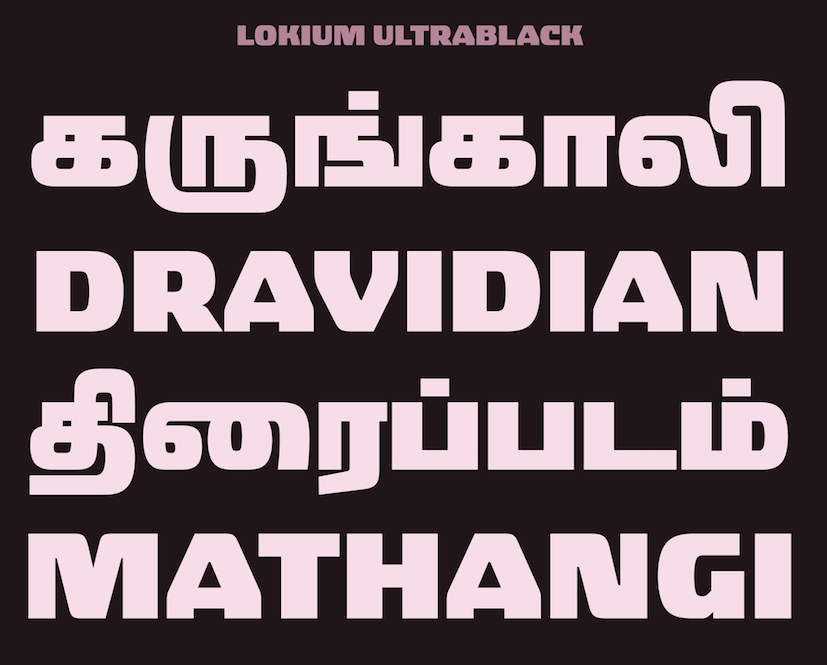 Aadarsh studies and designs Tamil letters and is based in Mumbai and Pune, India. Designer of the free font
Aadarsh studies and designs Tamil letters and is based in Mumbai and Pune, India. Designer of the free font 
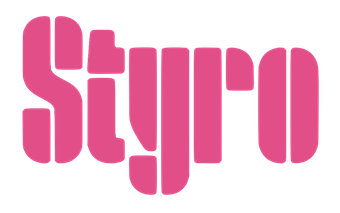 Indian designer of the technoid sans typeface
Indian designer of the technoid sans typeface  Freelance graphic designer in Pune, India. In 2020, he released the
Freelance graphic designer in Pune, India. In 2020, he released the 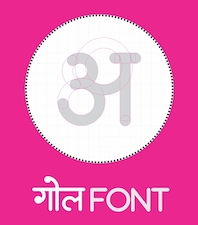 Varanasi, India-based designer of the modular Latin typeface Elegance (2016). During her studies at IIT Jabalpur, Abhilasha Jaiswal designed the compass-and-ruler monoline rounded sans typeface Gol (2016) for Devanagari. She drew a textured set of zodiac symbols, a blackletter alphabet, and a Latin poster alphabet in 2016. [
Varanasi, India-based designer of the modular Latin typeface Elegance (2016). During her studies at IIT Jabalpur, Abhilasha Jaiswal designed the compass-and-ruler monoline rounded sans typeface Gol (2016) for Devanagari. She drew a textured set of zodiac symbols, a blackletter alphabet, and a Latin poster alphabet in 2016. [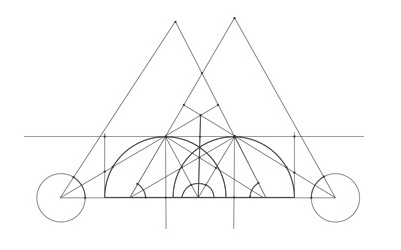 Designer in Bangalore, India. He used mathematical constructions and programming to construct his geometric typeface
Designer in Bangalore, India. He used mathematical constructions and programming to construct his geometric typeface  Type designer from Yavatmal, Maharashtra, b. 1985. He created the paperclip typeface
Type designer from Yavatmal, Maharashtra, b. 1985. He created the paperclip typeface 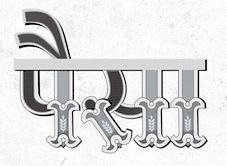 As a student in Mumbai, India, Akshata Chourey designed an Indic currency note typeface (2016) based on Ek Mukta. [
As a student in Mumbai, India, Akshata Chourey designed an Indic currency note typeface (2016) based on Ek Mukta. [ Web and graphic designer in Navsari, India, who created the calligraphic typeface Liscio (2015). [
Web and graphic designer in Navsari, India, who created the calligraphic typeface Liscio (2015). [ Kathmandu-based designer (b. 1983) of a Nepali Devanagari font families called
Kathmandu-based designer (b. 1983) of a Nepali Devanagari font families called  Graphic designer in Mumbai, India, who designed the decorative caps typeface Kala Ghoda in 2016 for the Kala Ghoda Arts Festival. [
Graphic designer in Mumbai, India, who designed the decorative caps typeface Kala Ghoda in 2016 for the Kala Ghoda Arts Festival. [ During her studies at MIT Institute of Design in Pune, Ahmedabad, India-based Anmol Chopra designed the decorative Latin / Devanagari paper cutout / beatnik typeface Clown (2016). [
During her studies at MIT Institute of Design in Pune, Ahmedabad, India-based Anmol Chopra designed the decorative Latin / Devanagari paper cutout / beatnik typeface Clown (2016). [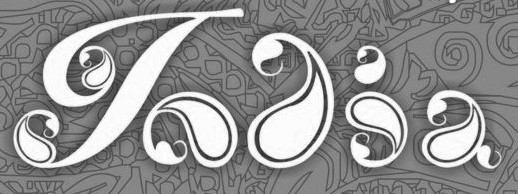 Graphic designer in Mumbai, India, who created the Indic simulation typeface Paisley (2014) and the Tibetan simulation typeface Mantra (2014). [
Graphic designer in Mumbai, India, who created the Indic simulation typeface Paisley (2014) and the Tibetan simulation typeface Mantra (2014). [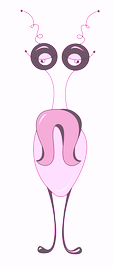 Jabalpur, India-based designer of the decorative textured typeface GustaveKlimt (2016). [
Jabalpur, India-based designer of the decorative textured typeface GustaveKlimt (2016). [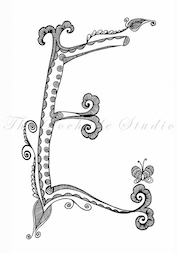 New Delhi, India-based designer of an attractive set of curly hand-drawn letters called Dreamer (2016). [
New Delhi, India-based designer of an attractive set of curly hand-drawn letters called Dreamer (2016). [ Chennai, India-based designer of the monospaced programming font Dita Grotesk (2018). [
Chennai, India-based designer of the monospaced programming font Dita Grotesk (2018). [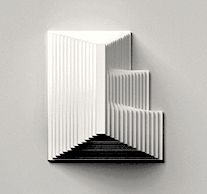 Illustrator and designer in Mumbai, India, who studied at M S University of Baroda, class of 2012. In 2017, he designed the experimental 3d typeface Imaginarium for the 3d printing company
Illustrator and designer in Mumbai, India, who studied at M S University of Baroda, class of 2012. In 2017, he designed the experimental 3d typeface Imaginarium for the 3d printing company 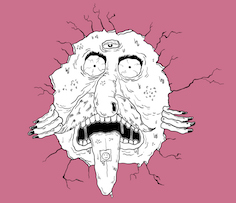 Graphic designer and talented illustrator in New Delhi. In 2018, he published the
Graphic designer and talented illustrator in New Delhi. In 2018, he published the 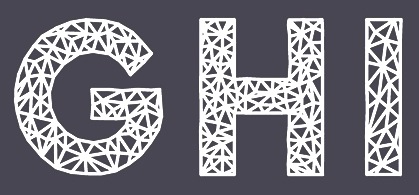 Visual designer in Chennai, India, who aspires to create India's leading design company. Creator of the great
Visual designer in Chennai, India, who aspires to create India's leading design company. Creator of the great 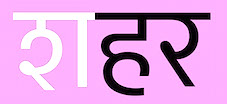 At the Industrial Design Center, IIT Bombay, Ashish Kumar designed the monolinear devanagari typeface IDC Ashish (2016-2017) for his graduation project. With 780 glyphs, it covers Hindi, Marathi and Sanskrit, and is meant to be used together with Univers.
At the Industrial Design Center, IIT Bombay, Ashish Kumar designed the monolinear devanagari typeface IDC Ashish (2016-2017) for his graduation project. With 780 glyphs, it covers Hindi, Marathi and Sanskrit, and is meant to be used together with Univers. 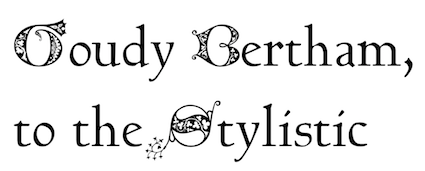 Bhikkhu Pesala, a Buddhist monk based in London, designs free fonts. His original we page was called
Bhikkhu Pesala, a Buddhist monk based in London, designs free fonts. His original we page was called 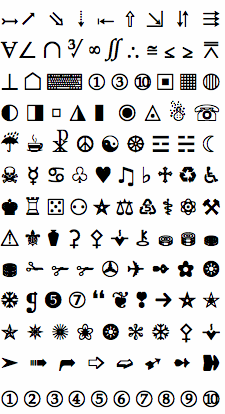 [
[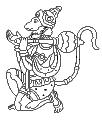 CDAC is Pune's Center for Development of Advanced Computing. They sell typefaces for all Indic languages. They introduced the Indian Script FOnt Code (ISFOC) standards to enable composing Indian language text. Scripts covered include Devnagari (Hindi, Marathi), Gujarati, Punjabi, Kannada, Bengali, Assamese, Tamil, Telugu, Malayalam, Oriya, Sanskrit, Diacritic Roman, Sinhalese, Bhutanese, Nepali, Tibetan.
CDAC is Pune's Center for Development of Advanced Computing. They sell typefaces for all Indic languages. They introduced the Indian Script FOnt Code (ISFOC) standards to enable composing Indian language text. Scripts covered include Devnagari (Hindi, Marathi), Gujarati, Punjabi, Kannada, Bengali, Assamese, Tamil, Telugu, Malayalam, Oriya, Sanskrit, Diacritic Roman, Sinhalese, Bhutanese, Nepali, Tibetan.  Lucknow, India-based designer who started out as
Lucknow, India-based designer who started out as 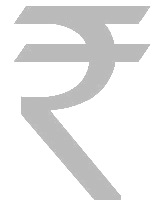 Dr. D. Udaya Kumar is an Assistant Professor at the Indian Institute of Technology Guwahati, India. He has a Ph.D. and Master's degree in Design from the Industrial Design Centre, IIT Bombay. He obtained his Bachelor's degree in Architecture from the School of Architecture and Planning, Anna University. He worked as a design head of the magazine "Intelligent Computing CHIP". His areas of interest include Visual Communication, Graphic Design, Typography, Type Design with special focus on Tamil Typography and Architecture.
Dr. D. Udaya Kumar is an Assistant Professor at the Indian Institute of Technology Guwahati, India. He has a Ph.D. and Master's degree in Design from the Industrial Design Centre, IIT Bombay. He obtained his Bachelor's degree in Architecture from the School of Architecture and Planning, Anna University. He worked as a design head of the magazine "Intelligent Computing CHIP". His areas of interest include Visual Communication, Graphic Design, Typography, Type Design with special focus on Tamil Typography and Architecture.  [
[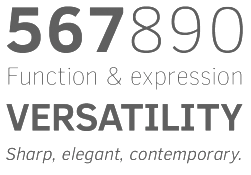 Daniel Rhatigan (
Daniel Rhatigan ( Czech designer (b. Brno) who graduated with a Masters in Informatics at the Masaryk University in Brno in 2005, spent a term at the Denmark's Designskole in Copenhagen in 2004 and graduated with distinction from the MA in Typeface Design at the
Czech designer (b. Brno) who graduated with a Masters in Informatics at the Masaryk University in Brno in 2005, spent a term at the Denmark's Designskole in Copenhagen in 2004 and graduated with distinction from the MA in Typeface Design at the  [
[ Studio in Kochi, Kerala, India. It seems that Designova is only the distributor of fonts made by Fontastica, formerly Unique Foundry, which in turn is related to NoraLisa Foundry. The early typefaces include Clarion (2016, a connected script typeface), Metzler (2016, geometric sans), Preface (2016, a sans), Berlin (2015, a geometric sans), North (2015, a display sans), Signia (2015), Solo Sans (2013), Reason Sans (2013) and Origin (2014, a Swiss sans).
Studio in Kochi, Kerala, India. It seems that Designova is only the distributor of fonts made by Fontastica, formerly Unique Foundry, which in turn is related to NoraLisa Foundry. The early typefaces include Clarion (2016, a connected script typeface), Metzler (2016, geometric sans), Preface (2016, a sans), Berlin (2015, a geometric sans), North (2015, a display sans), Signia (2015), Solo Sans (2013), Reason Sans (2013) and Origin (2014, a Swiss sans). 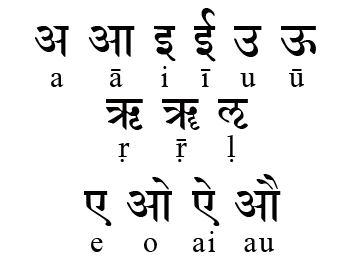 Sanskrit pages with some free fonts. [
Sanskrit pages with some free fonts. [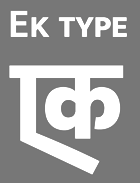 Type design collective in Mumbai, India, est. 2013, managed by Mumbai-based Sarang Kulkarni (b. 1980). Sarang studied at the Sir J J Institute of Applied Art in Mumbai, class of 2002. He worked with R.K. Joshi at the National Centre for Software Technology and Design Temple in 2002. In that same year, he assisted R.K. Joshi with the design of the Jana Gurmukhi typeface. In 2008 and 2009, he created 11 Indic typefaces for Vodafone India. In 2009-2010, he created an additional eight typefaces for Virgin Mobile India. Kulkarni also runs
Type design collective in Mumbai, India, est. 2013, managed by Mumbai-based Sarang Kulkarni (b. 1980). Sarang studied at the Sir J J Institute of Applied Art in Mumbai, class of 2002. He worked with R.K. Joshi at the National Centre for Software Technology and Design Temple in 2002. In that same year, he assisted R.K. Joshi with the design of the Jana Gurmukhi typeface. In 2008 and 2009, he created 11 Indic typefaces for Vodafone India. In 2009-2010, he created an additional eight typefaces for Virgin Mobile India. Kulkarni also runs 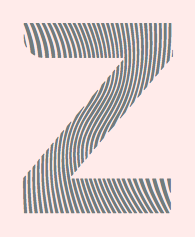 Bangalore, India-based designer of the
Bangalore, India-based designer of the  Dr. Fiona Ross, is a typographic consultant, typeface designer, lecturer and author, specializing in non-Latin scripts. Fiona holds a BA in German; a Postgraduate Diploma in Sanskrit and Pali; and a PhD in Indian Palaeography from SOAS (London University). From 1978 to 1989, Fiona Ross worked for the British arm of Linotype, Linotype Limited, where she was responsible for the design of their
Dr. Fiona Ross, is a typographic consultant, typeface designer, lecturer and author, specializing in non-Latin scripts. Fiona holds a BA in German; a Postgraduate Diploma in Sanskrit and Pali; and a PhD in Indian Palaeography from SOAS (London University). From 1978 to 1989, Fiona Ross worked for the British arm of Linotype, Linotype Limited, where she was responsible for the design of their  On the Gandhari Romanization / Gandhari Unicode fonts: These fonts are based on an original Postscript font called "Nimbus Roman No9 L" created by URW++ Design and Development Incorporated and donated to the free software community under the GNU General Public License. The Nimbus Roman No9 L font is itself based on the design for Times New Roman by Stanley Morison (original trademark holder Monotype corporation). The Gandhari fonts have been extended to display the special diacritics necessary for Sanskrit and Gandhari and come in Roman, Italic, Bold, and Bold Italic styles. The notices in the fonts say: "Based on CSX, adapted for Gandhari by Dr. John Smith (University of Cambridge), and Andrew Glass (University of Washington), Buddhist Manuscripts Project. 1997." The fonts use the Private Use Area (PUA) of Unicode for additional diacritics not available in Unicode. Here they are (free): GandhariUnicode-Bold, GandhariUnicode-BoldItalic, GandhariUnicodeItalic, GandhariUnicodeRoman, TimesGandhari2Bold, TimesGandhari2BoldItalic, TimesGandhari2Italic, TimesGandhari2Roman, TimesGandhariBold, TimesGandhariBoldItalic, TimesGandhariItalic, TimesGandhariRoman. The Gandhari Unicode font is a modification of the Times Gandhari font (which is no longer available since 2005), carried out by Andrew Glass for the British Library/University of Washington Early Buddhist Manuscripts Project between 2000 and 2003. The Times Gandhari font is a modification of the Times CSX font by Andrew Glass and John Smith in 1998. The Times CSX font in turn is a modification of the Nimbus Roman No9 L font by John Smith (http://bombay.oriental.cam.ac.uk/index.html) in 1998.
On the Gandhari Romanization / Gandhari Unicode fonts: These fonts are based on an original Postscript font called "Nimbus Roman No9 L" created by URW++ Design and Development Incorporated and donated to the free software community under the GNU General Public License. The Nimbus Roman No9 L font is itself based on the design for Times New Roman by Stanley Morison (original trademark holder Monotype corporation). The Gandhari fonts have been extended to display the special diacritics necessary for Sanskrit and Gandhari and come in Roman, Italic, Bold, and Bold Italic styles. The notices in the fonts say: "Based on CSX, adapted for Gandhari by Dr. John Smith (University of Cambridge), and Andrew Glass (University of Washington), Buddhist Manuscripts Project. 1997." The fonts use the Private Use Area (PUA) of Unicode for additional diacritics not available in Unicode. Here they are (free): GandhariUnicode-Bold, GandhariUnicode-BoldItalic, GandhariUnicodeItalic, GandhariUnicodeRoman, TimesGandhari2Bold, TimesGandhari2BoldItalic, TimesGandhari2Italic, TimesGandhari2Roman, TimesGandhariBold, TimesGandhariBoldItalic, TimesGandhariItalic, TimesGandhariRoman. The Gandhari Unicode font is a modification of the Times Gandhari font (which is no longer available since 2005), carried out by Andrew Glass for the British Library/University of Washington Early Buddhist Manuscripts Project between 2000 and 2003. The Times Gandhari font is a modification of the Times CSX font by Andrew Glass and John Smith in 1998. The Times CSX font in turn is a modification of the Nimbus Roman No9 L font by John Smith (http://bombay.oriental.cam.ac.uk/index.html) in 1998. 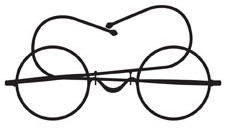 Gandhi's spectacles provided inspiration to Mumbai-based
Gandhi's spectacles provided inspiration to Mumbai-based 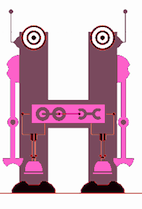 Gasoline Creative is located in Mumbai, India. It created a colorful set of decorative caps called Tesla (2015) to honor the technological genius of Nikola Tesla. Earlier, it designed the steampunk caps typeface Tesla Title (2015).
Gasoline Creative is located in Mumbai, India. It created a colorful set of decorative caps called Tesla (2015) to honor the technological genius of Nikola Tesla. Earlier, it designed the steampunk caps typeface Tesla Title (2015). 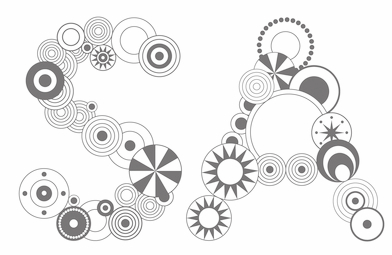 Geetika Alok is a graphic designer and works on projects in London and India. She graduated from the Royal College of Art with an MA in Communication, Art&Design and had previously completed her Bachelor's degree from the National Institute of Design with specialisation in Graphic Design. With Henrik Kubel, she designed the typeface India (2011). In 2014, she completed the TDi program at the University of Reading.
Geetika Alok is a graphic designer and works on projects in London and India. She graduated from the Royal College of Art with an MA in Communication, Art&Design and had previously completed her Bachelor's degree from the National Institute of Design with specialisation in Graphic Design. With Henrik Kubel, she designed the typeface India (2011). In 2014, she completed the TDi program at the University of Reading.  Sydney, Australia-based designer (b. Chennai, India) of the
Sydney, Australia-based designer (b. Chennai, India) of the 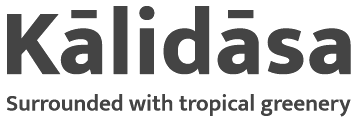 Girish Dalvi (Mumbai, India) holds a Bachelor's degree in Computer Engineering, a Master's degree in Design and a Ph.D. from IIT Bombay. His doctoral research dealt with the theoretical modeling of Devanagari typefaces. He is presently professor in the Industrial Design Center of IIT Bombay.
Girish Dalvi (Mumbai, India) holds a Bachelor's degree in Computer Engineering, a Master's degree in Design and a Ph.D. from IIT Bombay. His doctoral research dealt with the theoretical modeling of Devanagari typefaces. He is presently professor in the Industrial Design Center of IIT Bombay.  Graphite is an Indian type foundry, est. 2015 by Deepak Singh Dogra in New Delhi. They offer commercial fonts via MyFonts and free fonts through Dafont. Their typefaces include the handcrafted stone age emulation poster typeface
Graphite is an Indian type foundry, est. 2015 by Deepak Singh Dogra in New Delhi. They offer commercial fonts via MyFonts and free fonts through Dafont. Their typefaces include the handcrafted stone age emulation poster typeface 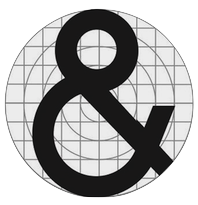 Anand, India-based designer of the circle-themed typeface Circular (2018). [
Anand, India-based designer of the circle-themed typeface Circular (2018). [ Hyderabad and/or Visakhapatnam-based creator (b. 1992) of the free outlined typeface
Hyderabad and/or Visakhapatnam-based creator (b. 1992) of the free outlined typeface 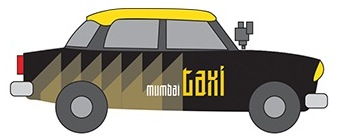 Harish Subu (Subramanian) is a Mumbai-based graphic designer and illustrator who is currently finishing his BFA degree at the School of the Art Institute of Chicago in Chicago, IL. He created a
Harish Subu (Subramanian) is a Mumbai-based graphic designer and illustrator who is currently finishing his BFA degree at the School of the Art Institute of Chicago in Chicago, IL. He created a 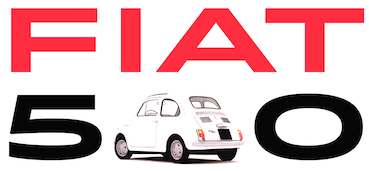 Designer of these typefaces:
Designer of these typefaces: 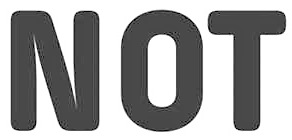 ITF is located in Ahmedabad, Gujarat, India. It was co-founded in 2009 by Peter Bilak (Typotheque) partnered with Rajesh Kejriwal (
ITF is located in Ahmedabad, Gujarat, India. It was co-founded in 2009 by Peter Bilak (Typotheque) partnered with Rajesh Kejriwal ( Indolipi is a multipurpose tool box for indologists and linguists that contains Open Type fonts for most Indian scripts, a Latin font for "instant" transliteration of Indic scripts, and a Unicode based Latin font for writing of scientific texts in a western language containing all transliteration signs used by indologists as well as all presently valid IPA signs. All fonts were made from 2004 until 2006 by Elmar Kniprath (Asien-Afrika institut, University of Hamburg, Germany): e-Bengali OT (for Assamese and Bengali), e-Grantamil (for Grantha Sanskrit, Tamil and Manipravala), e-Grantha OT (for Sanskrit), e-Gujarati OT, e-Kannada OT, e-Malayalam OT (for modern Malayalam), e-Malayalam OTC (for Malayalam with classical orthography), e-Nagari OT (for Sanskrit and Nepali), e-Nagari OTH (for Hindi), e-Nagari OTM (for Marathi), e-Nagari OTR (for Rajasthani), e-Panjabi OT (for Gurmukhi script), e-Sinhala OT, e-Tamil OT (for modern Tamil), e-Tamil OTC (for Tamil with classical orthography), e-Telugu OT, e-Latin Indic (for "instant" Latin transliteration of Indic Unicode texts), e-PhonTranslit UNI (for writing indological texts in a language based on Latin script, also containig all valid IPA signs and a lot of arrows, mathematical and logical signs).
Indolipi is a multipurpose tool box for indologists and linguists that contains Open Type fonts for most Indian scripts, a Latin font for "instant" transliteration of Indic scripts, and a Unicode based Latin font for writing of scientific texts in a western language containing all transliteration signs used by indologists as well as all presently valid IPA signs. All fonts were made from 2004 until 2006 by Elmar Kniprath (Asien-Afrika institut, University of Hamburg, Germany): e-Bengali OT (for Assamese and Bengali), e-Grantamil (for Grantha Sanskrit, Tamil and Manipravala), e-Grantha OT (for Sanskrit), e-Gujarati OT, e-Kannada OT, e-Malayalam OT (for modern Malayalam), e-Malayalam OTC (for Malayalam with classical orthography), e-Nagari OT (for Sanskrit and Nepali), e-Nagari OTH (for Hindi), e-Nagari OTM (for Marathi), e-Nagari OTR (for Rajasthani), e-Panjabi OT (for Gurmukhi script), e-Sinhala OT, e-Tamil OT (for modern Tamil), e-Tamil OTC (for Tamil with classical orthography), e-Telugu OT, e-Latin Indic (for "instant" Latin transliteration of Indic Unicode texts), e-PhonTranslit UNI (for writing indological texts in a language based on Latin script, also containig all valid IPA signs and a lot of arrows, mathematical and logical signs). 
 Mumbai, India-based designer of a Memphis-style decorative caps typeface (2018) and of the devanagari typeface Avshicha Gho (2018), which was inspired by the architectural design of the temple Padmanabh Swamy. [
Mumbai, India-based designer of a Memphis-style decorative caps typeface (2018) and of the devanagari typeface Avshicha Gho (2018), which was inspired by the architectural design of the temple Padmanabh Swamy. [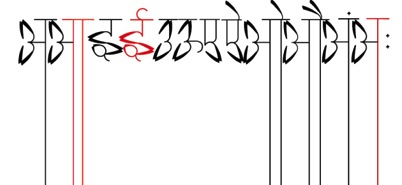 Designer in Mumbai who created the interesting Devanagari / Latin typeface Khubsurat (2013) that was inspired by lotus flowers. Earlier, she created the Photoshop-format decorative font Hagrid which is based on the physical appearance of Rubeus Hagrid, a fictional character in the Harry Potter book series written by J. K. Rowling. [
Designer in Mumbai who created the interesting Devanagari / Latin typeface Khubsurat (2013) that was inspired by lotus flowers. Earlier, she created the Photoshop-format decorative font Hagrid which is based on the physical appearance of Rubeus Hagrid, a fictional character in the Harry Potter book series written by J. K. Rowling. [ New Delhi, India-based designer of the square-shaped labyrinthine typeface Carre (2017). She also designed Urdu Drop Caps (2017). [
New Delhi, India-based designer of the square-shaped labyrinthine typeface Carre (2017). She also designed Urdu Drop Caps (2017). [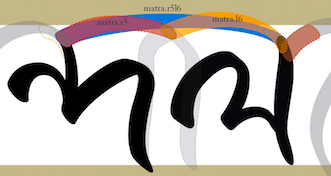 Designer who took the
Designer who took the 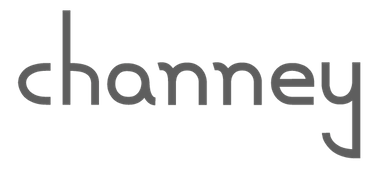 Bangalore-based designer of
Bangalore-based designer of  Jamie Otelsberg is a visual designer originally from Los Angeles, CA, and living in Essen, Germany. She is currently working for a Bay Area-based design firm and volunteering at a human-computer interaction lab in Kerala, India. She currently works at OH No Type Co. in Oakland, California.
Jamie Otelsberg is a visual designer originally from Los Angeles, CA, and living in Essen, Germany. She is currently working for a Bay Area-based design firm and volunteering at a human-computer interaction lab in Kerala, India. She currently works at OH No Type Co. in Oakland, California. 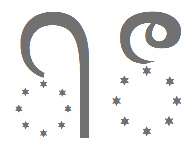 Jonathan (Jonny) Pinhorn is a British type designer and India enthusiast who obtained an MA in typeface design from
Jonathan (Jonny) Pinhorn is a British type designer and India enthusiast who obtained an MA in typeface design from 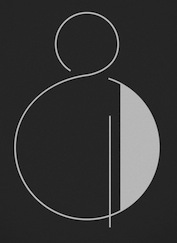 Mumbai-based designer of the Latin art deco typeface
Mumbai-based designer of the Latin art deco typeface 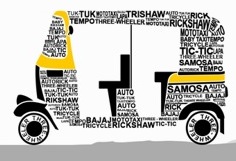 Ahmedabad, India-based designer of a nice typographic poster called
Ahmedabad, India-based designer of a nice typographic poster called  During her studies in Pune, India, Kalyani Rajguru designed a set of art nouveau capitals (2016) and a lively sans disaply typeface, Peppy (2016). [
During her studies in Pune, India, Kalyani Rajguru designed a set of art nouveau capitals (2016) and a lively sans disaply typeface, Peppy (2016). [ Graphic designer in Pune, India. Designer of the rounded marker typeface Bublont (2017), which comes with shaded, outlined and coloured substyles.
Graphic designer in Pune, India. Designer of the rounded marker typeface Bublont (2017), which comes with shaded, outlined and coloured substyles. 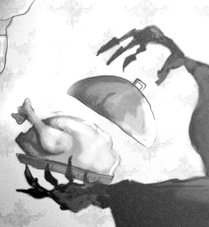 During her graphic design studies at the National Institute of Design, Ahmedabad, India, Khyati Trehan created a decorative scientific all-caps alphabet (2013).
During her graphic design studies at the National Institute of Design, Ahmedabad, India, Khyati Trehan created a decorative scientific all-caps alphabet (2013). 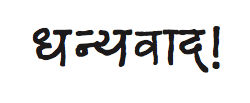 Kimya Gandhi from Mumbai, India, holds a Bachelors degree in Communication Design from National Institute of Fashion Technology, Bombay (NIFT). She further went on to pursue specialization in the form of a post-graduate degree in Visual Communication at the Industrial Design Centre (IDC), IIT Bombay. Kimya interned with Linotype GmbH, Germany, in their font design department in 2010. Over the next several years she worked as a freelance designer for numerous type foundries catering to their multi-script requirements. She graduated from the TDi program at the University of Reading in 2012. Since 2015 she is a partner at Mota Italic in Berlin focusing on Indic and Latin designs for retail and custom corporate projects. Kimya teaches typography and type design at design institutes like Symbiosis Institute of Design and NIFT, and is currently designing and researching Indian script typefaces.
Kimya Gandhi from Mumbai, India, holds a Bachelors degree in Communication Design from National Institute of Fashion Technology, Bombay (NIFT). She further went on to pursue specialization in the form of a post-graduate degree in Visual Communication at the Industrial Design Centre (IDC), IIT Bombay. Kimya interned with Linotype GmbH, Germany, in their font design department in 2010. Over the next several years she worked as a freelance designer for numerous type foundries catering to their multi-script requirements. She graduated from the TDi program at the University of Reading in 2012. Since 2015 she is a partner at Mota Italic in Berlin focusing on Indic and Latin designs for retail and custom corporate projects. Kimya teaches typography and type design at design institutes like Symbiosis Institute of Design and NIFT, and is currently designing and researching Indian script typefaces. 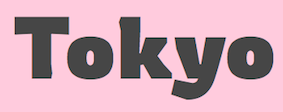 Mumbai, India-based designer of these Latin typefaces:
Mumbai, India-based designer of these Latin typefaces: 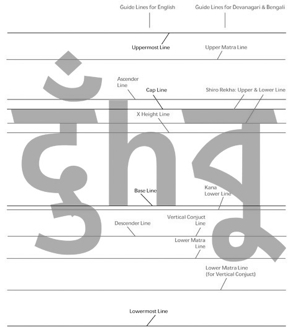 Indian type designer and typographer who received the Gutenberg Prize in 2010. Professor Patel retired from the National Institute of Design, Ahmedabad, in 2003, and presently s an adjunct professor at Symbiosis Institute of Design and MIT Institute of Design, both at Pune. His type design activities:
Indian type designer and typographer who received the Gutenberg Prize in 2010. Professor Patel retired from the National Institute of Design, Ahmedabad, in 2003, and presently s an adjunct professor at Symbiosis Institute of Design and MIT Institute of Design, both at Pune. His type design activities:  Mumbai-based codesigner of Modak Devanagari together with Sarang Kulkarni. The bubblegum typeface family Modak (Latin & Devanagari) was published in the
Mumbai-based codesigner of Modak Devanagari together with Sarang Kulkarni. The bubblegum typeface family Modak (Latin & Devanagari) was published in the 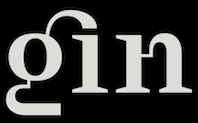 [
[ Graphic designer studying at the University of the Arts in London in 2012. In 2012, Manosij carried out a
Graphic designer studying at the University of the Arts in London in 2012. In 2012, Manosij carried out a  Indian type designer associated with the
Indian type designer associated with the 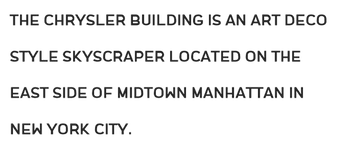 ManVsType is the professional type design practice of New Delhi-based designer Manav Dhiman. During his studies at MIT Institute of Design, Mumbai-based Manav Dhiman created the art deco typeface Chrysler (2016), which is named after New York's Chrysler building. In 2015, he designed various sets of icons, such as Dressing Up, and Connection.
ManVsType is the professional type design practice of New Delhi-based designer Manav Dhiman. During his studies at MIT Institute of Design, Mumbai-based Manav Dhiman created the art deco typeface Chrysler (2016), which is named after New York's Chrysler building. In 2015, he designed various sets of icons, such as Dressing Up, and Connection.  Graduate of the National Institute of Design, India and a self-taught photographer, originally from Rajasthan, but now based in New Delhi. He made the experimental gridded typeface
Graduate of the National Institute of Design, India and a self-taught photographer, originally from Rajasthan, but now based in New Delhi. He made the experimental gridded typeface  The list of new fonts in Windows 7 in 2009:
The list of new fonts in Windows 7 in 2009:  Foundry, est. 2009 by Rob and Sonja Keller. Originally located in Berlin, Mota Italic is a type design studio specializing in unique, extensive type families. It relocated to Mumbai, India, at the end of 2014, and moved back to Berlin in 2020.
Foundry, est. 2009 by Rob and Sonja Keller. Originally located in Berlin, Mota Italic is a type design studio specializing in unique, extensive type families. It relocated to Mumbai, India, at the end of 2014, and moved back to Berlin in 2020.  Namrata (Bangalore and later Ahmedabad, India) graduated as a visual communication designer from Srishti School of Art, Design and Technology in Bangalore, India. After a couple of years of drawing type at Indian Type Foundry, she went on to pursue the discipline further at Cooper Union in New York and received her Masters in Type and Media at KABK Den Haag, The Netherlands, in 2018. Her typefaces:
Namrata (Bangalore and later Ahmedabad, India) graduated as a visual communication designer from Srishti School of Art, Design and Technology in Bangalore, India. After a couple of years of drawing type at Indian Type Foundry, she went on to pursue the discipline further at Cooper Union in New York and received her Masters in Type and Media at KABK Den Haag, The Netherlands, in 2018. Her typefaces: 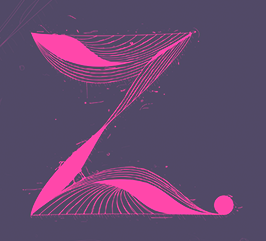 Rajesh Rajput (since 2014 with Cognizant Technologies, Gurgaon / Delhi, India) designed the
Rajesh Rajput (since 2014 with Cognizant Technologies, Gurgaon / Delhi, India) designed the  Indian designer in Tiruchirappalli, b. 1989. FontStructor who made these typefaces in 2010:
Indian designer in Tiruchirappalli, b. 1989. FontStructor who made these typefaces in 2010: 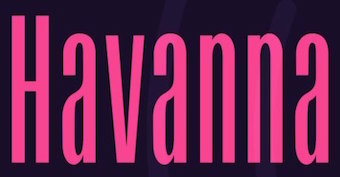 Or Navi Singh. Hoshiarpur, India-based designer of the handcrafted typefaces Quazy (2017) and Star Tail Script (2017, a rhythmic signage script).
Or Navi Singh. Hoshiarpur, India-based designer of the handcrafted typefaces Quazy (2017) and Star Tail Script (2017, a rhythmic signage script).  During her studies in Pune, India, Nayantara Pande created the experimental poster typeface Provocateur (2014). [
During her studies in Pune, India, Nayantara Pande created the experimental poster typeface Provocateur (2014). [ Indian graduate from the type design program at the
Indian graduate from the type design program at the 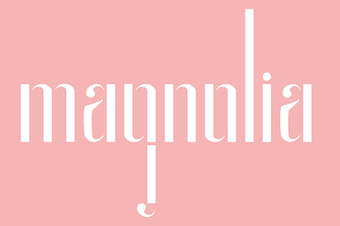 During her studies in Pune, India, eha Nandre created the slender Latin display typeface Magnolia (2016). [
During her studies in Pune, India, eha Nandre created the slender Latin display typeface Magnolia (2016). [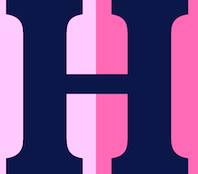 Indian type designer. In 2015, Nikhil designed the medium x-height text and headline typeface
Indian type designer. In 2015, Nikhil designed the medium x-height text and headline typeface  Digital artist Nilesh Singh (Mumbai, India) created the spiral typeface
Digital artist Nilesh Singh (Mumbai, India) created the spiral typeface 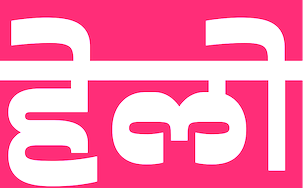 Baltimore, MD-based designer of Munshi Devanagari (2014), which was conceived during his diploma project at Indian Type Foundry a typeface for immersive reading. In 2016, Ninad was pursuing an MFA at the Maryland Institute College of Art (MICA). In that same year, he designed the high-contrast Koyla Devanagari typeface, and the Devanagari-inspired Latin typeface Chaplin. [
Baltimore, MD-based designer of Munshi Devanagari (2014), which was conceived during his diploma project at Indian Type Foundry a typeface for immersive reading. In 2016, Ninad was pursuing an MFA at the Maryland Institute College of Art (MICA). In that same year, he designed the high-contrast Koyla Devanagari typeface, and the Devanagari-inspired Latin typeface Chaplin. [
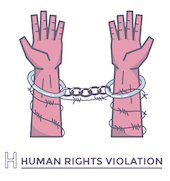 Graduate of the
Graduate of the  [
[ Type and graphic designer from Joseph City, AZ. His first degree was from Brigham Young University. He was a type designer at
Type and graphic designer from Joseph City, AZ. His first degree was from Brigham Young University. He was a type designer at 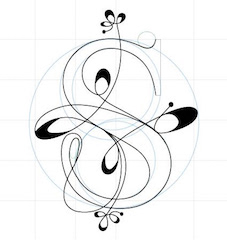 Mumbai, India-based designer of the display typefaces Ornate (2018: based on a Times Roman skeleton) and Pisces (2018). [
Mumbai, India-based designer of the display typefaces Ornate (2018: based on a Times Roman skeleton) and Pisces (2018). [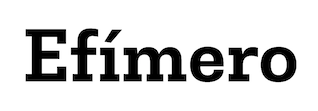 Indian graduate of New Delhi's National Institute of Fashion Technology and the
Indian graduate of New Delhi's National Institute of Fashion Technology and the  Bangalore, India-based graphic designer. He created
Bangalore, India-based graphic designer. He created  Vector illustrator and graphic designer in Mumbai, India. Creator of the display typeface
Vector illustrator and graphic designer in Mumbai, India. Creator of the display typeface  Typography professor R.K. Joshi's pages. He was born in 1936 in Kolhapur, Maharashtra, India, and died in San Francisco in 2008. He was a poet, calligrapher, designer, researcher, teacher and
Typography professor R.K. Joshi's pages. He was born in 1936 in Kolhapur, Maharashtra, India, and died in San Francisco in 2008. He was a poet, calligrapher, designer, researcher, teacher and 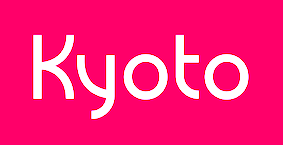 Mumbai, India-based designer of the display typeface Darek (2017), which has a
Mumbai, India-based designer of the display typeface Darek (2017), which has a 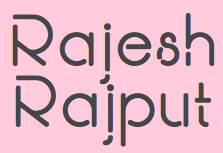 [
[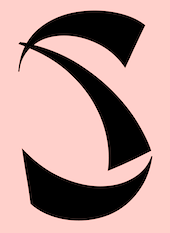 Kolkata, India-based designer of the Japanese brush typeface Shinzo (2018). [
Kolkata, India-based designer of the Japanese brush typeface Shinzo (2018). [ Indian designer of the horizontally-striped typeface Beato-ExtraBoldHeadline (2014) and the frothy Fizzo (2015). [
Indian designer of the horizontally-striped typeface Beato-ExtraBoldHeadline (2014) and the frothy Fizzo (2015). [ Ryan Anthony (Roasted Coffee Studios, Kolkata, India) designed the handcrafted Pine & Oak (2015), the rounded web serif beer label typeface Carlson (2015), the bribeware rounded sans typeface Camp (2015) and the
Ryan Anthony (Roasted Coffee Studios, Kolkata, India) designed the handcrafted Pine & Oak (2015), the rounded web serif beer label typeface Carlson (2015), the bribeware rounded sans typeface Camp (2015) and the 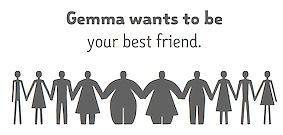 [
[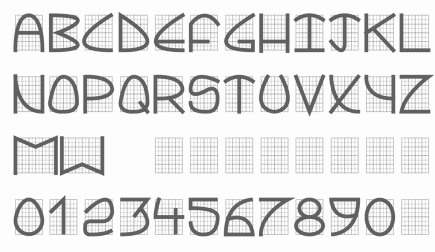 Graduate of the College of Fine Arts in Bangalore, India. Still based in bangalore, Rohit designed the informal Latin typeface Rustyc (2014, advertised as bullet-proof, curvy yet tough) and the futuristic Latin typeface Space Age (2014). [
Graduate of the College of Fine Arts in Bangalore, India. Still based in bangalore, Rohit designed the informal Latin typeface Rustyc (2014, advertised as bullet-proof, curvy yet tough) and the futuristic Latin typeface Space Age (2014). [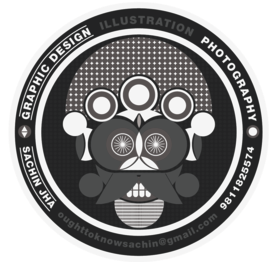 Graphic designer in New Delhi, who started the India Font Project, which is concerned with vernacular type in India. He created an
Graphic designer in New Delhi, who started the India Font Project, which is concerned with vernacular type in India. He created an  Indian illustrator and graphic designer who lives in Ahmadabad. He used lamps and wires to create the
Indian illustrator and graphic designer who lives in Ahmadabad. He used lamps and wires to create the  Salomi Desai is a type and graphic designer from Mumbai, India. Graduate of Central Saint Martins, UK (class of 2014) and of the postgraduate program in type design at
Salomi Desai is a type and graphic designer from Mumbai, India. Graduate of Central Saint Martins, UK (class of 2014) and of the postgraduate program in type design at  Graphic design graduate of the National Institute of Design, Ahmedabad, who is from New Delhi. In 2012, during his studies, he created
Graphic design graduate of the National Institute of Design, Ahmedabad, who is from New Delhi. In 2012, during his studies, he created 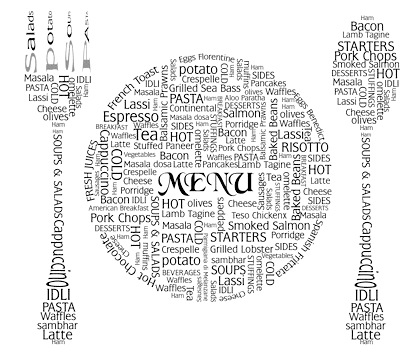 During studies at IBD in Mumbai, Sandeep Suman Mishra created a
During studies at IBD in Mumbai, Sandeep Suman Mishra created a 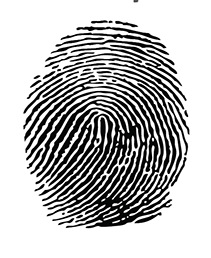 For a school project, Sanjooli Goel (Jaipur, India) designed the display typeface Pen Nib (2016) and the textured fingerprint typeface Thumb Impression (2016). [
For a school project, Sanjooli Goel (Jaipur, India) designed the display typeface Pen Nib (2016) and the textured fingerprint typeface Thumb Impression (2016). [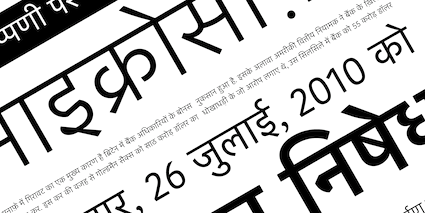 Satya is co-founder of the
Satya is co-founder of the 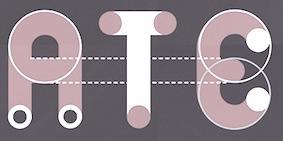 New Delhi, India-based designer of the circle-based rounded sans typeface Spry (2016) which was constructed with compass and ruler.
New Delhi, India-based designer of the circle-based rounded sans typeface Spry (2016) which was constructed with compass and ruler. 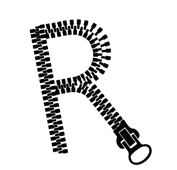 Moradabad, India-based designer of the Latin display typeface Zipper (2016). [
Moradabad, India-based designer of the Latin display typeface Zipper (2016). [ British calligrapher, signwriter, lettering artist, and type designer. He teaches typography at Stafford College and is a Research Fellow at the University of Lincoln. His typefaces:
British calligrapher, signwriter, lettering artist, and type designer. He teaches typography at Stafford College and is a Research Fellow at the University of Lincoln. His typefaces: 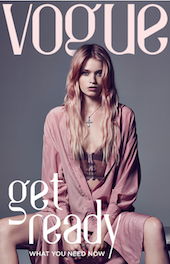 Kochi, India-based designer of the blackboard bold typeface Achi (2015) and the
Kochi, India-based designer of the blackboard bold typeface Achi (2015) and the 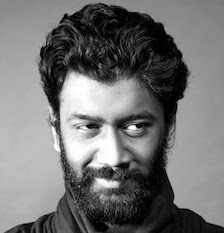 Graphic designer from Chennai, who created the octagonal typeface
Graphic designer from Chennai, who created the octagonal typeface 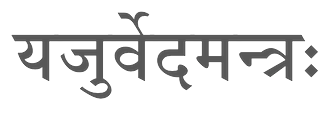 A free Devanagari / Latin / Cyrillic typeface developed at IIT Bombay in 2016 in the context of the
A free Devanagari / Latin / Cyrillic typeface developed at IIT Bombay in 2016 in the context of the 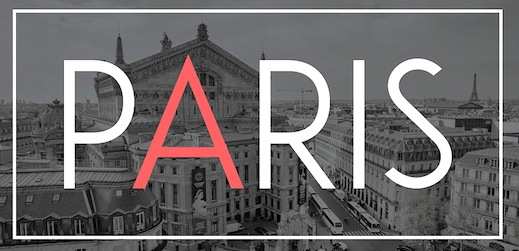 New York City (and before that, Mumbai, India)-based designer of the
New York City (and before that, Mumbai, India)-based designer of the 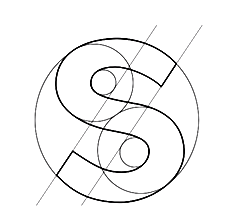 Pune, India-based designer of the bold sans typeface Vanilla (2015). [
Pune, India-based designer of the bold sans typeface Vanilla (2015). [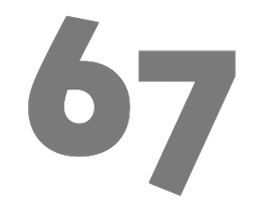 In 2019, Sijya Gupta and Heidi Rand Sorensen designed the experimental monolinear sans typeface
In 2019, Sijya Gupta and Heidi Rand Sorensen designed the experimental monolinear sans typeface 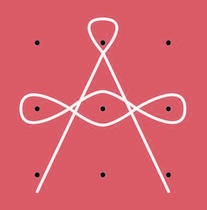 Graphic designer in Bangalore, India, who created the connect-the-dots typeface Rangoli (2014). [
Graphic designer in Bangalore, India, who created the connect-the-dots typeface Rangoli (2014). [ Indian graphic designer who lives in Jersey City.
Indian graphic designer who lives in Jersey City.  New Providence, NJ-based designer of the spurred typeface Arch (2014). Inspiration came from Indian Mughal arches, and the application Sonal had in mind was fashion magazines. Arch was created for a course at SVA (School of Visual Arts) in New York. She also created a set of pictograms for Ariisto Realtors in Mumbai. [
New Providence, NJ-based designer of the spurred typeface Arch (2014). Inspiration came from Indian Mughal arches, and the application Sonal had in mind was fashion magazines. Arch was created for a course at SVA (School of Visual Arts) in New York. She also created a set of pictograms for Ariisto Realtors in Mumbai. [ The
The 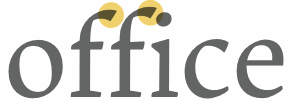 Eben Sorkin obtained an MA in typeface design from
Eben Sorkin obtained an MA in typeface design from 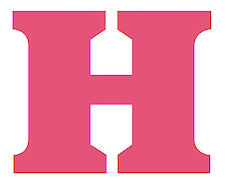 Designer in New Delhi, India, who created the sturdy wedge serif typeface Gallant in 2016. [
Designer in New Delhi, India, who created the sturdy wedge serif typeface Gallant in 2016. [ Belgian type designer (b. Brussels, 1974) who lived in Kessel-Lo, and is now based in Antwerp.
Belgian type designer (b. Brussels, 1974) who lived in Kessel-Lo, and is now based in Antwerp.  Typographer and graphic designer in Ahmedabad, India. He created the blocky
Typographer and graphic designer in Ahmedabad, India. He created the blocky 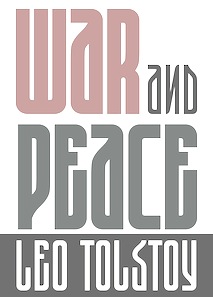 Senior designer in Banagalore. Creator of the Latin / Cyrillic constructivist typeface
Senior designer in Banagalore. Creator of the Latin / Cyrillic constructivist typeface 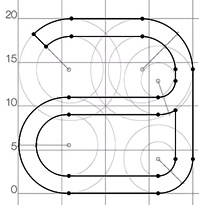 During his studies, Surjmani Laishram created the modular grid-based monoline sans typeface Morphé (2015).
During his studies, Surjmani Laishram created the modular grid-based monoline sans typeface Morphé (2015). 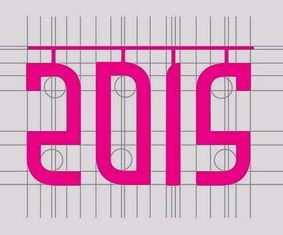 During her communication design studies in Pune, India, Swapna Patwardhan created the Indic (Devanagari) simulation typeface Vilayati (2015). [
During her communication design studies in Pune, India, Swapna Patwardhan created the Indic (Devanagari) simulation typeface Vilayati (2015). [ [
[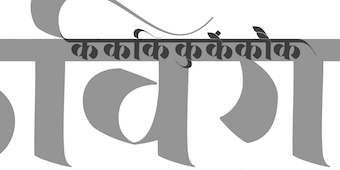 Type designer from India who graduated from the
Type designer from India who graduated from the  [
[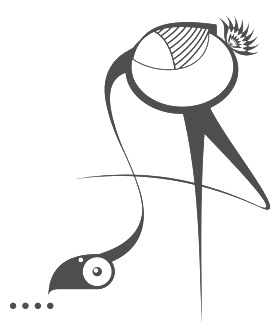 Mumbai-based studio that created the bird-inspired typeface Tale ofWwings and the thin geometric typeface H2O in 2014.
Mumbai-based studio that created the bird-inspired typeface Tale ofWwings and the thin geometric typeface H2O in 2014.  Typeoff was an Offenbach-based German type collective, est. 2004 by Daniel John Andrew Reynolds (b. 1979, Baltimore, MD), who blogs happily and frequently. Dan grew up in various cities in the USA, received a BFA in graphic design from the Rhode Island School of Design (RISD) in 2002, and moved to Germany in 2003 to study typography with Professor Fritz Friedl at Hochschule für Gestaltung in Offenbach. Dan was an intern at Linotype, and is still affiliated with Linotype. In 2004, he founded Typeoff.de. In 2007 he moved to the University of Reading for an MA in typeface design. Afterwards, he returned to Germany where he is based in Berlin and, for some time. In 2017, he helped Jan Middendorp set up the new foundry
Typeoff was an Offenbach-based German type collective, est. 2004 by Daniel John Andrew Reynolds (b. 1979, Baltimore, MD), who blogs happily and frequently. Dan grew up in various cities in the USA, received a BFA in graphic design from the Rhode Island School of Design (RISD) in 2002, and moved to Germany in 2003 to study typography with Professor Fritz Friedl at Hochschule für Gestaltung in Offenbach. Dan was an intern at Linotype, and is still affiliated with Linotype. In 2004, he founded Typeoff.de. In 2007 he moved to the University of Reading for an MA in typeface design. Afterwards, he returned to Germany where he is based in Berlin and, for some time. In 2017, he helped Jan Middendorp set up the new foundry 
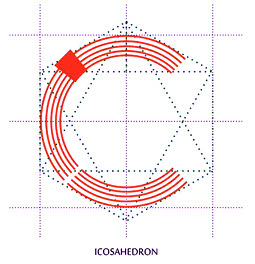 For a school project at College of Art, Chandigarh, India, in 2015-2016, Vibha Jindal designed Kairos, a Latin typeface that is inspired by ancient Greek architecture. [
For a school project at College of Art, Chandigarh, India, in 2015-2016, Vibha Jindal designed Kairos, a Latin typeface that is inspired by ancient Greek architecture. [ Vicky Chindaliya (Faridabad, India, b. 1990) created a hilarious CV well worth mentioning on my pages. This work was done during his studies. [
Vicky Chindaliya (Faridabad, India, b. 1990) created a hilarious CV well worth mentioning on my pages. This work was done during his studies. [ New Delhi, India and Treviso, Italy-based designer of the elliptical sans typeface Boho Sans (2008). [
New Delhi, India and Treviso, Italy-based designer of the elliptical sans typeface Boho Sans (2008). [ Ukrainian designer, b. Kiev, 1957. Graduate of the Senior College for Print and Design in Kiev in 1982. Viktor became art director at Sphera in Kiev. Main type designer at Düsseldorf-based company Unique GmbH since 1998. In 2012, he cofounded
Ukrainian designer, b. Kiev, 1957. Graduate of the Senior College for Print and Design in Kiev in 1982. Viktor became art director at Sphera in Kiev. Main type designer at Düsseldorf-based company Unique GmbH since 1998. In 2012, he cofounded 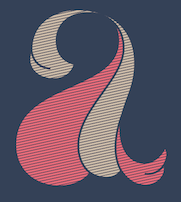 WhiteCrow is a type foundry and design studio founded by Sarang Kulkarni in Mumbai in 2005. It specializes in multilingual branding, type design and calligraphy. A collective of type designers, the White Crow team creates customized typefaces for all Indian scripts, including Devanagari, Bangla, Gujarati, Tamil, Telugu, Kannada, Malayalam, Gurmukhi, Meitei Mayek (Manipuri), Oriya and Urdu. Their typefaces:
WhiteCrow is a type foundry and design studio founded by Sarang Kulkarni in Mumbai in 2005. It specializes in multilingual branding, type design and calligraphy. A collective of type designers, the White Crow team creates customized typefaces for all Indian scripts, including Devanagari, Bangla, Gujarati, Tamil, Telugu, Kannada, Malayalam, Gurmukhi, Meitei Mayek (Manipuri), Oriya and Urdu. Their typefaces:  During his architecture studies at Indian Institute of Technology Roorkee (India), Yash H. Bharani designed the
During his architecture studies at Indian Institute of Technology Roorkee (India), Yash H. Bharani designed the 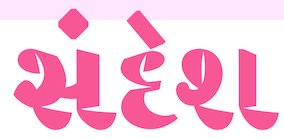 Type designer from Bangalore, India who graduated from the
Type designer from Bangalore, India who graduated from the